How to fly with film
Airport X-rays can fog and/or ruin your film—here's how to stop that from happening.
By Aaron Gold | Updated Dec 22, 2023 11:57 AM EST
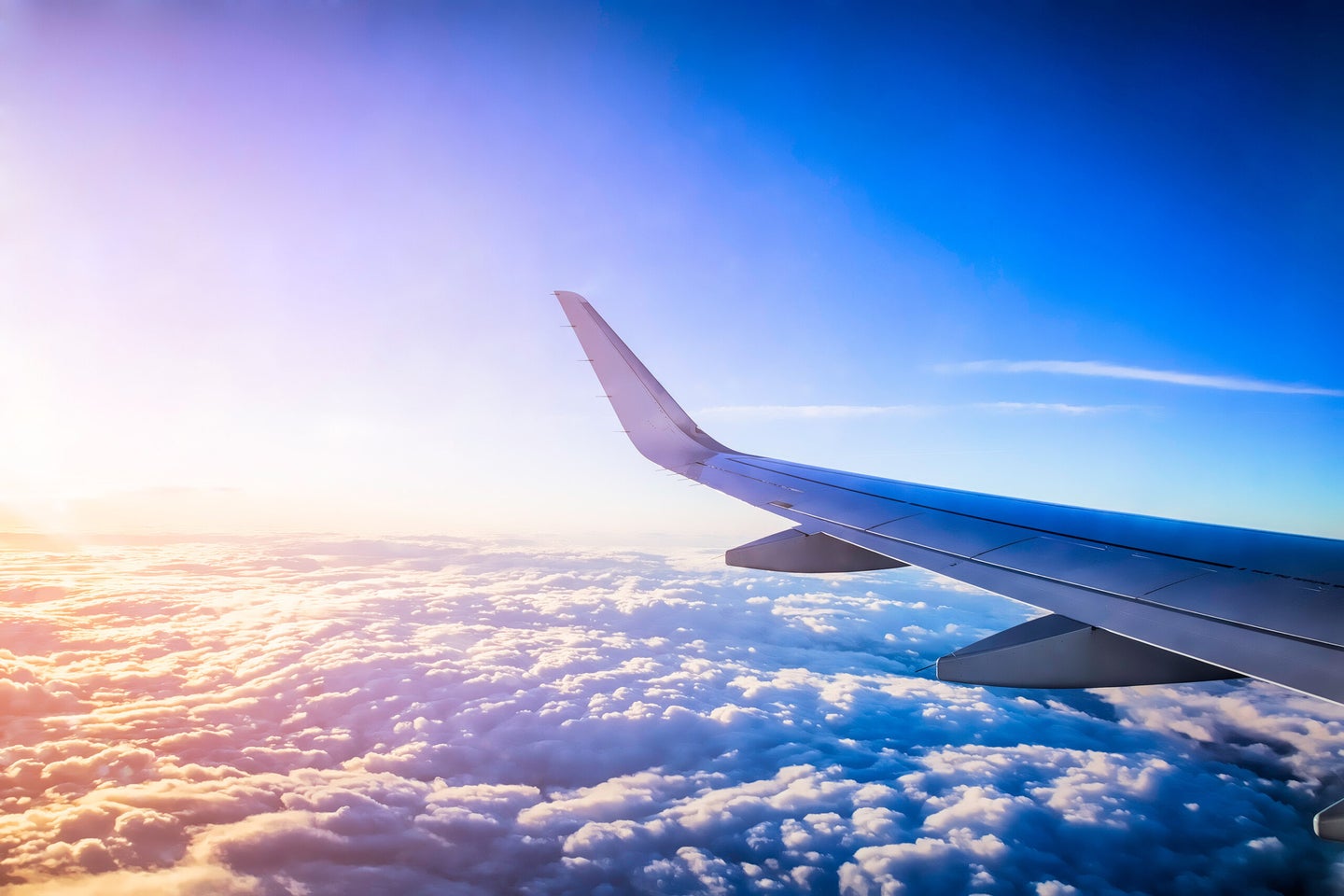
In this section of our three-part series about traveling with film , we’ll talk about the mode of travel most fraught with peril for film photographers: Flying. Back in the pre-digital days, flying with film was a no-brainer; you could pack your camera gear and buy all the film you needed at your destination (and perhaps get it developed there as well). Today, film is harder to find and airport security is tighter (and potentially more harmful to film), so airborne analog photographers have to do a bit more planning.
(Note that the information in this article is specific to air travel in the United States. Other countries may—and likely will—have different regulations and procedures.)

The primary problem facing film fans who fly
Related: How to travel with film by land and sea
Here’s the big problem for airborne film photographers: The scanners and X-ray machines used for luggage inspection produce light energy to which film is sensitive. These machines can potentially “fog” your film, causing dark spots or waves on the negatives (or light spots on slides) as if the film had been exposed to light. So the challenge when flying is to minimize or avoid situations that could potentially damage your film.
Note that only undeveloped film is subject to damage. Developed negatives, slides, and prints are no longer light sensitive and cannot be damaged by airport security equipment.
Can you avoid X-rays altogether?
Depending on your destination, it may be possible to avoid bringing film through the airport altogether. If you’re traveling to a big city, you might be able to buy your film locally. If you’re staying at a high-end hotel with a concierge, they may even be able to buy film for you (but beware of hefty prices and fees). You may also be able to mail-order film and have it sent directly to your lodgings; check with the property first to see if they can receive packages (and bring a couple of rolls in case your shipment is lost or delayed). Likewise, if you use mail-order film processing, consider sending the film off for development from your destination before you leave for home.
Never put film in a ‘checked’ bag
Do not put unexposed or undeveloped film in checked baggage , ever. The scanners used for checked baggage are more powerful than those used in carry-on luggage and will very likely fog your film. Film and loaded cameras should always be taken in carry-on luggage.

Related: Going back to film? Here’s what’s changed
A related side note: When booking your airline tickets, beware of “Basic Economy” tickets, which do not always allow carry-on baggage beyond a small personal item. Buyers of these tickets often board last, when carry-on storage is full, and will sometimes be forced to check their baggage (for a hefty fee), where it could be subject to harmful scanning at stopovers. If you are traveling with film, make sure your air ticket allows you to bring carry-on luggage, and pack your film (and cameras) in a bag small enough to join you in the cabin.
Film in carry-on baggage: Ask for a ‘hand inspection’
The Transportation Security Administration (TSA) says that the X-ray machines it uses for carry-on baggage are safe for photographic film up to ISO 800*. We’ve had slower film scanned with no ill effects, but we also understand that the effects are cumulative and that multiple scans may cause fogging. (We asked TSA if we could run some test scans at our local airport; they politely denied our request, citing security concerns.)
Fortunately, there is one good way to ensure your film will not be damaged: Ask for your film to be “hand inspected,” regardless of its speed.
*Note that at some airports, TSA is introducing more powerful CT scanners for carry-on luggage, which can damage even slower-speed film.
The PopPhoto guide to hand inspections
First: We recommend being patient and polite with TSA agents. Remember that their first responsibility is security, not customer service—and also that they’re subject to a lot of vented frustrations from harried passengers. There’s no need to show fealty; simple politeness and civility will get you a long way.
Film photography is popular enough that most TSA agents should be familiar with hand-scanning requests, but it does slow their workflow. When traveling with film, we always allow an extra ten to fifteen minutes to get through security (a margin we rarely need).
We recommend carrying your film in a clear plastic zip-lock-style bag, with which TSA is familiar. Leave your rolls in their plastic canisters and/or sealed packaging whenever possible. We try to keep our cameras unloaded so they can pass through the X-ray machine, but loaded cameras can also be hand-scanned. Anything you’d like hand-inspected should be kept where it’s easily accessible; a backpack is preferable to a suitcase that must be unzipped.
Before we put our luggage on the belt, we remove our film and loaded cameras, catch the eye of the nearest TSA agent, and say, “I have some film (and cameras) I’d like to have hand-inspected, please.” If asked if the film is under ISO 800 we either say no or (to avoid fibbing) tell them it’s going to be pushed and shot at a higher speed. (They may not know what this means but will generally accept it.)

After walking through the scanners we try to stand somewhere conspicuous without blocking the flow of passengers. Film is usually checked by the same agents inspecting bags that have been pulled for secondary inspection, so there may be a wait. The inspection usually consists of swabbing the individual rolls, then putting the swab in a machine that checks for explosive residue. We’ve occasionally had requests to open boxes and always say yes (so long as they don’t pull your film out of the canister or unspool your 120 rolls, it’ll be fine). Once the machine gives the agent the green light, you’ll likely be sent on your way.
Going home: Have all film hand inspected
Once your film has been shot, it’s still sensitive to light and can still be damaged by scanners, so be sure to have all of your film, shot or not, inspected by hand. We must reiterate: Do not put undeveloped film in checked bags .
If you’ve had your film developed while on vacation, there’s nothing to worry about—as we mentioned earlier, developed film, negatives, prints and slides are not light-sensitive. You can safely put them through the scanners or in your checked baggage.
What about lead-lined film bags?
Several manufacturers offer lead-lined film bags that claim to protect the film from X-rays. (We do not know if these bags protect against CT scanners.) We haven’t tried one in recent years, but if the bags do block X-rays, they will likely show up as a large dark blob on the security scan, which is likely to trigger a secondary inspection. We find it easier to simply request a hand inspection and avoid the inconvenience of having TSA unpack our bags.
Advice for other countries
While we’ve never had a request for hand-scanning denied in the US, we have been refused in Europe, and we don’t know if this was down to security procedures or a language barrier. For this reason, if you do travel with analog cameras overseas, consider bringing a slower-speed film, which is most likely to survive scanning with no ill effects. That said, we understand that some European countries are also introducing CT scanners for hand luggage, which is much more likely to fog film.
Ultimately, it’s best to check the official website for the security agency of the country to which you are traveling. If they don’t have a clear-cut policy covering film, you might want to consider traveling with a digital camera or making provisions to mail your film home before you leave.

Aaron Gold is a contributor to PopPhoto, writing primarily about all things related to film and film photography. An automotive journalist by day, Aaron is an avid film photographer (also by day, because he doesn’t much care for flash photos), his shelves overflowing with a rag-tag fleet of 35mm and medium-format film cameras.
Want more photography techniques, camera reviews, and inspiration?
Sign up for Popular Photography's newsletter and join the club.

How To Fly Confidently with Film: Tips for Flying with 35mm, Medium Format, Instant film, and Disposable Cameras
Film-based photography has risen in popularity over the last few years due to social media introducing the medium to new audiences. Many want to bring film cameras to document their travels in addition or in place of a digital camera and/or smartphone. With the X-ray scanners used by airport security, many photographers are worried that their film may be ruined.
To safely fly with film, put your unprocessed film and camera in a heavy duty, clear bag, store it in your carry-on luggage, and ask a TSA official to hand check it to avoid being scanned by X-rays. The unprocessed film should also never be stored in checked luggage since checked bags go through even stronger X-rays which will definitely ruin your film. Also, consider applying for TSA Pre-Check when flying with film to avoid much of the hassle .
You can do a few specific things to avoid your film getting destroyed due to airport security measures. Let’s go into more detail about specific film types and other things you should look out for before taking film onto a plane. Keep reading to learn more.
Older X-Ray Scanners vs New CT scanners
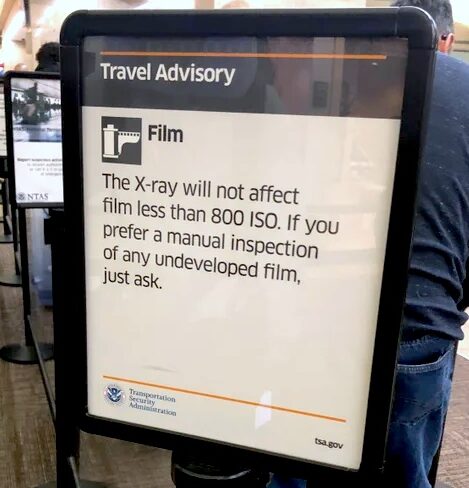
In the past, airport X-ray scanners for security checkpoints were not very strong and allowed for film less than 800 ISO to pass through several times before any damage like fogging to occur. However, scanners used for checked luggage have always been much stronger than those used for carry-on luggage and would damage any kind of film at any ISO rating.
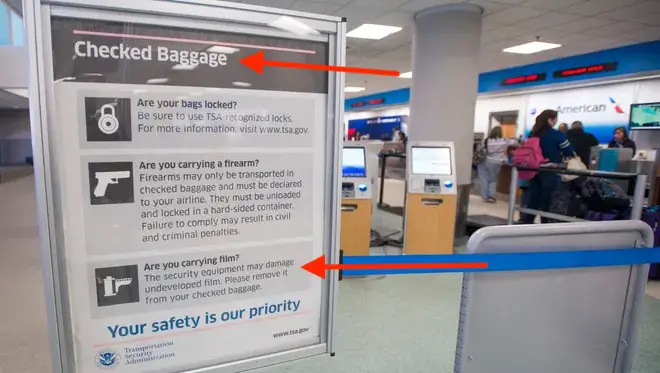
Do the Newest Airport Security Scanners Harm Photographic Film?
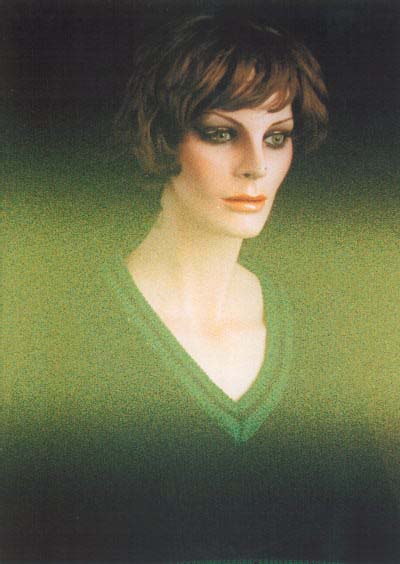
Which Airports Use the New CT Scanners?
- Hartsfield-Jackson Atlanta International Airport (ATL)
- Baltimore-Washington International Airport (BWI)
- Chicago O’Hare International Airport (ORD)
- Cincinnati/Northern Kentucky International Airport (CVG)
- Detroit Metropolitan Wayne County Airport (DTW)
- Houston Hobby Airport (HOU)
- Indianapolis International Airport (IND)
- John F. Kennedy International Airport (JFK)
- Logan International Airport (BOS)
- Los Angeles International Airport (LAX)
- Miami International Airport (MIA)
- Oakland International Airport (OAK)
- Phoenix Sky Harbor International Airport (PHX)
- Ronald Reagan Washington National Airport (DCA)
- St. Louis Lambert International Airport (STL)
- Tampa International Airport (TPA)
- Washington-Dulles International Airport (IAD)
- Green Bay–Austin Straubel International Airport (GRB)
- Daytona Beach International Airport (DAB)
- Baton Rouge Metro Airport (BTR)
- Bozeman-Yellowstone International Airport (BZN)
- Billings Logan International Airport (BIL)
General Tips for Taking Film On A Plane
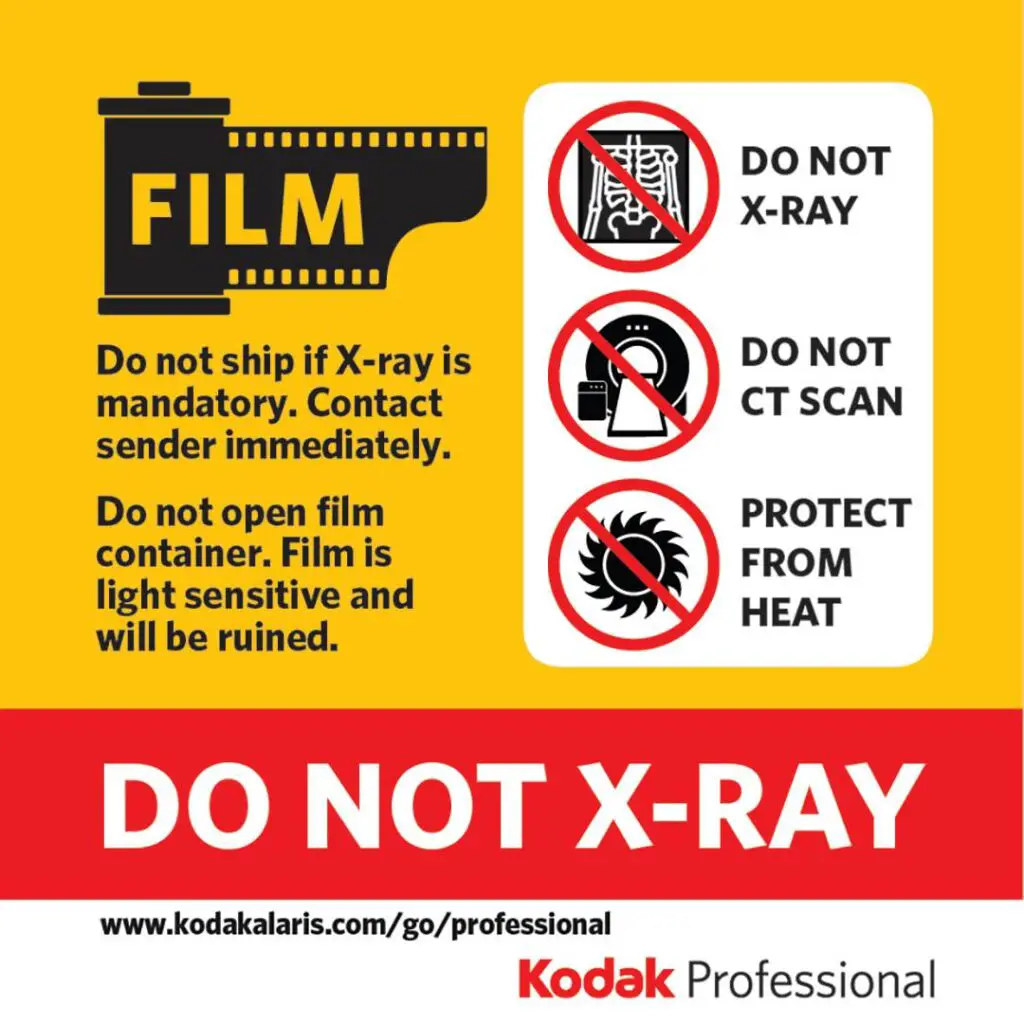
Flying with film may seem stressful but in my experience is easy if you prepare. Follow these general tips to fly confidently with your film:
- Try to identify how many times you’ll have to pass through airport security
- Keep your film and camera loaded with film in your carry-on luggage and not in your checked luggge
- Take your film out of all canisters and wrappers.
- Keep your camera and undeveloped film in your carry-on and keep them in a clear, sturdy plastic bag
- Store your clear bag of film and film camera in an easy to access location of your carry-on luggage
- Arrive 20 – 30 mins early airport security
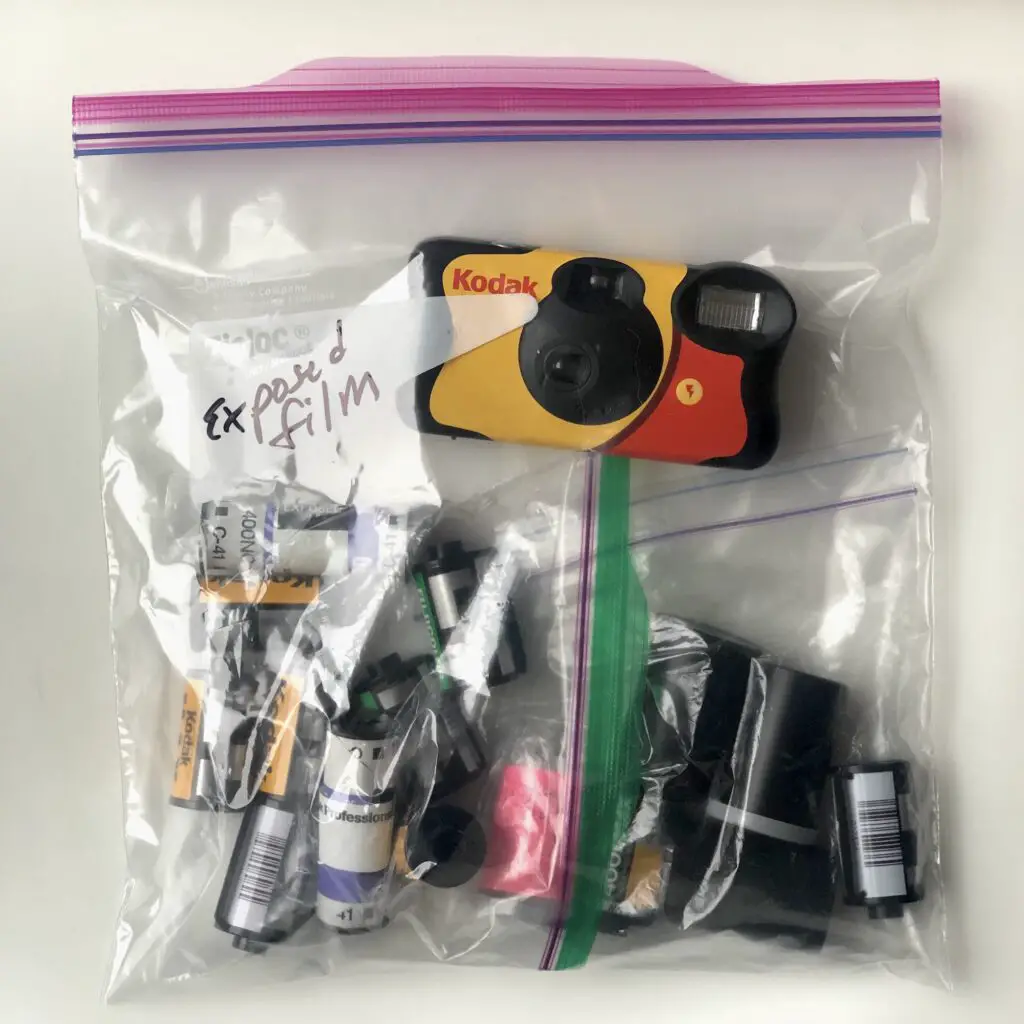
Asking For A Hand Check Varies
Lead lined bags for protection, mail your film to avoid possible film damage at an airport.
If bringing film through TSA at all sounds a bit risky to you, another option is to send your film in a package to your destination or consider sending your exposed but unprocess film to an online lab for development so you don’t have to worry about it all going through airport security at all.
Tips For Flying with 35mm and Medium Format Film
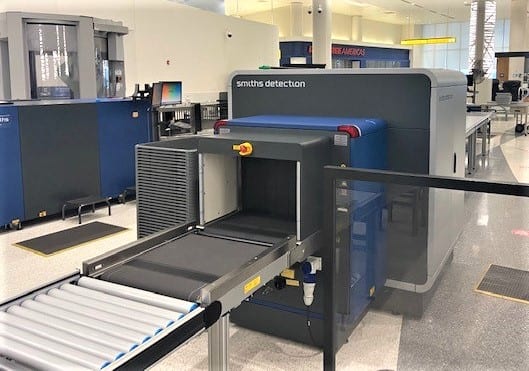
In the images below you can see how airport scanners damaged the film and what it looks like. Notice the light and dark bands on the negatives as well as the fogging on the portrait.
How To Keep Your 35mm and Medium Format Film Safe While Flying
The best method to keep your unprocessed film safe to ask security to hand-check your camera and film if possible, so that it is not exposed to the x-rays at all. Put your unprocessed film and camera into a clear plastic bag (I recommend a sturdy Ziplock gallon bag like this one on Amazon.com) and ask the attendant for it to be checked by hand.
Follow these steps for confidently flying with your 35mm and Medium Format film:
- Keep your film and camera in your carry-on luggage and not in your checked luggage
- Take all of your film out of the canisters and wrappers
- Keep your film and camera in a clear, plastic bag
- Store your transparent bag of unprocessed film and film camera in an easy to access location of your carry-on luggage
- Ask for your unprocessed film and film camera to be hand-checked
Tips For Flying with Disposable Cameras
Disposable cameras can go through security but, just like with roll film, there needs to be some caution.
Most older X-ray machines found in airports will not cause damage to unexposed film in your disposable film camera rated up to ISO 800 unless the film is subjected to repeated passes. Though it is also not recommended to allow film of higher speeds, like 3200 ISO, to pass through the scanners.
How To Keep Disposable Cameras Safe While Flying
The best method to keep your disposable camera safe is to ask security to hand-check your camera and film, so that it won’t be exposed to X-rays at all. Put your unprocessed disposable camera(s) into a clear, sturdy, plastic bag (I recommend a sturdy Ziplock gallon bag like this one on Amazon.com) and ask the TSA agent for it to be checked by hand.
Follow these steps for confidently flying with your disposable cameras:
- Keep your disposable camera(s) in your carry-on luggage and not in your checked luggage
- Take all of your cameras out of the wrappers.
- Keep your camera(s) in a clear, plastic bag
- Store your transparent bag of disposable camera(s) in an easy to access location of your carry-on luggage
- Ask for your disposable camera(s) to be hand-checked
Tips For Flying with Instant Film
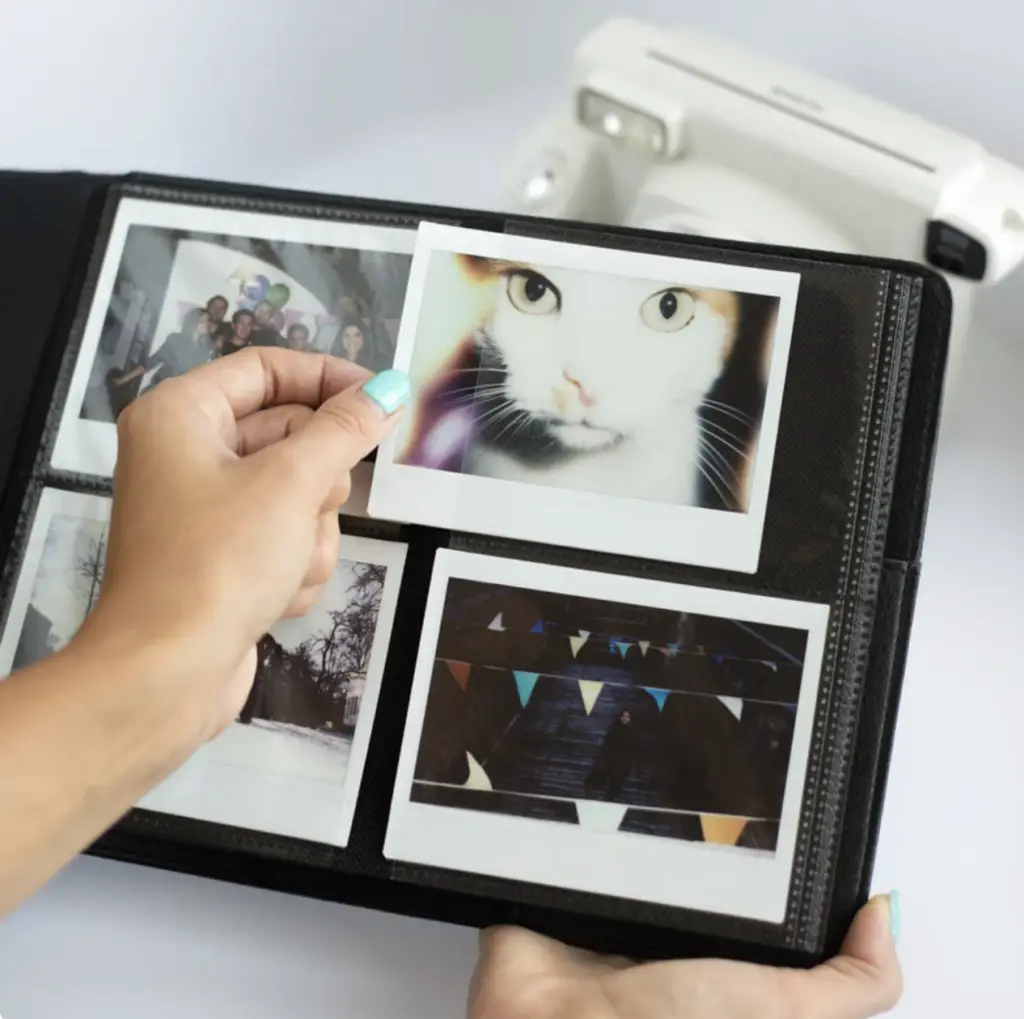
How Do You Travel with Instant Film?
Always ask for it be hand checked but keep in mind the attendant will most likely open up any of the foil pouches that instant film comes in so if you go ahead and open it beforehand to save time.
Tips for taking your Instax camera on an plane are:
- If possible, obtain a lead-lined bag (like this one from Domke )
- Keep your instant film and instant camera in your carry-on luggage and not in your checked luggage
- Take all of your instant film out of the silver wrappers.
- Keep your instant film and camera in a clear, sturdy plastic bag
- Store your transparent bag of instant film and your instant camera in an easy to access location of your carry-on luggage
- Ask for your instant camera loaded with film and undeveloped instant film to be hand-checked
Do X-rays Ruin Instant Film?
Yes, X-rays will create light and dark bands on your image, fog your undeveloped Instant film, and produce dark and muddy shadows. Notice the images below where the x-ray scan created fog on the image and the x-ray created white and dark bands of color.
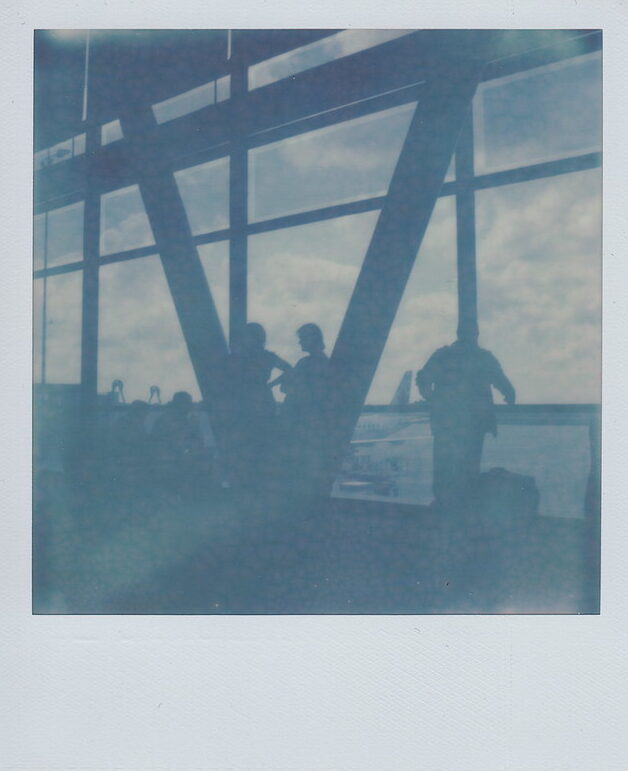
Because of this it is best to keep your camera with carry-on luggage, store your camera loaded with film and undeveloped film in a clear plastic bag, and politely ask for a hand-check went going through security.
Consider TSA Pre-Check When Flying With Film

One way to make the airport experience go smoother when flying with film is to consider signing up for TSA Pre-Check. While it can be expensive if you don’t fly often ($85 for five years and $70 to renew), it can save you a lot of hassle, time, and stress.
With a TSA Pre-Check boarding pass, you get a dedicated line at airport security which tends to move faster and you get special privileges such as:
- Keeping on your shoes, belt, and light jackets
- Keeping your electronics (like cameras) in your carry-on
- Easier to hand check film (might not have to even remove it from your carry-on)
- Keeping your toiletries in your carry-on
- Bypassing the body scanner
It’s possible that you can get TSA Pre-Check for free if you get randomly assigned (more likely if you are a senior citizen (75 or older), military benefits, you redeem miles or points, be 12 or under, have a certain credit card, or if you are flying business or first class.
Digital Cameras and Security Scanners
It is important to remember that it is completely safe for digital cameras to go through the older and new CT style of X-ray machines. There is a slight chance that flash memory (like SD cards) can be corrupted due to amount and length of exposure but this has never happened to me in all the time I’ve been flying with digital cameras (13 countries between 2016 – 2019).
Flying with Spare Rechargeable Batteries
Most Newer lithium ion rechargeable batteries have the Wh rating marked on them. If not, you can calculate the Watt Hour (Wh) by multiplying the battery voltage by the Amp hours (Ah).
My name is Lee Jones, MFA and I'm the professor behind The Photography Professor. My goal is to answer your questions about film-based photography in a format that is easy to read and understand.
Recent Posts
Top 5 Places To Develop Film in Phoenix, Arizona
If you live in or around Phoenix, Arizona you may wonder where the best lab to get film developed. The good news is from experienced professionals to dedicated hobbyists, Phoenix is home to several...
3 Ways To Know if Your Film Is Loaded Correctly
The 3 signs that the 35mm or 120 film is loaded correctly are the film take up lever spins when you use the film advance lever or wheel, there is tension when you use the film advance lever or wheel,...
- Film Developing
- Canvas, Metal & More
- Video to DVD
What type of film do you have?

Your photos on cool stuff.
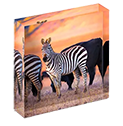
- See All Products
Preserve Your Tapes and Film Today!
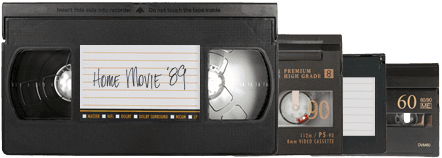
Prints & Enlargements
- About The Darkroom
- Customer Service
- Home Film Tips & Reviews • Photo Lab Blog Tips for bringing film through airport security and the TSA X-rays and the new CT scanners
Tips for bringing film through airport security and the TSA X-rays and the new CT scanners
So you love to travel and you love to shoot film? If so, you’ll often find yourself in an airport security line with a bag full of film. So what about those TSA X-rays and the new TSA CT Scanners? What effect can they have on your film?
This is a question we hear from our customers often. We have everything you need to know on the effects of the new CT Scanners, the traditional X-Ray scanners along with helpful tips to ease your mind on your next trip or when planning future film travels.
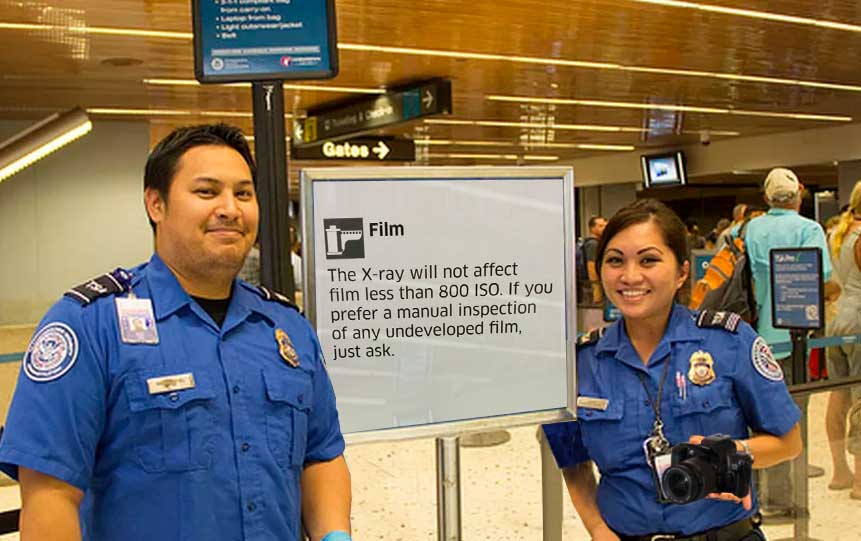
FAQs – Your Film and CT Scans/X-Rays
Tsa ct scanners.
When you make your way to the front of the line, just politely tell a TSA agent you have photographic film and you would like to request a hand-check.
Here are a few ways to keep your film organized and accessible for an efficient TSA experience:
- Take your film out of all canisters and wrappers.
- Place it in a transparent, ziplock bag.
- Keep your film in a side pocket or other easy-access area of your carry-on for quick removal.
- Don’t keep film in any luggage or baggage that will be checked. This includes cameras that still have film in them.
- Consider shipping your exposed film to the film lab for processing prior to your return trip… It’s easy if you take some prepaid mailers from The Darkroom.

TSA plans to have up to 145 units in place at airports around the nation by the start of 2020, along with 16 units at federal testing facilities.
TSA X-Ray Scanners
Most signs at TSA security checkpoints indicate film below 800 ISO will not be affected by the x-rays and, in our experience, this appears to be pretty accurate. We’ve sent dozens of rolls through x-rays (when the option to hand-check was not available) and the machines didn’t seem to have a very noticeable effect on the film—especially our black & white rolls.
Processed film is not affected by x-rays.
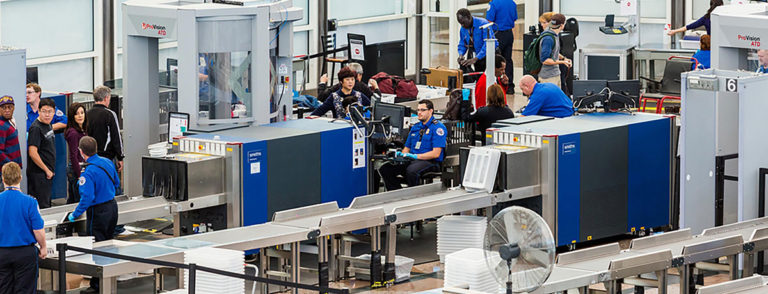
Flying with Film: Results from 3x X-Ray
What is the most ideal way to safely get my film through security?
Don’t keep film in checked baggage!
Checked baggage often goes through equipment with higher energy X rays, but X-ray equipment used to inspect carry-on baggage uses a very low level of x-radiation that will not cause noticeable damage to most films. The high-dose X-ray scan on checked baggage can damage film immediately and corrections can’t be made at the processing lab. See below for examples of how X-rays affect film in checked baggage.
We always recommend getting your film hand-checked if possible, especially if you’re travel will include multiple x-ray scans. Even if it is below 800 ISO. We prefer to err on the safe side when your sweet analog memories could be at risk. When you make your way to the front of the line, just politely tell a TSA agent you have photographic film and you would like to request a hand-check.
If you do want to check film in your luggage, you can buy specialized film bags for X-ray scanners
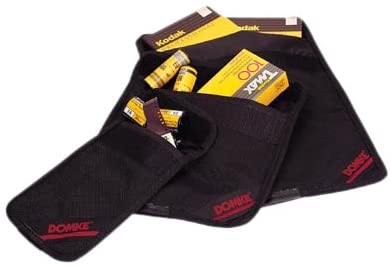
Filmguard Bag specializes in protecting film in X-ray scanners by lining the vinyl bag with lead. Features include the ability to protect against fogging/streaking of unprocessed film with different sizes that can hold thirty-five rolls of 35mm film, or three 50-sheet boxes of 4×5″ film, or a small camera with a few rolls.
Note: We haven’t tried these bags and don’t know how well they work.
• Take your film out of all canisters and wrappers. • Place it in a transparent, ziplock bag. • Keep your film in a side pocket or other easy-access area of your carry-on for quick removal. • Don’t keep film in any luggage or baggage that will be checked. This includes cameras that still have film in them. • Consider shipping your exposed film to the film lab for processing… preferably to The Darkroom.
Instant Film
Always have instant film hand checked and never have it scanned through the x-ray machine. It must be hand checked. Film that’s wrapped in silver wrapping will likely be opened by the TSA agents, so you’ll save time and have it done with more care if you prepare it yourself prior. Anything instant such as Polaroid, Fuji pack film, and Instax will be fogged with muddy shadows when scanned by the x-ray machines.
The Darkroom Swag
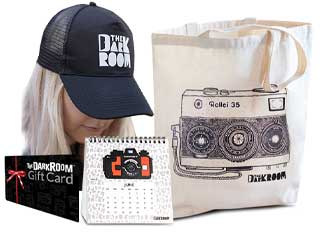
Display the stoke with our shirts, hats, totes, gift cards, and more. Get swagged
What if I can’t get my film hand-checked?
If for some reason you don’t have time, aren’t permitted, or totally forget to request a hand-check for your film, don’t sweat it. The odds are in your favor. We’ve gathered a handful of our x-rayed film scans—most of which went through an x-ray a total of 6 times and still produced great results!
Kodak TMAX400 U.S. X-RAY 4 TIMES
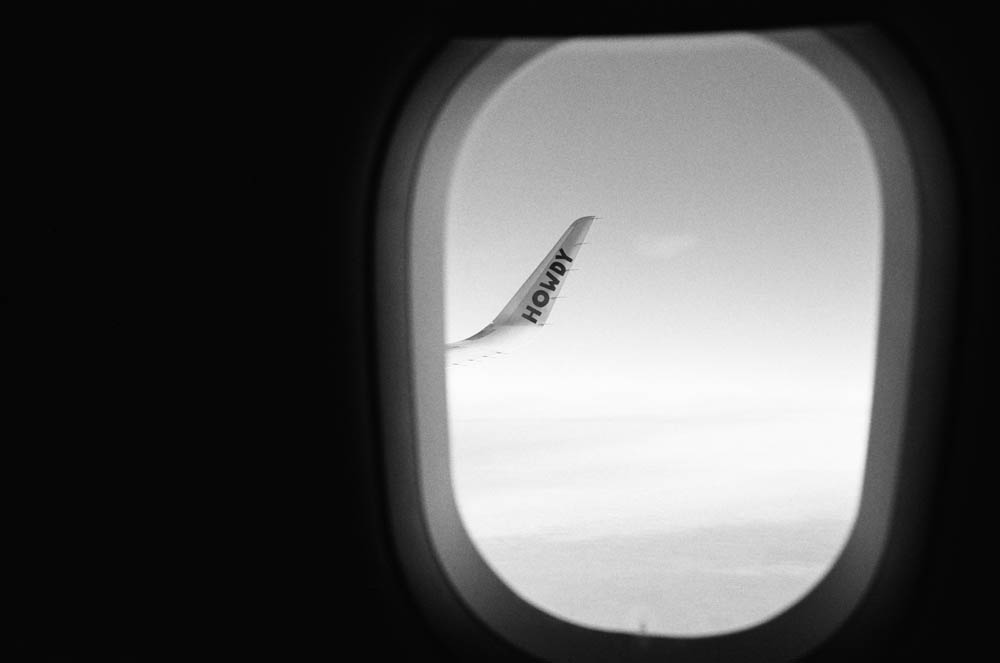
Ilford SFX 200 EU X-Ray 6 times

Ilford DELTA 3200 EU X-RAY 6 times
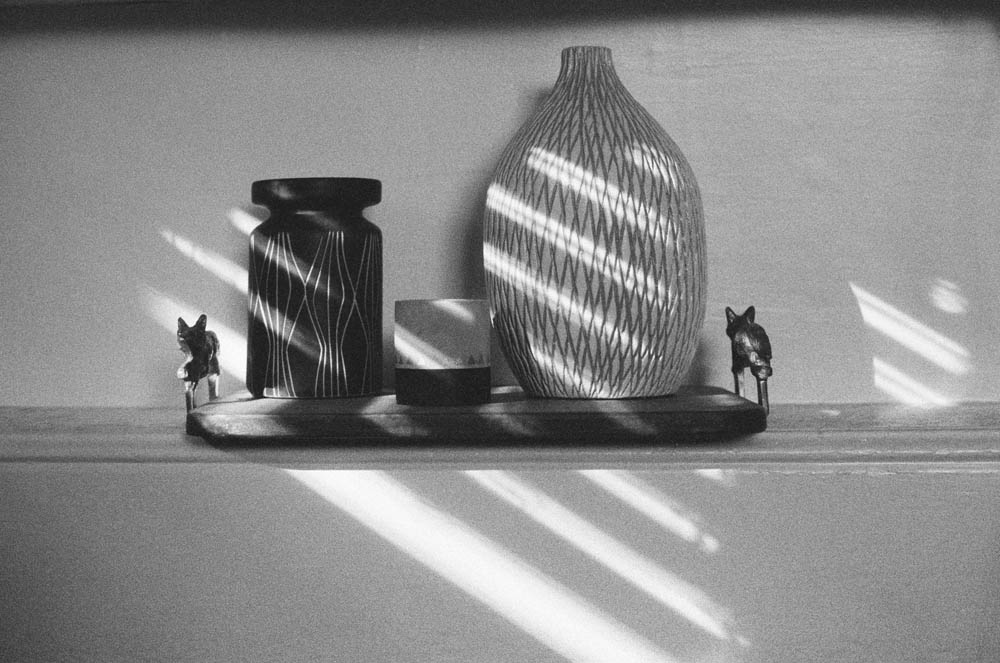
Examples of how X-ray effects film in checked baggage.
Below illustrates the extreme effects of x-rays when scanned in checked luggage..
If you’re curious, here’s what to expect when your film is scanned in check baggage.
Source: Kodak.com
Exposure from checked baggage scanners can have an extreme effect and fog film. Fog typically appears as soft-edged bands 1/4 to 3/8 inch (1 to 1.5 cm) wide. The orientation of the fog stripe depends on the orientation of the film in the scanner relative to the X-ray beam. The X-ray banding is often linear or wavy running lengthwise or horizontally on the film. Whether the undulating wavelengths is visible depends on the photographic content. Busy scenes will obscure or lessen X-ray effects, otherwise, the photo may display some signs of wavy lines or fogging.
black-and-white negative films – Patterns in dark areas color-negative films – Neutral or brown patterns in the dark area slide film – Neutral or brown Patterns in the light areas

Thanks for posting guys. This article is very accurate and consistent with my personal experience. I travel all the time and always ask for a hand check. It’s easiest to have all your film (inc. camera if it has film in it) in a separate bag so you can just hand that all to the security agent. One thing I will add is that if you are dealing with a foreign country that doesn’t speak English, don’t be afraid to be stern with the security that it can’t go through the X-ray. Throughout south east Asia one of the ways I was allowed to do this was by taking a picture for the security personnel to prove the camera is functional. Otherwise be nice and grateful that the security is treating your camera and film better than the baggage personnel sure would. Cheers!
What about the x-ray cases sold to defend the film from the rays? Does anyone use them?
I aways put my film in a lead “airport xray secure xray” bag. I keep it in my carry on. It almost always prompts a hand check when they put it through the xray scanner. Too many times have I had a hassel with the security for a hand check. They even once did a hand and sent it through the xray machine anyway. That was in India, but this is the exception. Almost everywhere else they ask what’s on the lead bag and I tell them it’s film. They usually just do a quick check and let me through. Less problems this way (at least in my experience).
Great info and examples. I often travel with Ilford Delta 3200 and always assumed It was toast if it went through any x-ray machine. I have a small stockpile of x-rayed rolls, (from EU airport security that refused to handcheck film and when I’ve forgotten I had it in my bag going through museum security), that I’ve been afraid to shoot. I won’t let it go to waste now!
I’ve always sent instant film through the carry on x-ray machines and have never noticed a problem. But then I purposely shoot expired instant film most of the time, so any x-ray effects would be just another imperfection I actually want the film to produce.
Thanks- getting ready to travel with loads of film(negatives) , memories from 20 years ago.Do I need a clearance in advance from the security?
[…] Further readinghttps://filmadvance.com/2013/10/how-to-flying-with-film/https://www.japancamerahunter.com/2012/01/traveling-with-film-by-tobias-weisserth/https://thedarkroom.com/bringing-film-airport-security-effects-x-rays-film/https://www.digitalrev.com/article/travel-horror-what-happened-film-xray-scan-11-times […]
Film that has already been exposed and developed will not be damaged by X-rays.
If it’s developed you don’t need to worry; the x-ray won’t affect it. The advice here is about undeveloped film.
[…] you believe your film was damaged by X-rays at the airport. See this article on how to prevent it in the […]
My question: If I send film from a foreign country like India, will that package be x-rayed?
hello how about the 16mm rolls ? how can we pass it through xray process
Be warned. Lisbon airport has some very different ideas then the airports I’ve taken film through in Kuwait, Pakistan, India, Dubai, Amman, Rome, Istanbul, Bangkok, Chiang Mai, Phuket, Luang Phrabang, Hanoi, Ho Chi Minh City, New York City, Vancouver, etc… (the list goes on and on).
No friends of photographers, I can’t feel ashamed saying the airport security guards here and their managers are real bastards. Despite transferring through this airport in 2018 and being given a hand inspection upon request, on this transfer I was forced to X-ray my film in order to pass – and that was just transferring, not even going through immigration. No matter how long I tried – even speaking with the head of airport security – the message was the same: if it goes past security it goes through the X-ray and that is final. I asked what they do with professional photographers – and they insisted that all professionals did their research properly and knew that they needed special written permission from ANAC for their film. Of course ANAC was completely closed on weekends and didn’t take last minute quick turnaround submissions anyway. I have never had to apply to a civil aviation authority for permits to get film hand inspected, and even now I don’t really see much in the way of letting people know that’s what they have to do. So for those of you going to or from Lisbon, or even transferring through – be warned. If I had instant film it would be totally toast. Not eager to see how my infrared and high iso color rolls are going to look 🙁
Hey Ryan how was it at the end ? Same just happened to me in Lisbon Airport while transferring ….. I only have 400 ISO speed film so should be ok but did you have any issue ?
Just had a similar experience transferring through Lisbon. Without express written permission, everything goes through the X-ray. Luckily I had only low iso colour sheet film. I will try to reply here with the results when it gets processed
same here, in lisbon portra 400 was heavily damaged due to a hand check being denied. be aware! is there really no official procedure in place? i do this professionally and it it feels like playing there lottery every time.
i was in Oslo airport and they refused to hand check my camera with a roll of portra 400 inside. just got my roll developed and it’s completely toasted… luckily the second roll i had that was unused at the time turned out slightly better (underexposed for most photos but i’m not sure if it’s related or not)… super upset about my films but it is what it is and hopefully i’ll learn my lesson next time
I’ve emailed several security departments at ANAC and Lisbon airport over the past 2 weeks for an upcoming trip and received no response as of yet (19 days and counting).
The Customer Service at Lisbon Airport has responded but repeatedly directs me to a department that wont.
I can’t find anything on the ANAC site for contacting them about an exemption film or camera.
Plus one from Lisbon (june 2022). The lady checking boarding passes at security check was actually quite polite and said it would be ok to hand check them, but when I got to the tray line no amount of talking would convince the officers to hand check my film. Should’ve had aurhorizarion from airport authorities. And they had sniffers right beside the scanner!
Really sorry to hear that! Stories like this make me really angry…
Most airports are less willing to mess with hand inspections in this era of digital photography. For many years, film had virtually disappeared from the security equation. I still find airports in the USA that absolutely refuse to just hand inspect film. Indeed, when they make you take electronic stuff out of your bag for hand inspection, they end up putting each item removed from bag back on the belt. I had one instance in Houston where they removdd 6 usb cables, 5 batteries, a power brick and some other odds and ends from the bag by hand. Then they put each one through individually on the belt. Something similar happened to me in Frankfurt and Beijing. So, these are every day items and were treated this way. Imagine something strange like film being encountered. Hopefully, with the increase in both film use and CT scanner use the hand inspection will come back into play.
I have read the reviews so in total sense it would be better and safer to don’t have any x-rays on unexposed film and exposed film ?
I had mixed experiences – one airport in Boston was able to hand check. At the airport in Denver Colorado there was so sign that I could see at least regarding checking 35mm film. They also kept directing you like herding sheep so you went where they yelled for you to go. I got up to the check point to start putting my sneakers luggage etc in the bins and asked about scanning my film already in a clear bag and out and the woman rudely said “you’re in the wrong line, you have to go to that one” and pointed to a few lines over. She was not going to budge and I had waiting in the security check line for 25-30 minutes I couldn’t afford to start over to go to a new line. Was very disappointed and now makes me paranoid not all airports give a rats bum. Was going to look into the lead bag. They will take it out but at least it’s protected.
Sorry for any spelling errors. Was waiting in one large line and was directed to individual security check lines and *saw no sign regarding hand checking film* prior to getting in a smaller line
Was super anxious to travel with film but appreciated this article and happy to report my experience traveling with 35mm film was a success. Went to 4 airports in the US and didn’t see any signs saying film can go through but the TSA agents were happy to hand check every time, (every time just handed to them while I was putting things in bins) and got it back to me quickly. I made sure to use all the film so didn’t have to have them hand check the camera. I also kept it in the box I purchased it in so they recognized it as film just by me holding up.
[…] be aware that new airport scanners like the TSA CT scanners will damage unprocessed film on the first scan. To keep your film from being ruined, just put all […]
The airport in Lima just refused me a hand check of a polaroid with film inside. Does anyone know if my film is sure to be damaged?
I was just refused a hand check in Qatar Hamad International. Fingers crossed all the film i shot of our epic trip are alright. When I was a kid, my dad traveled with a lead-lined bag. Not sure how that’s any different if the security personnel can’t see inside. They’ll want to take the film out and zap it regardless.
[…] to allow film of higher speeds, like 3200 ISO to pass through x-rays. However, there are new, stronger airport scanners like the TSA CT scanners that will damage undeveloped instant film on the first run […]
[…] However, new airport scanners like the TSA CT (Computed Tomography) scanners (like the one below) will damage any unprocessed film on the first scan. To keep your film from being ruined, put all of your unprocessed and/or new film in a clear, plastic bag and request a hand-check during the security line. Also, keep in mind only new and unprocessed film will be affected, including instant film. […]
Traveling from JFK airport to London, a border guard noticed I had a transparent bag of exposed films and asked me if I like him to hand-check. I was quite surprised as I had anticipated some difficulties. He was incredibly polite and helpful. So, my takeaway from that was – make airport staff’s job easier, and be friendly and respectful.
Planning on travelling to Spain (Barcelona), Italy (Rome, Venice, Florence), and the South of France (Nice) this summer. Would anyone know of any problems regarding hand-checking films in any of these places? Really anxious about being denied hand-checks and having to put my film through X-rays scanners 😣
I just went through security at the Nice airport, and they would not hand check my film, even after explaining multiple times that it should not go through the machine. They instead pointed at a pictogram of a digital camera and insisted that it meant that my film would be ok. I hope you get more understanding people.
Hi Gabby, did you end up having issues in Barcelona? I’m going in a few weeks!
Hey Gabby! Any updated? Im in the same boat, leaving from Milan to go to Barcelona, Naples, and Nice. Lmk!
I flew through France to Florence. I had hand checks at all security checkpoints from USA to abroad. It was a real hassle at times. They would leave my Ziploc bag full of film, unattended, and I would be waiting a long time until someone got to it. Once they did hand check, they would open up each canister and brush each roll of film. The issue is getting through in a timely manner with lay overs of 2.5 hrs or less. This summer 2023 I am going to Malta and I am not i sure if I want the hassle. I shot film in 2001 in Malta traveling from the USA I can’t remember how it was handled, but I have the pics and they are all ok.
hi there does removing the foil around a roll of medium format of unexposed film lead to any light leak? I’m trying to make it easy on the staff by removing the foil before hand but don’t want to damage my film
no worries, no light leak without the foil.
Hi all, I will be travelling from Australia next month through Adelaide, Melbourne, Singapore, London Heathrow, London, Stansted & Salzburg. Can anyone tell me any of these airports are going to give me a hard time having my film hand checked? I usually develop my own film at home, but I am wondering if I should not travel with unprocessed film, but buy film in my holiday destination & pay a lab to develop before travelling through each airport?
[…] The best method way to keep it safe to ask security to hand-check your camera and film if possible, so that it is not exposed to the x-rays at all. Put your unprocessed disposable film and camera into a ziplock, or plastic, bag and tell the attendant you want it to be hand checked. […]
I’ll be transferring at Abu Dhabi Airport, United Arab Emirates in August. Has any had any problems with hand checks there?
I lost most of a bulk roll of HP5+ at the Oakland Airport this morning. Had successful hand checks of my bulk loader in the past, but the young TSA agent this morning insisted on opening up the loader “because there could be bullets inside.” He did not seem to grasp that this would wreck the film and insisted he just needed to check inside, as if I could just use it after he exposed 80 feet of film. So I opened the loader, took out the reel, and asked him to chuck it in the bin. He seemed confused that I did not want it anymore. I think the advice in this article is good. He did not have a problem with the individual 35mm cassette I had. Not sure what he would do with a bag of home-spooled 35mm cassettes, but now I know to leave the bulk loader at home!
[…] (for the sake of your health you should not be either). The extent of my suffering for art is TSA hand checks of my film canisters and I intend to keep both of my […]
Traveling from Edinburgh airport they absolutely refused to hand check my film and said they only hand check over 800iso. Really disappointing experience. I had a lead bag, but still worry that’s not enough to get perfect film back. I had portra 400 120
I just went through an X Ray Scanner at Mexico City airport. The security personal were ambiguous about the hand check as I got closer to the X Ray machine, and they let me no other option than get my camera through the X Rays 🙁 I have loaded a Kodak Pro Image 100 and hopefully my photos survive 🙏. Thanks a lot for the information and examples!
Hi-Tech Medical Imaging offer digital portable x ray machine for sale. We provide x ray machine for sale, CT scanners for sale, radiography, c arm machine for sale, medical equipment, ultrasound machine for sale, used x ray machines for sale, used CT scanners for sale , shipping, installation, technical servicing, warranty and financing. Visit at: – https://hmiixraysales.com/equipment/x-ray/
Could anyone tell me what camera the above pictures are likely taken on?
What about instant film? For instance I’m thinking of bringing my fuijifilm mini instant. I won’t be bring film with me as I’ll buy it in the area I’m traveling to but I’m concerned about the photos I take after. Will those printed pictures be affected by going through the scanner??
[…] The your camera and film if possible, so that it is not exposed to the x-rays at all. Put your unprocessed disposable film and camera(s) into a ziplock, or plastic, bag and tell the attendant you want it to be hand checked. […]
I am bringing home my mom’s childhood home movie film, some more than 60 years old. It is already developed so it should be fine, do you agree?
I will be bringing a panoramic X-Ray through Turkish Airport, will I have problem. Is there a new procedure in the UK where need a request from the dentist in Turkey, a form to be filled in etc. Thank you
[…] a low level of x-radiation that will not cause damage (in most cases).Here are some tips for keeping your film accessible for TSA […]
Having best blog like this are amazing and I think you must also try it for once atleast. crime scene cleaning
This is a must-read for anyone traveling with film! The care you’ve taken to explain the nuances of different scanners is appreciated. Keeping film organized in transparent bags and requesting hand-checks is now on my travel checklist.
The film will be spoiled, those who say otherwise simply haven’t checked it. For example, the base of a sheet that has been exposed adds approximately 0.2 to the density. I check all my sheets using a densitometer. And you need to understand that while traveling, the film passes through the scanner more than just once. This is very unpleasant to get the base ≈0.35 instead of ≈0.15. If you are an amateur and shoot 35mm, scan it and photoshop it, then you won’t notice this.
I lost 3 films a month ago, but I don’t know if it was because of the scanning devices at the airport or not, because the films were subjected to security scanning 5 times (2 in Romania – 2 in Athens – 1 in Riyadh) After returning home and developing the films, only 9 of the 105 images appeared, and the rest of the images did not appear Although I am sure that the development steps were perfect, I do not know 🙁
[…] Request for deletion View full answer on thedarkroom.com […]
I don’t know, I think CT scanners end traveling with film for good. TSA agents are cop academy washouts pretending to be drill instructors, who’s gonna risk their work trusting an agency shown to be unable to stop drugs or weapons? Putting film through X-ray machines is just about all they CAN do lmao
I think after this article I have found a new photography style after spending time at home and playing candy clicker – a great game.
Place the film in an anti-magnetic bag or box. This helps minimize the influence slither io of the scanner’s magnetic waves on the film.
Note: We don’t monitor the comments very often, so please contact us directly if you have questions.
Your email address will not be published. Required fields are marked *
Save my name, email, and website in this browser for the next time I comment.
- Setups & Tech
- iOS & Mac
How to Travel With Film: Tips for Flying, TSA & More
Traveling and photography go together like salt and pepper, but that doesn’t mean it comes without roadblocks. The obstacles are especially amplified if you’re traveling as a film photographer, with all that precious cellulose at risk of being damaged due to airport security X-ray scanners.
Airport security scanners are known to emit radiation through to your film that may cause fogging. Luckily, most modern airport security checkpoints are known to not cause damage to your film – but this tends to vary depending on which airport you are traveling through, the age of their equipment, and leniency of the airport staff.
If you’re still left unsure about traveling with your precious film, you’ve come to the right place. We’ve put together a guide of solutions and alternative options to help store your film and mitigate your film from being damaged from airport security scanning.
Want more film photography tips? Join our mailing list!
- First Name First
Flying with Film: Can You Bring Film on a Plane?
Yes, you certainly can! Long before digital cameras, travelers hauled their cameras and film rolls through airports and onto planes all the time. Film is not prohibited on planes, and airport scanners of the past didn’t cause as much damage as today’s.
How to Travel With Film
Concerns with traveling with film stem from undeveloped film being passed through modern airport security scanners. Here are our best tips to avoid damage to your film rolls. Remember, there’s always an inherent risk when traveling with film, especially when scanned – as factors like airport scanning strength and security tolerances vary from country to country.
Avoid Checked Baggage for Film
Firstly, we advise strongly against ever storing your film in your checked luggage – scans are done multiple times throughout transport, and the scanners used are much stronger, known to cause damage to undeveloped film rolls.
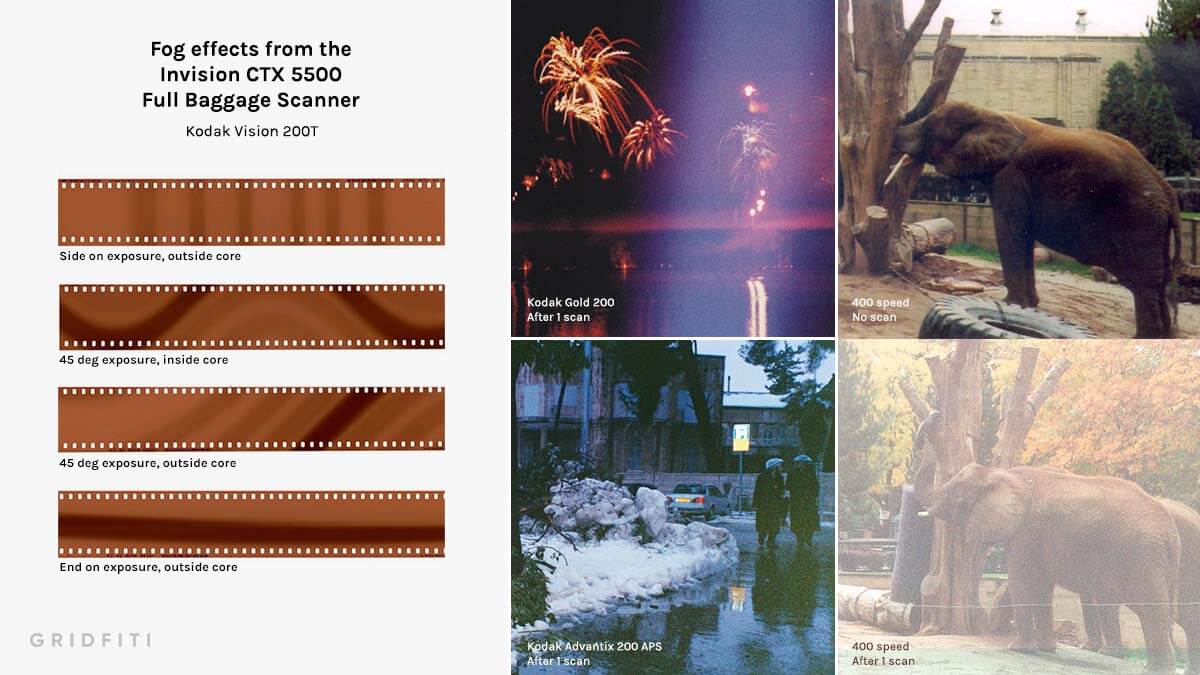
Carry-On Baggage
Now, let’s talk about transporting undeveloped film in your carry-on bags through airport security. This varies from airport to airport, but in the United States, the TSA states that their scanners don’t harm any film that is under 800 ISO.
35mm and 120 film that are 800 ISO or higher may be more at risk of scanning damage, whereas stocks under 800 ISO should pass through most scanners unscathed.
Damage or no damage – we’re here to tell you how to best avoid scanning altogether with some alternative options to avoid even having to take film through security.
- Anything under 800 ISO should be OK, but may start fogging after multiple scans
- 800 ISO film and up is sensitive and may pick up fogging within one security scan
Rule of thumb: the less security scanning you can achieve, the better – but not all security staff will provide the option for hand checks. Ultimately, the goal is to bring the number of times your film is scanned down to zero, or as close to it as you can get.
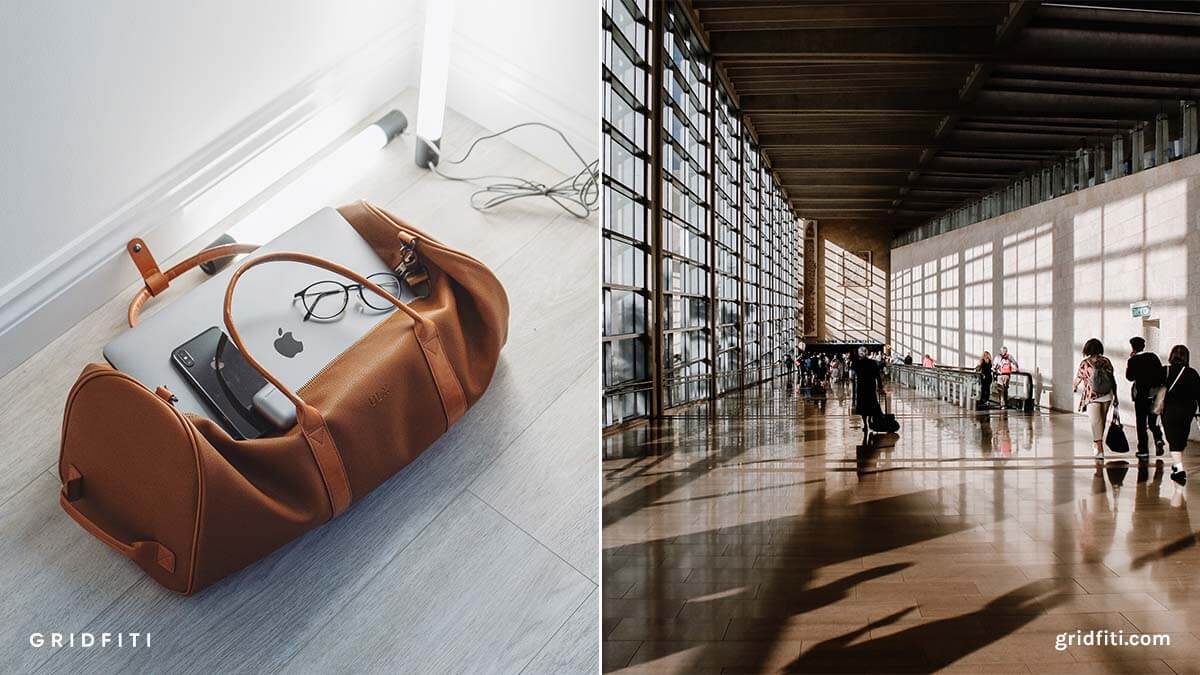
What to Do at Airport Security
The name of the game when bringing film through security is to be as convenient and polite as possible.
Take all of your film rolls out of their canisters and bags, and store them into a transparent, easy-to-open bag (Ziploc bags work great). Put your transparent bag in a quick, easy-to-access pocket or compartment on your carry-on luggage.
Once you get to the security, confidently and politely ask the staff if you could have the film hand checked.
Since you’ve shown consideration by preparing and asking politely, chances are, security staff will do the hand check for you, since you’ve helped them expedite the process!
If you’re traveling with film and plan on requesting a hand check, we recommend arriving at the airport a bit earlier to give yourself plenty of time at security – and spare yourself of any added travel stress.
If you’re traveling internationally and think getting a hand check could be a long shot, you can always pick up a durable filmguard bag to pack your film and help mitigate risk of fogging when scanned. These bags are a great alternative to hefty (and pricey) lead-lined bags for the same purpose. Note: these bags might lead to further checks, so again — they’re only recommended if you know you won’t be able to get a hand check otherwise.
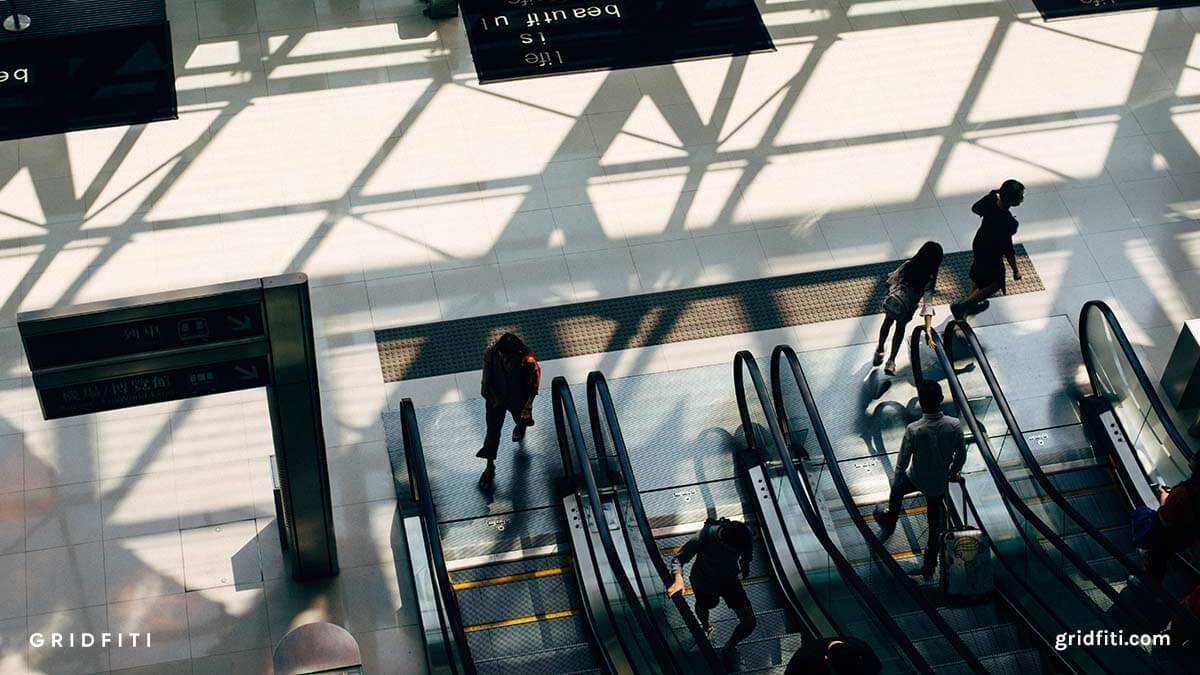
Can You Bring a Polaroid Camera on a Plane?
While this isn’t specifically film, but a film camera , you may be wondering if you can travel with a Polaroid camera. Yes, you can! When it comes to Polaroid film, the same science as undeveloped 35mm and 120mm film applies here.
Polaroid film below ISO 800 should be fine, but anything exceeding 800 is likely to get damaged in airport scanning. We suggest the same approach here – store your undeveloped Polaroid film in a clear bag, and ask politely to have it hand checked. Developed Polaroid won’t be affected by airport scanners.
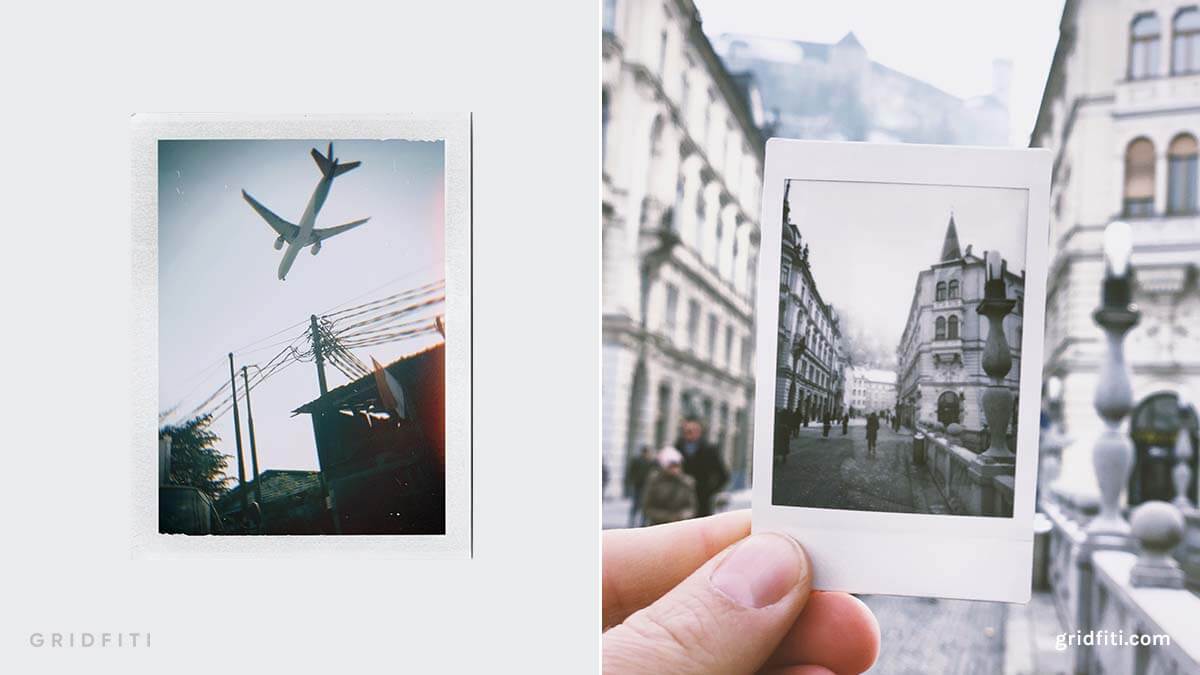
More Film Travel Tips & Alternatives
Buy the film at your destination.
If you’d like to avoid the extra step of packing film and asking for a hand check, you can always plan to buy your film at your destination! Check out Yelp, Reddit, or Google Maps for local favorites. The only risk here is the shop not carrying specific film stocks you’re seeking, or being sold out. A quick email to the shop to set up a pick-up is always worth a try! This way, you know fresh new film is waiting for you at your destination.
Develop the Film at Your Destination
This is recommended as a last resort (especially if you’re on a short trip), but lastly, you can always look into developing your film at your destination.
We suggest researching a reputable developing lab in the city you’re traveling to, and if you’d like to avoid the hassle of hand checks at security, have the film developed there.
For this to work, the rolls of film you have must be used up (and can’t be stored within your camera) – and the lab’s development turnaround would have to line up with your departure date and time.
It might not be the most convenient, but it’s an added step in ensuring your film is not damaged from airport scans. Many labs will offer express development services for an extra fee, or if you let them know you’re from out of town and are on a tight timeline, they might be willing to further accommodate!
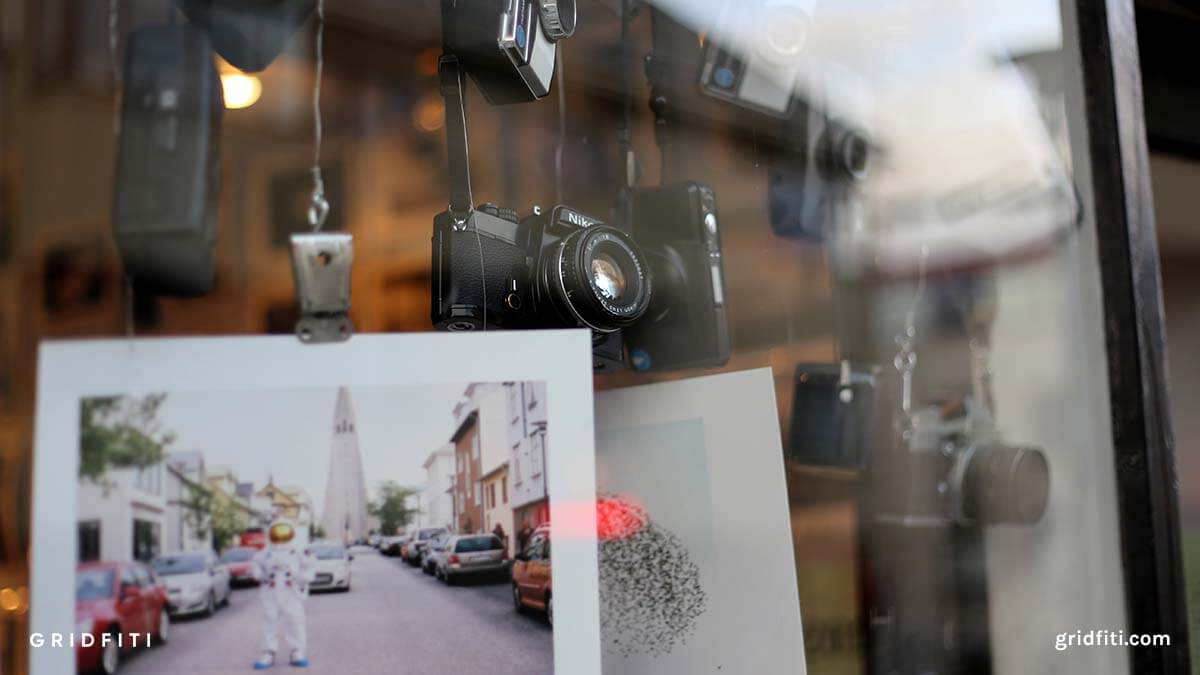
Did any of these tips help? How do you usually pack your film for your travels? Let us know in the comments below!
Gridfiti is supported by its audience – when you buy something using the retail links in our posts, we may earn a small commission at no additional cost to you. We only recommend products we would use ourselves and recommend to our friends and family. Read more about our affiliate disclaimer.
Privacy Preference Center
Privacy preferences.
- Privacy Overview
- Strictly Necessary Cookies
- 3rd Party Cookies
This website uses cookies so that we can provide you with the best user experience possible. Cookie information is stored in your browser and performs functions such as recognising you when you return to our website and helping our team to understand which sections of the website you find most interesting and useful.
Strictly Necessary Cookie should be enabled at all times so that we can save your preferences for cookie settings.
If you disable this cookie, we will not be able to save your preferences. This means that every time you visit this website you will need to enable or disable cookies again.
This website uses Google Analytics to collect anonymous information such as the number of visitors to the site, and the most popular pages.
Keeping this cookie enabled helps us to improve our website.
Please enable Strictly Necessary Cookies first so that we can save your preferences!

Photo Review
Inspiring ways to improve your photos
Mobile banner
Travelling with unprocessed film.
How to protect your photos when travelling with unprocessed film.
FREE EMAIL NEWSLETTER
PRINTER REVIEWS

Canon PIXMA G660 MegaTank printer
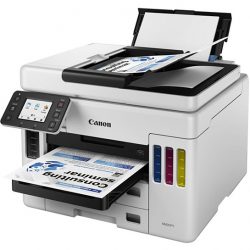
Canon Maxify GX7060 MegaTank printer

Astrophotography pocket guide
Photo guides.

Travel Photography 4th Edition

Take Better Photos

Nature Photography pocket guide
Ad blocker detected.
Ads can be a pain, but they are our only way to maintain the server. Please deactive Ads blocker to read the content. Your co-operation is highly appreciated and we hope our service can be worth it.

- Develop Your Film
- Home Developing
- Film Subscription
Spend £50.00 more and get free shipping!
Your cart is empty
Recent posts

Shop the article
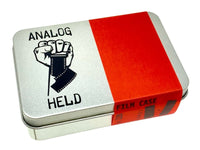
Updated March 25, 2024
How to Travel with Photographic Film
By Emma Lloyd
H ow to travel with film, another seemingly tricky question within the long list of analogue photography myths and fairy tales. But do not fear!
😊 This article aims to answer all your film photography travel questions, so by the time holidays are back on the cards you will be ready and raring to go - with your analogue gear safely in hand.
What's the problem with travelling and film photography?

Tales from the Film Community
We do have some unfortunate travel tales from the community, see some of the tweets we were sent below. Fogging seems to be the main issue to watch out for, but don't worry we have plenty of tips to make sure you're prepared for your next trip, regardless of the film type you're taking with you!
What's a CT scanner?
CT, standing for Computerised Tomography, uses much more powerful rays than x-rays in order to form a 3D image of the scanned object. Of course, this is to keep us all safe but our beloved film has had to make the sacrifice. Film can be damaged after just one pass through a scanner, even low ISO films .

Will CT scanners damage my film?
The CT scanners can cause fogging- this is defined as ‘the deterioration in the quality of the image or the negative caused either by extraneous light, other electromagnetic radiation, radioactivity or the effects of a processing chemical.’ Fujifilm also noted other damaging effects such as distortion in shadow detail and general image degradation. In other words, your photos just aren’t going to pack the same punch!
Jelmer Quist from Emulsive was brave enough to take the ultimate test and put their film through a CT scanner! One roll wasn’t put through the scanner and the other took the plunge. You can see the results of the experiment here.

The Good News
This all may sound quite worrying, but fear not, you can still take your favourite films with you on your next get away!. There are plenty of tips and tricks to protect your film, and most airport security will happily hand check your film, so you can avoid it being put through the monstrous CT scanner!

Our top tips and tricks for travelling with film
⭐ Get a case for your film! Or re-use your Analogue Wonderland packaging!
All our branded packaging comes with xray and ct scan warning indicators printed on the box, which may be useful when you’re going through airport security.

We also sell some handy cases ( AnalogHeld , Kodak Film Case , JCH Case , Lomography Film Case ) some of which also have the x-ray warnings printed on them.

⭐ Pack your film away safely!
Take your film out of all its packaging and wrappers and store it in a transparent, ziplock bag (the same way you would for all your liquids in your hand luggage). This way you can easily show it to airport security for hand inspection!

⭐ Easy access
Airport security is certainly not the most thrilling part of any trip. Make the process as smooth and quick as possible by keeping your film somewhere that you have easy access to. A side pocket or other easy-access area of your carry-on for quick removal is ideal!

⭐ Keep your friends close, but your film closer!
To lessen the chance of our film accidentally going through a scanner, DON’T put it in any luggage or baggage that will be put in hold storage. This includes cameras that still have film in them.

⭐ Load later
This tip is less to do with the airport scanners and security checks, and more to do with the actual radiation we are exposed to during our flight. Did you know that the amount of radiation commercial pilots are exposed to a year is the equivalent of about 75 chest X-rays? ( Travelstatsman ) This kind of radiation, known as cosmic radiation, can damage your photographic film. In order to prevent this it is advised to load your camera after you fly. This is because the lead in your canister of film will protect the rest of your film from being damaged. However, if it is unrolled and loaded in a camera, it leaves more of the film vulnerable to come into contact with the low level radiation that we experience during fights.

⭐ Pack films that like it hot!
As mentioned in our blog on storing film, it is always best to keep your films in a cool, dark and dry place. So if you're planning on jetting off to somewhere lovely and warm, with perhaps a more humid climate, your films may not be as excited about this adventure as you.
So before you travel, why not consider picking a film that performs well in a hotter climate? Did you know that Kodak Pro Image was specially formulated and designed predominantly for Asian and South American markets. These areas of the world have much hotter climates than we are used to, hence the films have been designed to perform well in this heat. Kodak Pro-image is unique in that it can can be stored safely at room temperatures for long periods of time, including hot and humid climates. ( see our youtube video on it here ).
⭐ Send your film home first!
Another way to avoid the airport security is to send your film home to the lab before you make your way back (you could even re-use your Analogue Wonderland packaging to send it home as it has x-ray warnings on!). You could bring a pre-paid mailer with you (but of course this means relying on the post in whatever country you’re in). Consider shipping your exposed film to the WonderLab for processing prior to your return trip… It’s easy if you take some prepaid mailers - we send these in our boxes for your convenience.
An alternative is to develop locally before making the return trip - as we discuss in our article on shooting New York City on film as long as you can find a reputable lab that will look after your images (and you have the spare time) then it can ease your mind.

Positive Experiences from the Film Community!
Have a read through of some tweets from the film community, sharing their more positive experiences of travelling with film! See, nothing to worry about (just don't miss your flight)!

So there are definitely some risks when you travel with photographic film - CT scanners, heat, the radiation from flying are just some of the things to look out for.
But hopefully you are now feeling prepared and excited for travelling with your cameras again! Miles from ExpiredFilmClub flies frequently as part of his sports film photography career and has never had any problems - which makes me much calmer about my holiday snapshots. Plus I have my speech for airport security ready and can't wait for the chance to photograph somewhere that isn't just my local high street 😂
Edit: We have just heard from a lovely member of the film community who was travelling through Bristol airport recently that there were no issues! "I went through Bristol airport security and had no issues with film being hand checked. They were outside of plastic containers in clear plastic bags and they were hand checked within a few minutes." Brilliant news, thanks for the heads up Clarke!😁
There are only two safe options, given the type of obstinate persons employed by Heathrow in particular [and for no good reason]. First option is to FedEx your film to your hotel a few weeks in advance. And FedEx back again. Dont travel with film anymore, of any speed, those days are gone. The second option is to use a digital camera whilst abroad.
I was worried about taking film with me on a trip to Bergerac, France and then this post came through to my email 2 days before I flew out.
I followed the advice of putting the film in a separate clear bag and asking for a hand check on the film. The security people at John Lennon Airport (Liverpool) were really nice about it I just handed it over and asked for a hand check on the film, they said ‘certainly’ with a smile and gave me it back afterwards.
However coming back was different. I done the same as I had done previously, but security at Bergerac Airport refused and said their machine was safe for film. They did show me a label on the machine that said ‘film safe’ but I was still reluctant. I had no alternative option though so through it went. I guess I’ll see next week if the film has been ruined or not. 🤞
- You use to be able to get a bags with an x-ray proof lining to protect your films. are these still available, and would security accept them ? Terry Yelled • May 11, 2023
Heathrow refused to handcheck for me. I emailed them beforehand to ask, they emailed back to say it would be fine. When I showed the email to the security person on request, they called a supervisor and then told me “sorry, I think there was crossed wires with that email – we only hand-check over 800iso”. The whole discussion took considerably longer than it wpuld actually have done to hand-check…and so did raking through my film to find the canisters/rolls labelled 800, as they wouldn’t hand-check them unless it was actually printed on there.
I went through five other airports during that trip and didn’t have a single problem getting a hand-check at any of them.
I don’t even bother risking it these days, airport security usually don’t want to know and will refuse a hand search. So on my last few trips I’ve researched places to purchase film when I arrive and get it developed before I leave! Most labs just email a download link once they’re ready anyway. Obviously this won’t work everywhere but for a city break it’s always been fine for me! In some places it’s also been less than half the price of film/developing in the UK. Maybe an issue getting the negatives posted but I’m sure most places would do it for an extra cost.
Ready to dive in?
Keep reading.

Analogue Appeal: Why Do People (Still) Shoot Film?
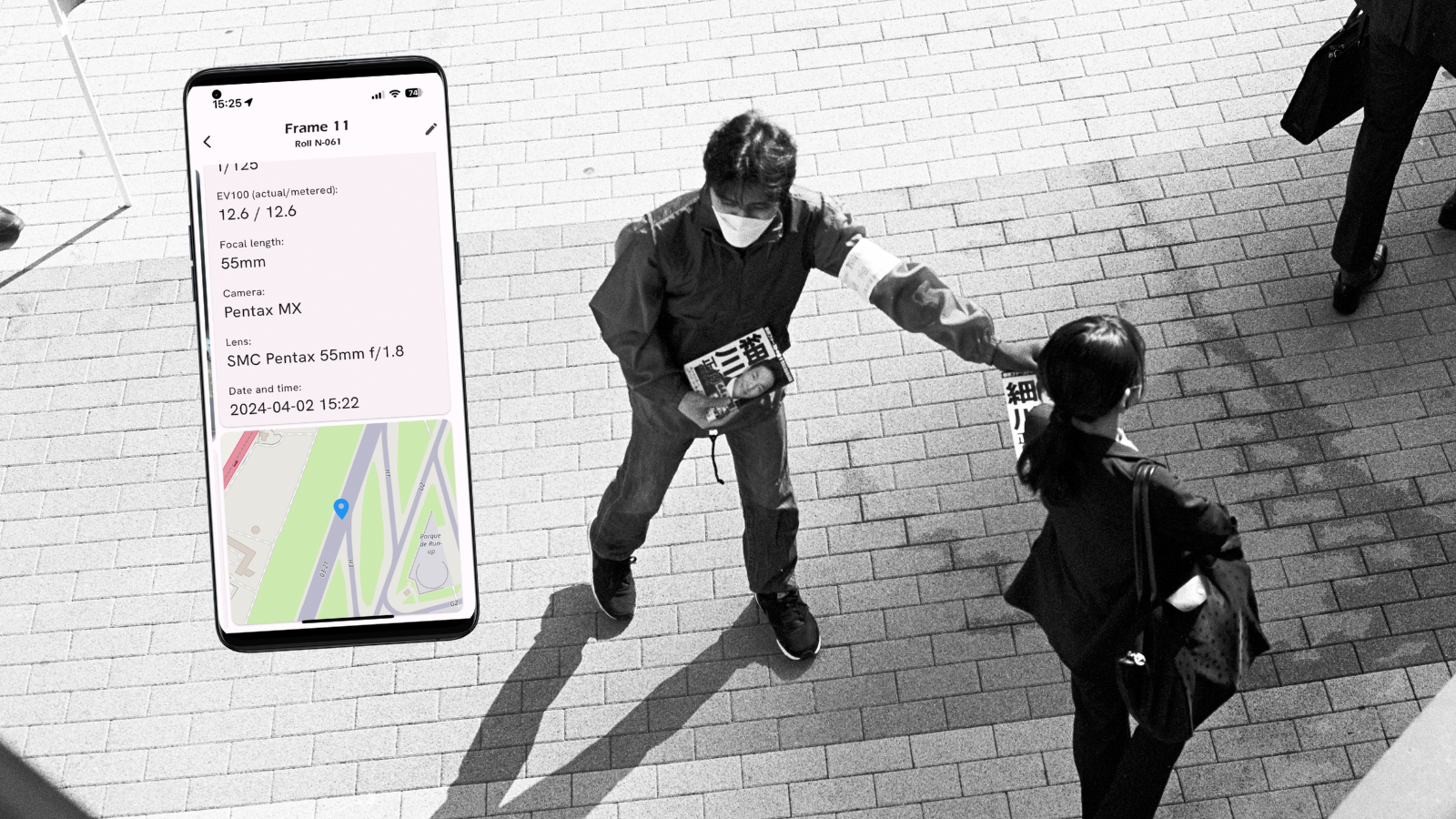
Digital Notes for Analogue Photographers
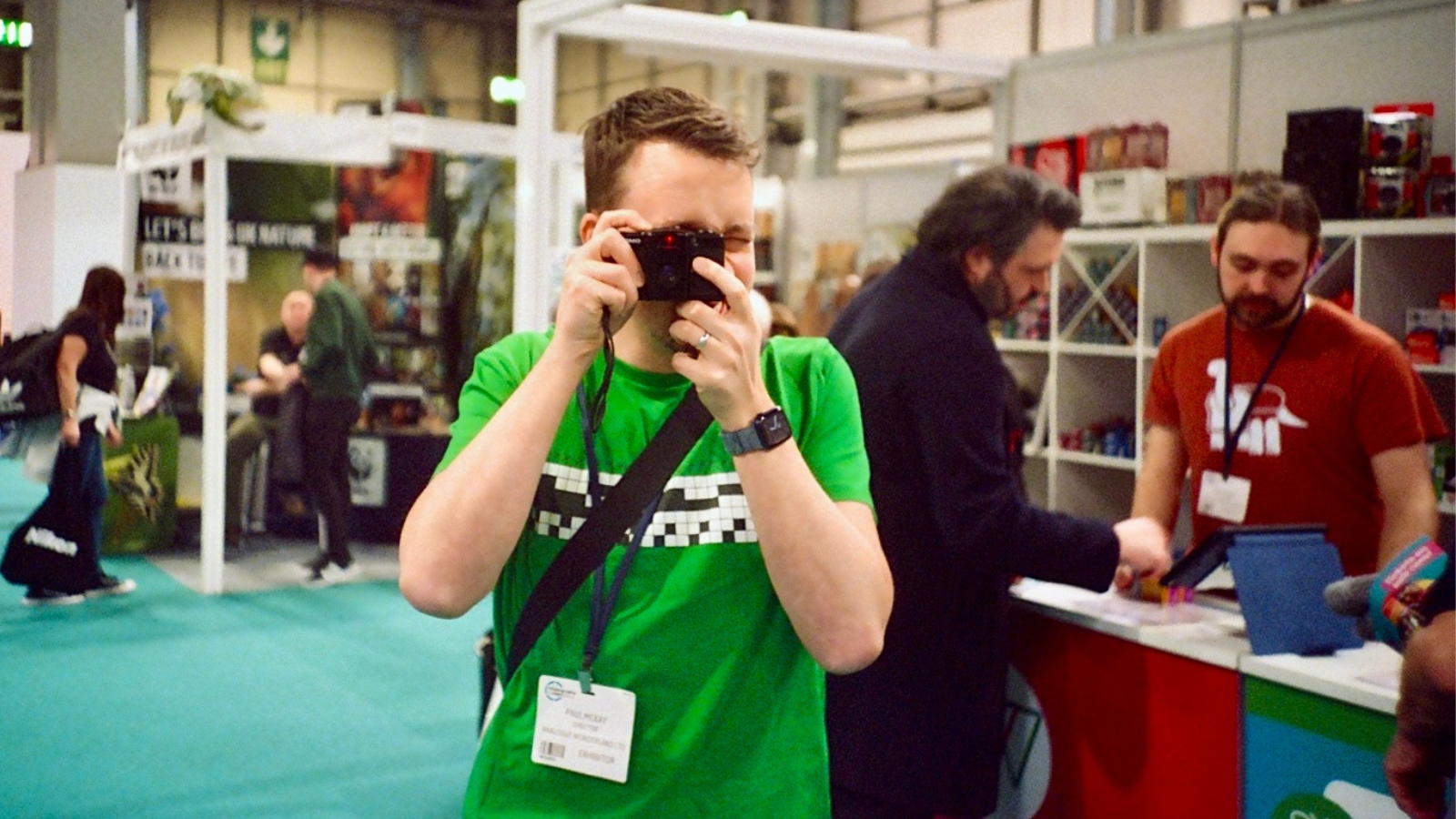
Why Shoot 35mm Film?
Subscribe to our newsletter 💌.
Sign up for our newsletter to stay up to date on film photography news, sales and events:
Free Tracked Shipping
On all UK orders over £50
Passion For Film
An unbeatable range and an on-site lab
Our Customers Trust Us
Thousands of independent 5* reviews
All Deliveries are Carbon Neutral
Independently audited and verified by Planet
- Opens in a new window.

How To: Flying With Film
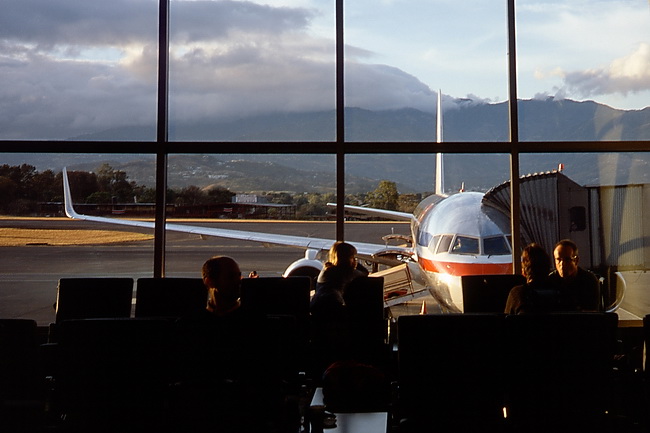
Juan Santamaria International Airport, San Jose, Costa Rica. (Camera: Olympus 35RC; Film: Fuji Provia 100F transparancy)
NOTE: This article has been significantly revised to reflect recent changes in airport scanning technology. You can read the revised version here. This older version is retained only for archival purposes.
Traveling photographers always worry about what might happen to their film when it’s time to go through airport security. And with good reason. X-ray scanners can fog film and ruin your hard-won photos. But how real is the danger, and what can be done to minimize the potential for harm?
Right off the top, let’s deal with the idea of just tossing your film in your checked baggage along with your socks and underwear. In the often confusing and contradictory world of air travel and film, the single point of universal agreement is that this is a bad idea. So, in a word, don’t. Airport screening in the U.S. follows guidelines issued by the Transportation Security Administration (TSA), and even they say, “Never place undeveloped film in your checked baggage, our security equipment used for screening checked baggage will damage your undeveloped film.” What more is there to add?
So our only practical option is to bring the film with us through airport security, and this is where the situation gets a little vague. Here’s the TSA’s take on the subject:
The X-ray machine that screens your carry-on baggage at the passenger security checkpoint will not affect undeveloped film under ASA/ISO 800.
But they also note:
If the same roll of film is exposed to X-ray inspections more than 5 times before it is developed, it is possible that damage may occur.
Air Canada makes the same points:
The equipment used for carry-on baggage at pre-board screening areas will not damage film with an ISO/ASA under 800. However, damage may occur if the same roll of film is exposed multiple times to a pre-board x-ray inspection.
If we parse these statements carefully, a couple of red flags go up. First, presumably, films with ISO ratings of 800 and greater should not be scanned even once. Second, repeated scanning is potentially harmful. Why? Because the effects of x-ray exposure are cumulative. Clearly the situation not as cut and dried as simply saying that anything under 800 is fine, anything over isn’t. Reading between the lines a bit, if a single scan is unwise for ISO 800 film, then it follows that two passes through the equipment (double the exposure) would be unsafe for ISO 400 film. Similarly, ISO 200 film should not go through more than four times and 100 speed film is in danger with eight scans. It’s almost impossible to avoid passing through security multiple times on a given journey, so clearly this is a concern.
A second consideration is what constitutes an acceptable amount of fogging? It’s not as if ISO 800 film is fogged into oblivion by one pass through the scanner, and ISO 400 is utterly unaffected — it’s a continuum. It all comes down to how much fogging are you prepared to accept in your photos? An amount that the TSA deems okay? Perhaps the TSA and other security operations have arrived at the ISO 800 number based on exhaustive testing and in-depth consultation with film manufacturers. But I doubt it. So what to do?
The safest course of action is to avoid having your film scanned at all, or at least, as few times as possible. Here are a few suggestions to help you accomplish that goal. First, keep your film in a clear plastic baggie that you can get at easily while in the security line up — just like you do with your liquids and gels. Screeners tend to be much more helpful if you make an effort to keep things moving along smoothly and don’t hold up your fellow passengers. Remember — they’re under intense pressure to get everyone through the system as quickly as possible. Anything you can do to help them achieve that goal will only help engender cooperation.
Second, be polite and prepared. I wait until it’s my turn to walk through the scanning arch, then, when I have the attention of the screener, I hold up my baggie of film and request a “hand check.” Those seem to be the magic words that security personal recognize and know how to respond to. “Please” and “thank you” are the other magic words, but then you knew that already, right?
Occasionally you’ll run into a screener who will rigidly apply the “under 800” guideline. That’s why I always include an expired, old roll of fast film in my baggie, so when they ask what kind of film I have, I can truthfully say “it’s a mix of different ISOs, including some fast film.”
What about special protective film bags? Don’t bother. Kodak succinctly describes the pitfalls: “The once popular lead-lined carry bags aren’t practical today because if an inspector can’t see through the bag, he will increase the intensity of the x-ray until he can. Therefore, film may receive more harmful radiation than it would otherwise if it were normally inspected.” Alternatively, the screener will probably just take your film out of the bag and run it through the machine anyway, but this time, in a slightly annoyed state because of the extra time and trouble it’s taking to process your carry-on stuff. See my previous note about making their lives easier.
Finally, if everything goes wrong and you run into a security worker who absolutely insists that your film be x-rayed even after you’ve expressed your concerns (politely, of course), don’t fight it. There’s nothing you can do at that point except get yourself into a world of trouble. If gentle persuasion didn’t work, angry insistence certainly won’t. In all likelihood, your film won’t be damaged by a single pass through the machine anyway. This is why I rarely fly with film faster than ISO 400. If my film gets scanned once or twice, it’s unlikely to be catastrophic.
Having said all of the above, I should add that I’ve traveled with film through dozens of airports both internationally and in the U.S. and Canada, and have never returned home with fogged film. The security staff I’ve encountered have, for the most part, been friendly and cooperative. Once in a while I even run into a screener who is also a fellow film user and is eager to chat. In my experience, such encounters are far more common than those wtih uncooperative security workers.
Unfortunately, every time I put a link in for the TSA’s guidelines, it dies. Their information on the subject seems to be something of a moving target. Your best bet is to go to their web site and perform a search for “camera film.”
Here’s what they are currently saying:
Undeveloped camera film is not prohibited, but you should only transport it in your carry-on baggage; the equipment used to screen checked baggage may damage undeveloped film.
If you are transporting high speed (800 ISO and higher) or specialty film, you may request to have it physically inspected when presented at the screening checkpoint instead of undergoing x-ray screening. You may also request that all of your undeveloped film be physically inspected instead of undergoing x-ray, particularly if your film has or may be screened by x-ray more than five times. To facilitate physical inspection, remove your undeveloped film from the canister and pack it in a clear plastic bag. We recommend leaving your film in the unopened manufacturer’s packaging.
In summary: – Never put your film in a checked bag. – Keep your film in a clear, plastic baggie and request a “hand check.” – Avoid traveling with film faster than ISO 400. – Include one roll of old, fast film in your supply. – Be polite when dealing with security personnel.
Happy travels!
45 Responses to How To: Flying With Film
Nice advice… I was about to take some film either in a older lead-lined bag or get something newer, but the Kodak logic seems right… Didn’t know they could crank up the radiation at will. My solution at the moment will be to maybe bring a few rolls and mail-deliver the bulk to the first hotel. After multiple-stops in a week by car, I’ll mail the shot film out to the labs or to home and fly filmless on the return trip, just carrying the digital shots with me. Larger format film is too expensive and film in general is, for me, a intensive effort on the shots I take, to risk fogging.
Bob: Some people dispute that screeners can “crank up the radiation at will,” but as I said in the article, even if they can’t, they will probably regard the mystery blob of your film bag as something that needs additional inspection, which might mean emptying its contents and running them through the machine anyway. Gary
I am going on a trip this summe and was planning to take around ten rolls of film. After reading this article I was wondering if my film woul be affected at all. I shoot 200/400 speed film and the film would be in my suitcase( not carry on) on the way there and the way back.
As I emphasized above, the one thing just about everyone agrees upon is that putting film in your checked bag is a bad idea. I wouldn’t do it once, let alone twice. Film with ISO of 200 or 400 will probably be okay as carry-on, so long as you don’t put it through scanners too many times. Gary
If possible, I mail my film home. It’s an inconvenience but if you want to be sure…
Everything that is mailed is inspected by X-Ray and will not control the way the inspection is done.
I prefer to take the films with me and to act like is advised in this excellent article. Taking the films with you, you will have some control how they are inspected.
Clarified a lot of issues for me regarding traveling with film. Learned to take the film through carry-on, smile and ask for a “hand check” regardless of the ASA and be sure to have the film in a TSA approved size baggie to expedite the process. I never travel with film over an ASA of 400, so should be in good shape. Thanks for taking the time to put this info together!
Thank you so much for these tips! This is really helpful!
Can an older camera without film be packed in check-bag & take a new roll of film in my purse, carry-on?
Sure. The camera isn’t the issue, it’s only the film that’s potentially harmed.
Thank you for the advice, I hadn’t even realised that this was an issue. Last year I put a 200 iso film into a bag that went into the baggage hold and thankfully it was absolutely fine! I wouldn’t have done it if I’d known this though, sounds like I was lucky. It was on a flight from Bucharest to London so perhaps the Romanians aren’t as stringent with the scanners as they are in America.
I suppose this affects film that hasn’t been exposed as well?
I found following on the official website from Heathrow Airport * These films will be visually unaffected by up to eight and in some cases 32 passes through the hand-luggage x-ray machines. Processed film can be x-rayed virtually without limit, without suffering any ill effects whatsoever from these machines.
What is meant by processed film? I suppose exposed film? In this case there is no danger, is this correct?
Processed film = film that’s already been developed. Exposed that hasn’t been developed would be in trouble.
Thanks for this, a very helpful article.
Does your ‘suitcase’ get scanned? I wasn’t planning on taking any luggage on board with me therefore keeping it in the main storage of the plane.
Is this at risk at all? I’m going to be going through Iceland/ Alaska/ Canada then back to the UK via airports, so the film will be scanned multiple times if they do scan non ‘hand-luggage’
Many thanks!
All luggage gets scanned, which is why I recommend asking for a hand check of your film. Re-read paragraph #2.
“To facilitate physical inspection, remove your undeveloped film from the canister and pack it in a clear plastic bag. We recommend leaving your film in the unopened manufacturer’s packaging.”
this statement seems contradictory. do I remove it from the box and cannister? or leave the unopened box?
Only the TSA can say for sure. I just leave it in the unopened box. If they want to take it out the box, they can. Sometimes they do, sometimes they don’t.
What about scanning film that is in a camera? Would that pose a problem?
I don’t think the camera offers much protection, so it would be affected to the same extent as a roll of film in its box.
I am going to be going to Australia soon. I will have with me both iso 200 & 400 35mm film as well as iso 800 instant film. Will unused packs of the instant film be okay through security? Also, with the 35, I assume it will be okay on both the way there and the way back if it is scanned twice on the way there and twice on the way back.
I would request hand checks of all your film. I don’t see an upside to taking a chance — especially with the instant film.
Pingback: 52 Photo Tips #15: Don’t put film in hold luggage | Zorki Photo
thanks for the usefull and interesting advice.
I am travelling from the mainland Europe to Edinburgh, UK. Following text can be found on the Airport security website: “Specialist film (ISO 800 and above) under exceptional circumstances, when passed more than eight times through the hand-luggage security scanning machines, can be affected. However, the nature of the change occurring is barely noticeable to the naked eye and indeed does not become clearly visible until film is exposed around 32 times.”
further stated: “Hand search requests for professional film will normally be accommodated, but the final decision in all individual cases will always rest with the on-duty security supervisor.”
So if I can believe this website it would take a ISO 102800 film to get only “barely visible effect”. I’ll spare you and myself the calculation to 32 times. However this will not hold me back to still ask for a hand check!
Hi fellow film enthusiasts,
I’ve been traveling Europe for about 4 1/2 months now and brought 20 rolls of Kodak Portra 400 with me on my travels. I hadn’t done any prior research to my trip and all of my rolls have been on about five flights total inside my checked-in luggage. Upon doing some research and still currently traveling, I’m worried all of my film is going to be fried when I get them developed.
I realize it’s completely my fault but I’m hoping atleast some of the film is still salvagable.
Has anyone had any experience dealing with film that has gone through checked-in luggage x-rays?
I’m taking my Nikon F4 and a lot of Portra, even some 160vc, I’m afraid they’ll check the film inside my camera. There’s a roll of Portra in there currently and I leave next week, should I try wind it out and attempt to leave the leader out or should I keep it in there and hope they don’t ask to inspect it?
Hey, Zac, what happened with your filme? Did you already developed? The same happened to me! I traveled with my undeveloped filme on my checked in luggage and now I’m afraid I lost it 🙁
I will know the result next month. I hope i’ll be lucky. hah good luck for you too!
An extreme solutions with black and white film would be that you could bring the chemicals (in the allowed amounts) to process it at your place of stay. Of course that doesn’t help undeveloped film.
Anyone know of these effects are more or less impactful on Polaroid 600 film?
If you are using instant film, especially the ones form Impossible-Project, the following link may be interesting: https://impossible.zendesk.com/hc/en-us/articles/216750328-How-to-travel-with-Impossible-film-
They recommend to remove all film from the checked baggage and to place it in the carry-on baggage. And processed film will be unaffected by x-rays.
However, I think, that heavy x-ray influence still may impact the processed instant films. => Has anybody experience with processed instant films (from Impossible Project)? Thanks!
At US airports the hand search is a nice option. Of cause it might be more difficult if you shoot sheet film (4×5″ and larger), because they come in a paper box in which you could hide anything and if you open the paper, the films are exposed. So there is only the x-ray.
In Europe you can forget hand search completely. They will insist on the x-ray. I never had any problems with my films (mostly ISO100, sometimes Tri-X 400 and Portra 400) so I do not worry to much.
But in general I would not really worry anyhow. If I travel to some place in the USA, I have my hotel adress a few days before I get there so two or three days before I get there, I make a mail order from Adorama or B&H and it will be there a day after my arrival.
In Germany there is Fotoimpex who send out the goods within the following day latest and German post usually works overnight.
As long as you stay within countries like the USA, Canada, western and central European countries or Japan, Hongkong, etc. there is zero problem to get the film locally. If you use C-41 films you can even get the developed without any problem before you fly home.
I have been travelling with sheet film for 30 yrs and rarely had a problem with fog, because I packed it in a lead case, maybe just a little at times depending on how many times I went through security checks, but the fog would be slight and over the whole surface, and I could print through this ‘base fog’…BUT for the first time yesterday I had a serious problem, which I thought I should share. When I flew to a distant location I packed my 4×5 in a lead envelope as usual…unexposed. To my dismay when I personally developed my film locally, the whole pack of film had a serious exposed band about 1 cm all the way across the surface, and all the way through it, at exactly the same spot. At first I thought it might be me, camera?bellows?lens? Nope! When I developed a sheet from the brand new unexposed package, it too had the band and I could see another slight band at the top of the sheet also. I know for a fact that a new generation of scanning equipment is in operation in airports and these are VERY powerful…my error was too pack my film in lead, because when the scanner cannot see through it, a second more powerful burst of X-Rays is sent and that one destroys everything! Including passengers and the poor security official believing what he is told and spending days on end sending bursts of X-Rays or Gama Rays at this point! If there is a moral to this story, I think the best thing would be to ship the film directly from a reputable photo/film supplier via a trustworthy carrier eg Fed Ex…but to inquire with both if this is possible and what security checks the film will go through…. I hope this little piece of advice might prove useful…and I wish you all the best to all you Film Lovers out there. When there is a will, there is a way!
Thanks for the helpful article.
In your experience, will security personnel inspect a camera containing partially exposed but undeveloped film? Or does the camera itself need to go through the X-ray scanner (as I would expect they would insist on, given it’s an electro-mechanical device). In this case, I assume the guidance would be to rewind partially exposed rolls and have them hand checked.
I’ve travelled on one trip with undeveloped rolls of Ilford Delta 3200, which were scanned at least 2-3 times going through airports. I didn’t notice any fogging in that case, but I will try to have my film hand checked in the future.
Will they hand check your camera as well? I have a roll in my camera currently and I haven’t even shot half of it yet! Luckily it’s only ASA 400.
I’m curious..I have a film from the 40’same I believe. I will be traveling from Seattle to Las Vegas soon. I want to take it with me to have it looked at by a German History buff. The film is a 9.2mm Austrian tape. Will it be safe to travel with?
I find this topic quite interesting as I was planning on travelling with film, but I guess I’ll just develop it before getting on the plane. Question though: so how do film rolls come to Europe and other continents without being damaged? I suppose the cargo shipments get scanned as well? Interested to know.
I recently bought a nikon FE2 (used but in great condition). I took a trip from Victoria -> Cabo ->Toronto -> Victoria so I went through 3 carry on scanners with it. When I tried to get the film developed they told me it wouldn’t work and suggested it could have been the x-rays. Looking at the film there are no frames or anything, just a foggy wave going horizontally across the whole strip. Could the xrays be that damaging? or does this sound more like a user/camera error?
Hi Ezra, sounds like X-Ray damage as shown on Kodak Website.
https://www.kodak.com/global/en/service/tib/tib5201.shtml
Thanks for the valuable info.
I have a canon AE1 camera and will be travelling out of the country with it. I’m wondering if the film in my camera is safe? I would hate to waste a roll of film (I’ve only taken 3/24 exposures) What is the procedure for checking film cameras?
Hi: two things; 1) politeness is not the same in the whole world. There are countries where they are even more paranoiac at airports or checkpoints than others. I agreed with all that you said here, but if for any reason at check screen security you insist to explain why you ask for a hand check in some countries, they will be refusing to do so until you´re dead. I am mexican, and in México authorities don´t give a shit about politeness, sad but true. 2) I am a 40 years experienced photographer (ten of them spent as a photojournalist in old times not digital) who had traveled quite a few thousand miles, and to say something extra to a more relax extent, I would tell you for sure, that I even traveled wit ISO 3200 and nothing happens not even noticed change in the quality end when my film were developed. As shit happens, sometimes even miracles also happens. 🙂
Possibly a silly question but … does this apply to all film, whether it has been exposed or not ? Is the film at risk before I even shoot any pictures ? I’m doubtful whether I can buy and/or process 120 film in some countries I’m planning to visit so I’m trying to understand the risk !
Yes, exposed or unexposed film face the same kinds of risks. The only kind that isn’t at risk is film that’s been developed.
Hi; this is a very useful article. Thank you for posting it. Sorry if I missed the answer for what I’m about to ask; I checked also other articles. I know that unprocessed film is at risk, but I’ve read that exposed film is even more sensitive than unexposed one. I’ve also read about the number of times that a film could be scanned without expecting damage: like around 4 or 5 times for ISO400 film, for example. What is the number to expect when the film is exposed? Half that of the unexposed?
http://www.thephoblographer.com/wp-content/uploads/2014/01/Chris-Gampat-The-Phoblographer-TSA-Travelling-with-film-1-of-1ISO-4261-30-sec-at-f-2.4.jpg
Leave a Reply Cancel reply
Your email address will not be published. Required fields are marked *
Save my name, email, and website in this browser for the next time I comment.
This site uses Akismet to reduce spam. Learn how your comment data is processed .
- Search for:
- Black and White
- Favourite Cameras
- Framed Prints
- Nature & Landscapes
- Old Iron Photography
- Random Photos
- Travel Photography
- Uncategorized
Recent Posts
- A Little Glen
- Bunchgrass Valley
- Kirkjufell Mountain from Grundarfjörður
- Mount Edith Cavell
- Angel in Glacier Form
- Waiting for Spring
- Pair of Pine Cones
- Vine and Tree
Recent Photos
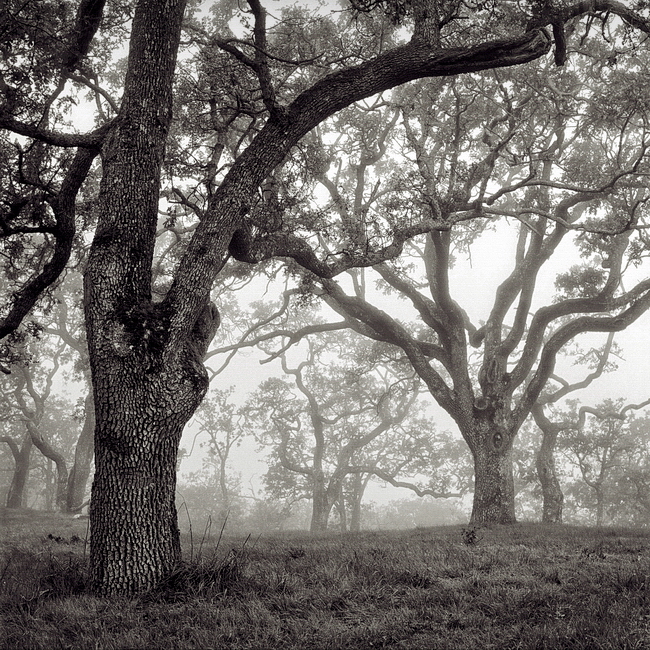

- Extenuating Circumstances
- THF – Zentralflughafen Tempelhof
- „Ausländer“
- „Europaplatz“
Travelling with Film: 7 (or so) Tips for Surviving the Airport

[A]irports are sites where identity is confirmed or questioned; they are spaces of public display; they are contested zones where privacy and national security vie for priority; they are complex factories for the production of patriotism and the privilege of mobility. At the same time, airports can be considered as generic spaces, forgettable and often uncomfortable. They are designed to be passed through, and in rapid fashion… Christopher Schaberg , The Textual Life of Airports
Travelling with film is not that difficult. However, if precautions are not taken, standard security screening, namely X-ray scanning, can irreversibly damage unprocessed film. This damage takes the form of “fogging” the film, a bit like opening the back of a camera half way through a roll. Film is sensitive to radiation, of which visible light and X-rays are but two wavelengths. Too much exposure to radiation, and the film can be seriously compromised.
Fortunately, there are a few sensible tips we can take to prevent the worst damage from occurring. Here are a few rules you can follow to make the airport experience run as smoothly as possible with film.
1: NEVER EVER PLACED UNPROCESSED FILM IN CHECKED LUGGAGE
Checked luggage is subject to very intense explosive detecting, space-time warping high-radiation screening that will SEVERELY DAMAGE YOUR UNPROCESSED FILM.
GUARANTEED.
Never, ever pack unprocessed film in your checked luggage.
Processed film is safe from X-rays in checked luggage, however it is not safe from less-than-caring baggage handlers who may route your luggage to Melbourne, FL , instead of Melbourne, Australia. It is highly recommended you place all processed film (and camera gear) in your carry-on luggage.
2: ALWAYS place film in your hand luggage
Keep your film with you at all times in your hand luggage. No, this is not a canned security announcement, it’s for the sake your film and irreplaceable images. Although hand luggage is inevitably subjected to X-rays, the screening machines utilised employ a less intense form of X-rays. This means that your unprocessed film should be safe from fogging for at least a number of scans.
According to a 2003 Kodak technical publication , 400 ISO film will start to see some degradation after 6 X-ray scans, but it may depend on the film and the screening device. I’ve had film (up to 800 ISO ) go through up to 8 scans and I’m yet to see any degradation.
That said, the faster the film, the more sensitive it is to all radiation, including X-rays. Try to avoid sending your Ilford Delta 3200 into the machine. If you’re concerned, you can request a hand inspection of your film in order to avoid the X-ray machine, but your mileage may vary (see below).

3: ALWAYS place your film in a clear and accessible container/bag
Keep your film accessible at all times. Better yet, don’t place it in your carry-on bag, keep it in your hand. A general rule every air traveller should follow is to be prepared for the processes of security before reaching the queue. Don’t hold the queue up by fiddling around with a dozen different rolls of film stuck somewhere between your copy of the Robert Ludlum’s The Bourne Repetition by Eric Van Lustbader and your boarding passes. Keep your film together and place it separately on the X-ray conveyer.
Even after your film gets x-rayed, inquisitive security-types may wish to take a closer look, so keep it accessible. Carrying of analogue camera equipment may be a bit of a novelty/threat for security staff, so beware.
4: ASK for a hand inspection of your film, but be prepared to be rebuffed
At most screening points, you can ask for a hand inspection of you film. In theory. In practice, this may not occur. The security staff will usually state that the X-ray machine is “safe” up to 1600 ISO. Alas this doesn’t take into account any cumulative X-ray exposure your film may have incurred from prior screenings.
Be polite, you might get lucky, but will the staff will more likely counter that the machine is “safe” for film. Don’t get angry. That won’t be good for anyone. Some photographers recommend placing a “dummy” 3200 speed roll in their bag, just so they can justify a hand inspection. Again, not something I’ve ever done, but has been known to work.
Be aware that asking for a hand inspection of goods may single you out for further forms of “enhanced” screening, such as explosives testing and hand inspection of all your carry-on luggage.

5: UNLOAD your camera before screening
Although this isn’t always critical, it is best to travel without loaded cameras. It’s never happened to me, but have heard of security staff wishing to inspect the innards of cameras. Best case, you waste part of a roll by having to rewind it to open the camera. Worst case, some clumsy security fool opens your camera for you (rare, but it has reportedly occurred).
6: NEVER use “X-Ray Safe” lead-lined bags for film storage
These foil and lead-lined bags were popular items back in the day, however these days they’re, at best, useless. At worst, they will lead to the irreversible damage of your film. These bags theoretically render items contained within opaque to X-ray screeners. Great.
But think about it: if you were an X-ray operator, would you allow a giant grey blob of mystery through to the gate? Probably not. Best case, the operator asks you to open the bag and inspects the contents, worst case the operator increases the power of the X-ray radiation in order to penetrate the bag. Whoops. Film. Fogged. Pictures. Gone.
7: BE POLITE and do not rage against the (X-ray) machine
Getting angry with security staff will not get you anywhere. Whatever your personal opinions may be on the “security theatre” of the airport, it’s a shit job and the security staff are there for the protection of the air-travelling public.
Yes, it’s not hard to find evidence of over-zealous officials, but in Australia, the experience seems to be a fairly benign one, unless you’re not white , have arrived from China and have Channel 7 camera crews in your face. For everyone else, it is much better to grin and bear a few minutes of security screening than risk missing your flight.
Update July 2018
Firstly, this article gets shared around quite a few photography pages and posts online, so thanks for stopping by.
Secondly, in response to this post, Alan Logue — an Australian photo industry stalwart and 20+ year veteran of Kodak Australia — wrote:
“This is one of the best, and most sensible articles I’ve seen on this topic. Having worked at Kodak, and being involved in tests of x-ray units and film, it makes a ton of sense.”
But more than just inflating my ego, he also reinforced some helpful hints when travelling with film through airport security:
“What I would add is to take all film out of boxes and cans , and put the cassette(s) in a plain plastic zip lock bag, on the top of your hand luggage so when you get to the screening area, you are prepared , and the screener can see what you have. If you want to, drop in a couple of 3200ASA cassettes (get them from a lab) and tell them that there is high speed 3200 film in there — it just might make it easier to get a hand scan. As Richard said — smile at the security person , tell them what a great job they do, and schmooze them to make your check easier. If you upset them, they can make your life absolutely miserable.”
I couldn’t agree more and it’s great to have practical advice from an industry veteran. Thanks, Alan!
Fun fact: all the images on this post went through at least two X-ray security points. They turned out just fine.

I’ll have a lot more to write on airports at another time, thanks to the inspiration of The Textual Life of Airports. I’m sure you can’t wait.
Continued in Part III - Buying Film and Developing
Further Reading
‘Baggage X-ray Scanning Effects on Film’ 2003, Technical Information Bulletin , Eastman Kodak, Rochester NY Schaberg, C 2013 The Textual Life of Airports , Bloomsbury
Awesome, you're subscribed!
Thanks for subscribing! Look out for your first newsletter in your inbox soon!
The best of Sydney for free.
Sign up for our email to enjoy Sydney without spending a thing (as well as some options when you’re feeling flush).
Déjà vu! We already have this email. Try another?
By entering your email address you agree to our Terms of Use and Privacy Policy and consent to receive emails from Time Out about news, events, offers and partner promotions.
Love the mag?
Our newsletter hand-delivers the best bits to your inbox. Sign up to unlock our digital magazines and also receive the latest news, events, offers and partner promotions.
- Things to Do
- Food & Drink
- Food & Drink Awards
- Coca-Cola Foodmarks
- Area Guides
- Theatre & Dance
- Music & Nightlife
- Restaurants & Cafes
- Bars & Pubs
- Visitor Guide
- Competitions
- Los Angeles
Get us in your inbox
🙌 Awesome, you're subscribed!

The best movies that make us want to travel Australia
While we wait for interstate borders to open, plan your great Australian getaway vicariously through these fantastic films

While most states are saying "hell no" to letting one another in right now, the reality is that some fine day, we hope quite soon, we'll be able to get out and explore this great southern land unbound. Certainly long before we get to hop overseas .
With that in mind, we took a look at some of the finest films available to watch right now that show off the glory of Australia. From Sydney's world-famous beaches to Melbourne's coolest streets via the red centre and way out west, there's so much to see. You can plot your eventual escape from the safety of your sofa with our help.
An email you’ll actually love
Travel Australia via the movies

Strange Colours
This film is set in the incredibly remote northern New South Wales town of Lightning Ridge, near the Queensland border, and there's a surreal and mesmerising pull to this crumbling old mining community. Once famed for its vast deposit of glimmering black opals that seem to have rainbows captured within them, it's now pretty run down. As captured by Melbourne-based, Russian-born director Alena Lodkina and her cinematographer Michael Latham, there's an alluring beauty to its Mad Max -like decay that makes us want to explore its dusty expanses and buried treasures.

The Adventures of Priscilla, Queen of the Desert
PSA: D o not try and upstage a drag queen if you value your life and your dignity. Unless, of course, you're the majestic Simpson Desert. Tracing some of Australia's most jaw-dropping scenery, from the Sydney Harbour Bridge to Alice Springs via a thoroughly wonky route taking in Coober Pedy, Broken Hill and King's Canyon, this packs the wow. Stephan Elliott's camp fantastic may have its wobbly moments, but it remains a queer touchstone. Hugo Weaving, Guy Pearce and Terence Stamp are the drag queens in question, and Lizzy Gardiner and Tim Chappel won Oscars for their outré costumes. But it really is the outstanding outback that steals the show.

Top End Wedding
From Adelaide to the Tiwi Islands, the lush majesty of Australia is front and centre in this thoroughly lovely rom com of errors. The ever-fabulous Miranda Tapsell both wrote and stars in this soul-soother, playing a hectically busy lawyer who decides to marry her hunky boyfriend (Gwilym Lee, Bohemian Rhapsody ) on the spur of the moment. Tapsell's character heads to Darwin to meet her mum (the legendary Ursula Yovich), but her mum is nowhere to be found, kicking off a frantic road trip across the NT. Your peepers are in for a treat.

Picnic at Hanging Rock
Never has a film made us so desperately long to get utterly and completely lost as Peter Weir's dreamily erotic take on Joan Lindsay' s Victoria-set mystery novel Picnic at Hanging Rock . Depicting the disappearance of schoolgirls and their teacher while exploring the rocky crevasses of this ancient volcanic marvel, it's super spooky. T he tree-shrouded rock is absolutely a character in its own right, a ridiculously beautiful setting to the north of Mount Macedon, some 70km drive from Melbourne. The site was wrested violently from its traditional Aboriginal owners, and the sense of something much greater reclaiming a wrong and righting it is overwhelming. And while Lindsay's novel was fiction, something beautiful and terrifying in equal measure has been willed into our existence. Many folks swear it's fact.

Take in those dreamy Blue Mountains views in this steamy 1930s period piece, which stars Kiwi Sam Neill as polyamorous Australian artist Norman Lindsay and Pamela Rabe as his savvy business manager, model and wife, Rose. Helmed by Flirting director John Duigan, the sumptuous period piece film is also notable for Elle Macpherson’s acting debut, appearing as one of their multiple, errr, muses. Hugh Grant and Tara Fitzgerald are also fun as an Anglican priest and his discombobulated wife, who are so not ready for what they witness. Cheeky fun and easy on the eye, it really shows off the lush surrounds.

Death in Brunswick
Melbourne's thriving, multicultural inner-northern streets get the VIP treatment in this darkly comic '90s gem, also starring Sam Neill. He plays a heavy-drinking, leather jacket-wearing nightclub cook who only has eyes for Doctor Doctor star Zoe Carides’ barmaid. Unfortunately, his best intentions get waylaid when he's implicated in a murder and gets caught up in a turf war between rival Greek and Turkish gangs. If that sounds daaaaark, trust us, things go hilariously awry from there. Director John Ruane’s likeably offbeat and refreshingly working-class adaptation of Boyd Oxlade’s hit novel is a treat, and a great way to see Melbourne while most of Australia can't go there.

We absolutely love Neighbours alumna Radha Mitchell as an opera singer gone to seed in this stunner from d irector Ben Hackworth. But as grand as she is, it's arguable that the backdrop's just as starry. She haunts the tropical loopiness of Queensland’s surreal Paronella Park like Miss Havisham, but dealing with humidity. We so want to explore the croc-infested paradise lost where this steamy melodrama unfolds. The film zooms in on the long shadow of a family tragedy that intrigues, teasing forbidden love between Mitchell and the easy-on-the-eye Thomas Cocquerel, with Odessa Young ( Shirley ) in the mix for good measure.

The Sapphires
There's a technicoloured glow to The Sapphires that director Wayne Blair and cinematographer Warwick Thornton say pays its dues to The Color Purple. It rousingly follows the true story of four Aboriginal women – played by Jessica Mauboy, Deborah Mailman, Miranda Tapsell and Shari Sebbens - who soared to stardom on the back of their magnificent voices. As managed by Chris O'Dowd ( Bridesmaids ), they head to Vietnam to entertain the US troops during the war while coming to terms with the effect of the Stolen Generations on their own families. Sure, Ho Chi Minh City looks amazing, b ut there are also lush scenes shot on the Murray River in Albury, on the NSW/Victoria border, that make us want to dive on in.
Watch now

In the neon-soaked golden days of Kings Cross, a fashionably greasy Heath Ledger plays 19-year-old Jimmy. He's in love w ith Alex, a sweet young Rose Byrne, and pursued by Bryan Brown as terrifyingly blokey gangster Pando. Complete with a nostalgia-inducing Powderfinger-heavy soundtrack, this 1999 film is a real love letter to the Sydney underground at its most gritty and dangerous. Bondi Beach also makes a starring cameo, with the sun-dappled water enticing Jimmy for a fateful dip in the briny deep.

- 3 out of 5 stars
Of course vast swathes of Australian filmmaker Garth Davis' lost kid odyssey Lion take place in India. Five-year-old Saroo (Sunny Pawar) gets on train near his home in Buhanpur and winds up on the mean streets of Kolkata some 1,600km away, expecting never to see his family again in this heart-tugging biopic. But the movie also shows off some pretty stunning Tasmanian scenery, after he's adopted by Aussie couple Sue and John Brierley (Nicole Kidman and David Wenham). Glowing up into the dreamy Dev Patel, Saroo winds up dating Rooney Mara's Lucy. We get to see the Apple Isle through their moonstruck eyes. That includes lush shots of Mount Wellington, Cape Huay, Bruny Island and Recherche Bay, as well as capital Hobart.

The Dressmaker
The Brits are invading. First, it was Patel in Lion , now it's Kate Winslet in director Jocelyn Moorhouse's The Dressmaker . But when they're both (a) awesome and (b) surprisingly good at the accent, who can begrudge them? Winslet is cast beside the towering Judy Davis and hubba Liam Hemsworth, with Hugo Weaving thrown in for good measure, and we're sold. The film is based on the novel by Rosalie Ham, and Moorhouse describes it as "Clint Eastwood 's Unforgiven with a sewing machine." Winslet plays a fashion designer who returns home to the fictional town of Dungatar aiming to exact vengeance on those who wronged her in the past. The dinky Victorian towns of Little River and Horsham stand in. You can also catch a glimpse of Melbourne's beautiful Art Deco picture house the Yarraville Sun.

Mystery Road
Ivan Sen's bush noir Mystery Road is shot in and around the sheep and cattle outback town of Winton in Queensland. It takes elements of classic Westerns and fuses them with a crime thriller's bite. Aaron Pedersen is inspired casting as grizzled lone ranger Detective Jay Swan, who drives into town dragging his demons behind him while hoping to solve the unexplained murder of an Indigenous girl. Is the local cop, played by True Blood 's Ryan Kwanten, friend or foe? The ubiquitous Hugo Weaving pops up once more, and Uncle jack Charles steals the show. But it's the vast red rock tearing at impossibly clear skies that hooks us into this whodunit.

Despite being the nation's capital, Canberra does not pop up much in Australian cinema. Maybe that has something to do with it (and, indeed, the ACT) being a made-up place conceived purely to stop Melbourne and Sydney duking it out? Who can say? Still, director Cate Shortland (whose Black Widow is stuck in limbo) does manage to make it work cinematically in the sensuous, sun-dappled Somersault . Granted, Abbie Cornish totes runs away to play with Sam Worthington in the snowfields of much prettier Jindabyne, across the NSW border, but close enough. A contemporary Australian classic that shows off a side of the country less well seen.

True History of the Kelly Gang
Hero to some, outlaw to others, Ned Kelly (George MacKay) casts a long shadow over Australian history. While the truth most likely lies somewhere in the middle, local filmmaker Justin Kurzel ( Snowtown, Macbeth ) cuts through our messy mythology to deliver a visceral, sweat-soaked nightmare of 'destiny' undone. Adapted from the Peter Carey novel, iand also tapping Nicholas Hoult, Russell Crowe and a scene-stealing Essie Davis as the fearsome Kelly matriarch, with the fractured love story between a mother and son the film's raw, beating heart. You'll also enjoy a jaw-dropping look at the Winton Wetlands, as well as a peep inside the old Melbouren Gaol.

These Final Hours
OK, OK so impending apocalypse is a less than relaxing holiday prep vibe. But... local director Zak Hilditch does pull off some pretty jaw-dropping shots of a deserted Perth and surrounding pristine beaches in this end-of-everything disaster movie. Starring Nathan Phillips ( Wolf Creek ) and Angourie Rice ( Ladies in Black) , the film works as a contemporary update on Neville Shute’s novel On the Beach. The rest of the world is already gone, so what would you do if you only had 12 hours left to live? It features spectacularly screw loose cameos by Sarah Snook ( Succession, The Dressmaker ) and Daniel Henshall ( Snowtown, Acute Misfortune ). If you can get past the doom and gloom, the abandoned streets do have a seriously cool 28 Days Later look, which Hilditch says was pretty easy to shoot on a Sunday in WA. Worth remembering if you're looking for a chilled escape.

If you want your coastal WA vistas with less disaster is upon us and a lot more surf's up bliss, you could do worse than resort to one of the roughly 80 zillion Tim Winton adaptations out there. Breath is the feature debut of writer, director and much-loved star Simon Baker. It also features Guardians of the Galaxy alumna Elizabeth Debicki. The latter doesn't get anywhere near enough to do here, and you can pretty much guess the wounded masculinity schtick will be laid on thick, but wowee does the roiling sea cinematography sing. Baker finds an analogy for Winton’s poetic prose in the ocean’s undulations and the silent sanctuary below. Capturing awe-inspiring surfing footage, it makes us want to book a trip to the southern WA town of Denmark ASAP.
Need a time out? Check out these easy-viewing TV highlights

The best binge-worthy feel-good TV on the ABC and SBS
We've turned to our public broadcasters (bless the ABC and SBS) for lowkey cute chuckles with a side of feel-good warm and fuzzies that will cost you nada to mainline.
[image] [title]
Discover Time Out original video
- Acknowledgement of Country
- Press office
- Investor relations
- Work for Time Out
- Editorial guidelines
- Privacy notice
- Do not sell my information
- Cookie policy
- Accessibility statement
- Terms of use
- Reviews policy
- Competition terms
- About the site
- Modern slavery statement
- Manage cookies
- Advertising
- Report an error
- Time Out Market
Time Out products
- Time Out Worldwide
- Cast & crew
- User reviews

A young woman goes on a 1,700-mile trek across the deserts of West Australia with four camels and her faithful dog. A young woman goes on a 1,700-mile trek across the deserts of West Australia with four camels and her faithful dog. A young woman goes on a 1,700-mile trek across the deserts of West Australia with four camels and her faithful dog.
- John Curran
- Marion Nelson
- Robyn Davidson
- Mia Wasikowska
- Adam Driver
- 89 User reviews
- 137 Critic reviews
- 78 Metascore
- 2 wins & 19 nominations

- Young Robyn

- Publican's Wife

- (as Brendan MacLean)

- All cast & crew
- Production, box office & more at IMDbPro
More like this

Did you know
- Trivia There have been many attempts to bring Robyn Davidson's adventure memoir to the big screen. Over the years both Julia Roberts and Nicole Kidman have been attached to the lead role. Development on the movie adaptation began before lead actress Mia Wasikowska was even born.
- Goofs Robyn's trek takes about nine months. But her hair stays the same length, neatly blunt cut, throughout the journey/movie.
Robyn : [narrating] Animal lovers, especially female ones, are often accused of being neurotic and unable to relate to other human beings. More often than not, those pointing the finger have never had a pet. It seems to me the universe gave us three things to make life bearable: hope, jokes, and dogs. But the greatest of these gifts was dogs.
- Crazy credits The initial credits are shown over original photos from the "Tracks" book and the National Geographic article. The photos, taken by Rick Smolan, show Robyn Davidson during the actual walk.
- Connections Featured in At the Movies: Venice Film Festival 2013 (2013)
- Soundtracks Sunburned Written by Tim Rogers (as Rogers), Davey Lane , (as Lane), Andy Kent (as Kent) and Russell Hopkinson (as Hopkinson) Performed by You Am I
User reviews 89
- freemantle_uk
- May 31, 2014
- How long is Tracks? Powered by Alexa
- March 6, 2014 (Australia)
- Hanway Films
- See-Saw Films
- Dấu Chân Hành Trình
- Flinders Ranges, South Australia, Australia
- HanWay Films
- Screen Australia
- See more company credits at IMDbPro
- Sep 21, 2014
Technical specs
- Runtime 1 hour 52 minutes
- Dolby Digital
Related news
Contribute to this page.

- See more gaps
- Learn more about contributing
More to explore

Recently viewed

Australia Recommends 2024

Come and Say G'day

G'day, the short film

Discover your Australia

Travel videos

Deals and offers

Australian Capital Territory

New South Wales

Northern Territory

South Australia

Western Australia

External Territories

The Whitsundays

Mornington Peninsula

Port Douglas

Ningaloo Reef

Airlie Beach

Kangaroo Island

Rottnest Island

Hamilton Island

Lord Howe Island

Tiwi Islands

Phillip Island

Bruny Island

Margaret River

Barossa Valley

The Grampians

Hunter Valley

Yarra Valley

McLaren Vale

Glass House Mountains

Alice Springs

Uluru and Kata Tjuta

The Kimberley

Flinders Ranges

Kakadu National Park

Eyre Peninsula

Karijini National Park

Great Barrier Reef

Blue Mountains

Daintree Rainforest

Great Ocean Road

Purnululu National Park

Cradle Mountain-Lake St Clair National Park

Litchfield National Park

Aboriginal experiences

Arts and culture

Festivals and events

Food and drink

Adventure and sports

Walks and hikes

Road trips and drives

Beaches and islands

Nature and national parks

Eco-friendly travel

Health and wellness

Family travel

Family destinations

Family road trips

Backpacking

Work and holiday

Beginner's guide

Accessible travel

Planning tips

Trip planner

Australian budget guide

Itinerary planner

Find a travel agent

Find accommodation

Find transport

Visitor information centres
Deals and travel packages

Visa and entry requirements FAQ

Customs and biosecurity

Working Holiday Maker visas

Facts about Australia

Experiences that will make you feel like an Aussie

People and culture

Health and safety FAQ

Cities, states & territories

Iconic places and attractions

When is the best time to visit Australia?

Seasonal travel

Events and festivals

School holidays

Public holidays
How to get to Australia's most iconic cities

How long do I need for my trip to Australia?

How to travel around Australia

Guide to driving in Australia

How to hire a car or campervan

How to plan a family road trip

How to plan an outback road trip

Uluru Aboriginal Tours, Uluru-Kata Tjuta National Park, NT © Tourism Australia
Beginner's guide to travelling Australia
Are you ready for endless sunshine, beautiful beaches, dramatic deserts and ancient cultures? Start planning your trip with our first-timer's guide to visiting Australia.
Know before you go

Tips to start planning your trip

When is the best time to visit?

How long do I need for my trip?
Find your perfect destination.

Australian states, territories and capital cities

The complete guide to accommodation and hotels in Australia

10 Australian destinations you simply can't miss
Planning essentials.

Getting here: USA to Australia flights

Australian visa and entry requirements FAQs

Getting around

Why Australia is the best place to visit
Experience australia like a local.

A handy guide to the Australian lifestyle

Australia's bucket list food experiences
Make a booking.

We use cookies on this site to enhance your user experience. Find out more . By clicking any link on this page you are giving your consent for us to set cookies.
Acknowledgement of Country

We acknowledge the Traditional Aboriginal and Torres Strait Islander Owners of the land, sea and waters of the Australian continent, and recognise their custodianship of culture and Country for over 60,000 years.
- International (English)
- New Zealand (English)
- Canada (English)
- United Kingdom (English)
- India (English)
- Malaysia (English)
- Singapore (English)
- Indonesia (Bahasa Indonesia)
- Deutschland (Deutsch)
- France (Français)
- Italia (Italiano)
- 中国大陆 (简体中文)
*Product Disclaimer: Tourism Australia is not the owner, operator, advertiser or promoter of the listed products and services. Information on listed products and services, including Covid-safe accreditations, are provided by the third-party operator on their website or as published on Australian Tourism Data Warehouse where applicable. Rates are indicative based on the minimum and maximum available prices of products and services. Please visit the operator’s website for further information. All prices quoted are in Australian dollars (AUD). Tourism Australia makes no representations whatsoever about any other websites which you may access through its websites such as australia.com. Some websites which are linked to the Tourism Australia website are independent from Tourism Australia and are not under the control of Tourism Australia. Tourism Australia does not endorse or accept any responsibility for the use of websites which are owned or operated by third parties and makes no representation or warranty in relation to the standard, class or fitness for purpose of any services, nor does it endorse or in any respect warrant any products or services by virtue of any information, material or content linked from or to this site.

25 Best Movies About Australia & Australian Films To Love
This post may contain affiliate links that earn us a commission at no extra cost to you.
Travel across Oceania with the best movies about Australia. These Australian films are sure to transport you there and enhance your next trip.
If you are looking for great Australian movies, fill up your “to-watch” list here.
Watch animated films with jovial penguins alongside movies about Australia guaranteed to teach you more about Australian culture and history.
Take a road trip with drag queens on a tour bus named Priscilla. Dance to your own beat, and rock ‘n roll to the top of the charts.
See which Australian movie was the first to be filmed and shown entirely in Aboriginal language. Witness untold stories and sit on the edge of your seat with thrillers and Australian horror movies.
Plus, find romantic comedies, an infamous story about a pig with big dreams, and a few of your favorite cast members. Many of these movies are also based on beloved Australian books.
So, let’s travel across Oceania with the best Australian movies sure to make you laugh, cry, learn more, and even scare you. A crocodile named Sweetheart is waiting for you…
As always, ‘best’ is subjective, and we’d love to know your favorite movies set in Australia and top Australian films in the comments.
*Please know that since our readership is based largely in the U.S., we try to pick movies about Australia that are accessible and available in America or that you can add to your watchlist. Still, some are harder to acquire.
You may also love these books about Australia .
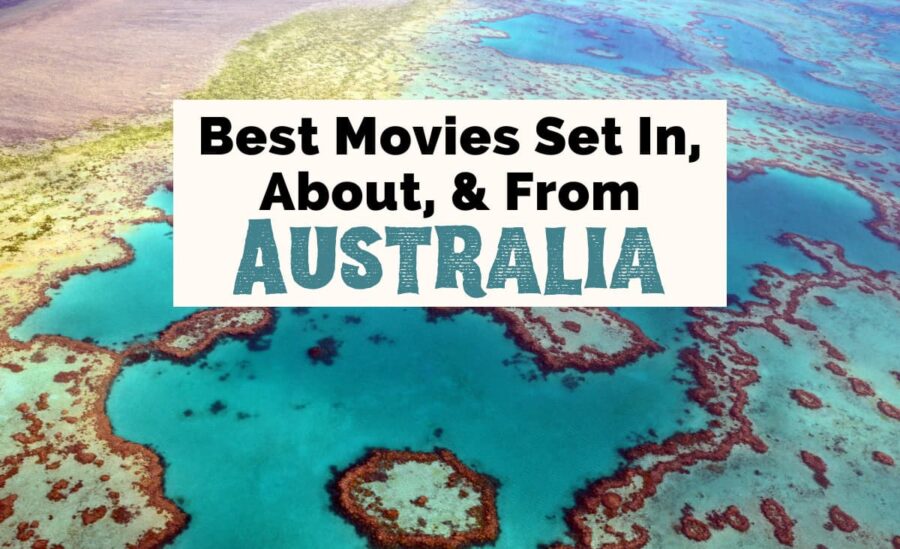
Grab your favorite movies set in Australia here:
- Express VPN – Using Virtual Private Networks (VPNs) allows you to view movies worldwide – and they help keep your information safe. Our writers couldn’t have such diverse film reviews without a VPN.
- Amazon Prime Video – Stream thousands of ad-free movies and TV series on demand with Prime Video.
- Audible Plus : From Amazon, listen to Amazon Originals, podcasts, and audiobooks. They add new titles every week.
Table of Contents
25 Best Movies About Australia
By Sheree Strange
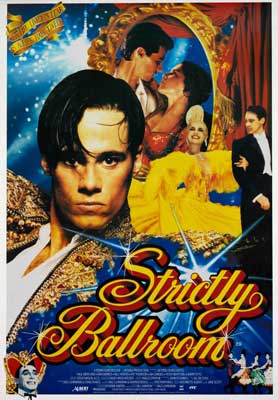
1. Strictly Ballroom (1992)
Long before Baz Luhrmann was world-famous for his flashy big-budget Leonardo DiCaprio films, he was a struggling arts student in Western Australia who roped his friends into developing a short play about the cut-throat world of competitive ballroom dancing.
It took him ten years to find the funding and support, but eventually, that play became Strictly Ballroom , one of the best movies about Australia.
In this satirical romantic comedy, Scott Hastings is a ballroom dancing legacy.
He looks set to win the Pan-Pacific Grand Prix Dancing Championship, if only his partner and coaches can convince him to stop making up his own non-regulation choreography.
Ballroom beginner Fran believes in him, though, and together they dance their way into the spotlight, and our hearts.
Watch Strictly Ballroom : Amazon
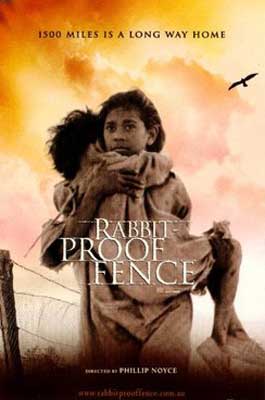
2. Rabbit-Proof Fence (2002)
Rabbit-Proof Fence is one of the most heart-wrenching movies set in Australia, one that reveals the horrific cruelty inflicted on the Stolen Generation of this continent’s First Nations people.
Based on the 1996 book Follow The Rabbit-Proof Fence by Doris Pilkington Garimara (which, in turn, is loosely based on the true story of the author’s mother), it follows three Aboriginal girls’ escape from the Moore River Native Settlement in an attempt to find their way home to their families.
Their only guide on the 1,500-mile journey is the “rabbit-proof fence” that ran the length of the country, a failed attempt at pest control by colonial invaders. Watch Rabbit-Proof Fence : Amazon
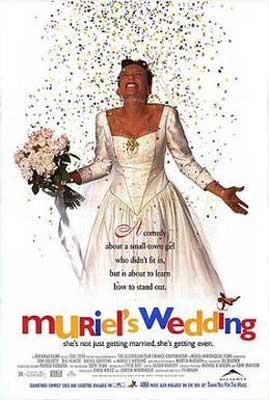
3. Muriel’s Wedding (1994)
Toni Collette is an Australian film and television star who went on to find international success and acclaim, but her break-out role was that of the titular character in Muriel’s Wedding , one of the most beloved Australian films of the ‘90s.
Muriel is sick of being an object of ridicule for her family and friends in the dead-end (fictional) town of Porpoise Spit.
She decides to secure for herself a good-looking fiance and the promise of a glamorous wedding as a debut into a new and fabulous life.
With a fabulous ABBA-heavy soundtrack, this Australian comedy-drama is a must-watch for fans of Mamma Mia! Watch Muriel’s Wedding : Amazon
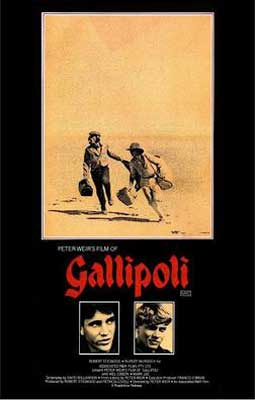

4. Gallipoli (1981)
Whenever the teacher wheeled the television set into your classroom in an Australian high school, there was an 80% chance they had a VHS of Gallipoli lined up and ready to go.
It’s one of those iconic Australian movies that everyone Down Under has seen at least twice.
This 1981 war drama features a very young Mel Gibson and a relatively-unknown Mark Lee, as young men who enlist to fight in the First World War.
They’re young, bright-eyed adventure seekers, who are slowly hardened and traumatized by the realities of war, building to a heart-wrenching climax at the iconic Anzac battlefield of Gallipoli, thousands of miles from home. Watch Gallipoli : Amazon
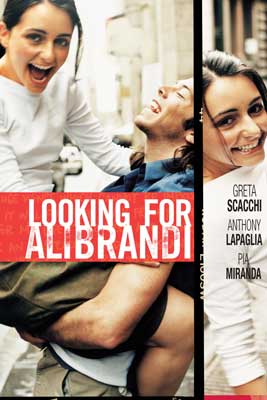
5. Looking For Alibrandi (2000)
Based on the Melina Marchetta young adult novel of the same name, Looking For Alibrandi is one of the best movies about Australia for teens – and adults will get a kick out of it, too.
It’s set in the inner city suburbs of Sydney in the mid-90s and revolves around the complex family relationships, friendships, and romances of scholarship student Josephine Alibrandi.
It’s one of the few Australian films that speaks specifically to the lived experience of second- and third-generation Australians living in major city centers, caught between the cultures of their immigrant parents and the country they call home. Watch Looking For Alibrandi : Amazon
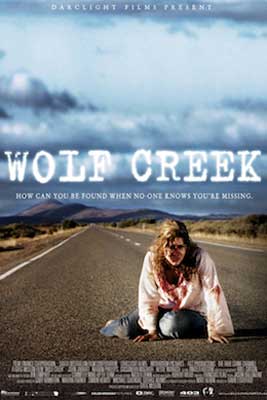
6. Wolf Creek (2005)
True crime lovers and fans of gore will find exactly what they’re looking for in Wolf Creek , one of the scariest Australian horror movies ever made.
Filmmaker Greg McLean drew his inspiration from the horrifying real-life crimes of serial killer Ivan Milat who, like the movie’s protagonist, preyed on backpackers and took delight in sadistic violence.
In this fictionalized version, a group of tourists is stranded when their van breaks down in Wolf Creek National Park. The only person around to offer any “help” is Mick Taylor.
The isolation of the Australian desert makes the perfect terrifying backdrop for the film’s realistic and unrelenting horror, guaranteed nightmare fuel.
Watch even more movies about backpacking . Watch Wolf Creek : Amazon
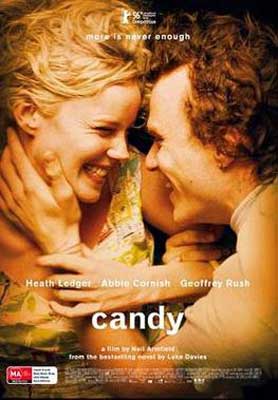
7. Candy (2006)
Candy is a beautiful and terrible story of love and addiction, not for the faint of heart. Like many of the best Australian films, it’s based on a novel of the same name (by Luke Davies).
It also features an all-star cast of homegrown talent: Abbie Cornish, Geoffery Rush, and the late great Heath Ledger.
In this deeply emotive story, passionate artistic bohemians Dan and Candy fall in love, and fall into heroin.
Over the course of the film’s three acts – Heaven, Earth, and Hell – they spiral through addiction and withdrawal, desperation and hope, only to find that some mistakes can never be undone. Watch Candy : Amazon
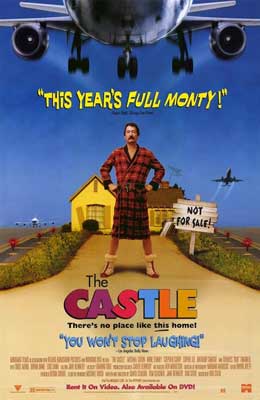
8. The Castle (1997)
Of all the Australian movies on this list, The Castle is undeniably the most quotable.
Whether it’s declaring that a gift is going “straight to the pool room,” or that “the only thing funnier than Hey, Hey, It’s Saturday is the Best Of Hey, Hey, It’s Saturday,” every Australian film-lover has an in-joke from this iconic comedy that they quote often.
It’s your typical David and Goliath tale: the working class Kerrigans are about to be forced out of their home by airport developers, who want to knock it down and build a new runway.
Banding together with their eccentric neighbors and hapless solicitor, they decide to fight it to the finish. Watch The Castle : Amazon
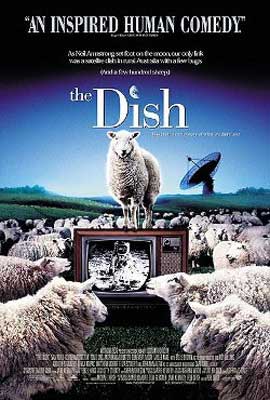
9. The Dish (2000)
Everyone knows that Neil Armstrong was the first man to walk on the moon, and every Baby Boomer has a story about watching it happen live on television…
But, how many of them know that a satellite in a tiny Australian town made it possible?
Of all the movies set in Australia, The Dish is the only one to celebrate the hard work of the team at the Parkes Observatory, who made the transmission of NASA’s Apollo program accessible to the world.
Even better: you can actually visit the satellite itself, “the most successful scientific instrument ever built in Australia,” still operational over half a century later. Watch The Dish : Amazon
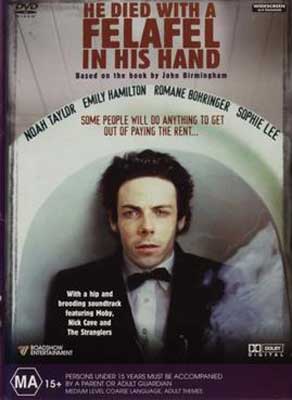
10. He Died With A Felafel In His Hand (2001)
Wherever you live in the world, if you’ve ever shared a house with friends (or strangers), He Died With A Felafel In His Hand is one of the Australian movies you absolutely must see.
You’ll laugh ‘til you cry at this oddball comedy-drama (based on a memoir of the same name by Australian author John Birmingham), which follows a young man through a series of share-houses up and down the country.
Between all of the failed romances, fetid kitchens, friendships turned sour, and ferocious landlords, there’s a heartfelt coming-of-age story that everyone can relate to. Watch He Died With A Felafel In His Hand : Amazon
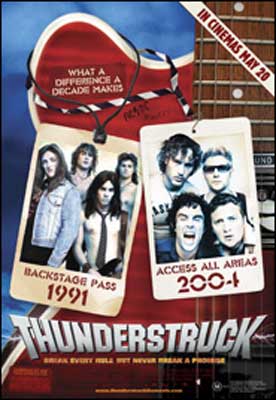
11. Thunderstruck (2004)
How far would you go to keep a promise to a friend?
Ben, Sonny, Lloyd, Sam, and Ronnie made a pact years ago that if any one of them died, the others would carry his remains to the resting place of AC/DC front-man Bon Scott and bury their friend next to the rock music legend.
Their band has split up since then, and their lives have scattered. However, Ronnie convinces the other four to come together to make good on their promise.
Thunderstruck has a little bit of everything that makes Australian films great: humor, mateship, eccentricity, and a road trip across the beautiful (if terrifying) outback – not to mention a rocking soundtrack! Watch Thunderstruck : Amazon
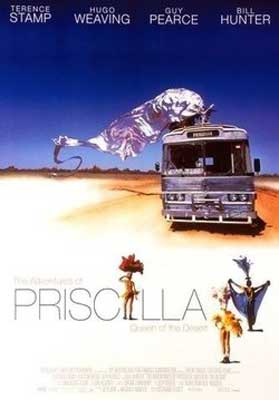
12. The Adventures Of Priscilla, Queen Of The Desert (1994)
Australian movies are renowned for their queer representation, and none more so than The Adventures Of Priscilla, Queen Of The Desert .
Back in 1994 – long before Ru Paul’s Drag Race made it “cool” – this wholehearted Australian road trip movie shows the best and the worst of a life lived in drag.
Two drag queens and a trans woman take their show on the road, driving from Sydney to Alice Springs in the tour bus they have affectionately named Priscilla.
They laugh, they cry, and they look absolutely fabulous in this beautifully directed film that won international acclaim for its positive portrayal of the LGBTIQ+ community. Watch The Adventures Of Priscilla, Queen Of The Desert : Amazon
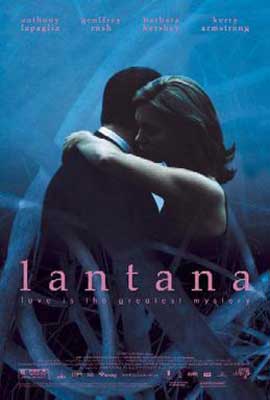
13. Lantana (2001)
The lantana shrub is an invasive species, well-known to everyone on the suburban outskirts of Australian cities.
The flowers look pretty from a distance, but they’re sticky and sweet and they hide a mess of tangled wood below their blooms.
It’s the perfect name for one of the most stunning movies about Australia, one that depicts the tangled web of relationships and secrets in every cul de sac.
It begins with the body of a woman, found in one of the ubiquitous lantana bushes – but who is she?
Lantana will haunt you long after the credits roll, with incredible performances from an all-star cast and an intricate plot that will keep you guessing until the very last second. Watch Lantana : Amazon
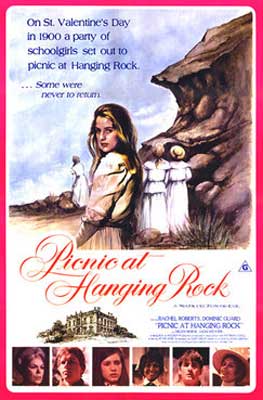
14. Picnic At Hanging Rock (1975)
Picnic At Hanging Rock is one of the most chilling Australian horror movies you’ll ever see – but it doesn’t feature a single drop of blood. You’ll also never know for sure who the “villain” is.
This spooky, supernatural tale is based on the 1967 novel of the same name by Joan Lindsay.
A group of schoolgirls take a picnic on Valentine’s Day in 1900, in the dying heat of the Australian summer, at the picturesque spot near Hanging Rock.
Some of the girls disappear – but why can none of their fellow picnickers account for what happened to them? Why have they never been found?
This is one of the movies set in Australia that still generates water-cooler chat today, more than forty years after its release. Watch Picnic At Hanging Rock : Amazon
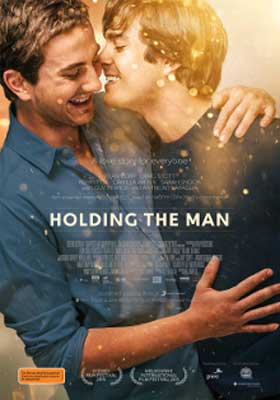
15. Holding The Man (2015)
It took twenty years for Timothy Cosgrave’s 1995 memoir to reach the big screen, but when it did, Holding The Man became one of the most beloved Australian films of the decade.
It traces the relationship of Tim and John, who met as teenagers attending Melbourne’s Xavier College.
Though they’re threatened, ostracised, and punished by their parents, teachers, and friends, their chemistry and desire for one another are undeniable.
Their chances of a happily-ever-after are dashed when they are both diagnosed with HIV. This devastating true story, played out by an incredibly talented cast of Aussie actors, will have you reaching for the tissues! Watch Holding The Man : Amazon
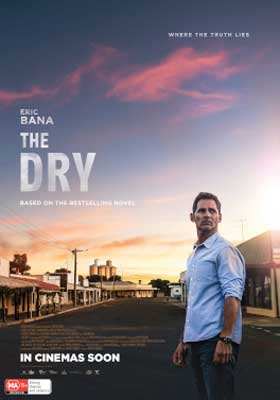
16. The Dry (2020)
Jane Harper’s 2016 novel The Dry introduced a whole new generation of thriller readers to the terrifying possibilities of the Australian outback.
The 2020 film adaptation, starring Eric Bana, is set to do the same for movie-goers.
Aaron Falk left his hometown twenty years ago, hoping to escape the dark rumors about his role in the death of his local girlfriend. He’s drawn back by the apparent murder/suicide of his childhood friend.
Movies set in Australia often circle around this theme, returning to places you’d rather forget. The atmospheric small-town setting and the drama of The Dry will have your eyes widening and your heart pounding. Watch The Dry : Amazon
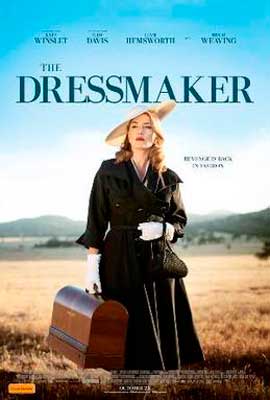
17. The Dressmaker (2015)
Few would describe Rosalie Ham’s debut novel as a comedy, but the film adaptation of The Dressmaker adds a lot of laughs while keeping the emotional heart of the story intact.
Kate Winslet plays the starring role, femme fatale Myrtle “Tilly” Dunnage, to perfection – supported by Liam Hemsworth (as the heart-throb love interest Teddy) and Judy Davis (as her mentally ill mother).
It offers the best of all of these movies about Australia: humor, homicide, drag, and a picturesque rural setting that hides all manner of secrets.
If you like your romances and comedies with dark twists and mic-drops, The Dressmaker is one of the Australian movies you absolutely must watch! Watch The Dressmaker : Amazon
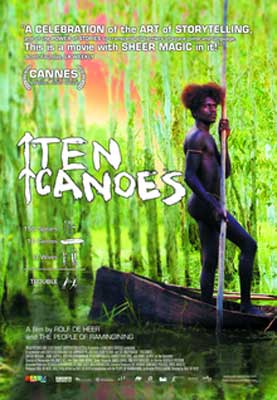
18. Ten Canoes (2006)
Ten Canoes occupies a very special place in the canon of movies about Australia: it was the very first to be filmed and shown entirely in Aboriginal language.
It’s a shame that it took until the 2000s for the beauty of Indigenous languages to be properly showcased on our screens, but this was an important step towards reconciliation and preservation of these threatened linguistic families.
The film is narrated by beloved (and recently passed) Aboriginal actor David Dalaithngu, a Yolngu man who grew up where the film is set, the great stretches of Arnhem Land in the Northern Territory.
The story is a docudrama moral tale, but that seems almost incidental to the incredible direction and performances. Watch Ten Canoes : Amazon
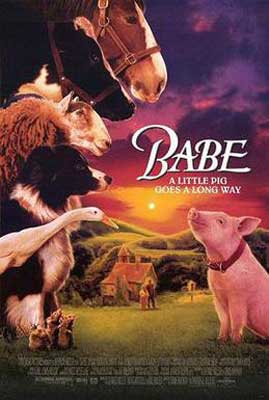
19. Babe (1995)
If you’re looking for movies about Australia that the whole family can enjoy, look no further than Babe .
It’s the hilarious and heart-warming tale of a farm pig who wants to be a sheepdog, one that proves anything is possible with hard work and belief.
The story is narrated by Roscoe Lee Browne and features an amazing cast of humans and animals (including James Cromwell as farmer Arthur Hoggett and comedy superstar Magda Szubanski as his wife).
It was filmed in the (very!) small town of Robertson, New South Wales.
It was so popular and received so much critical acclaim that three years later they filmed a sequel, Babe: Pig In The City , with much of the same cast. Watch Babe : Amazon
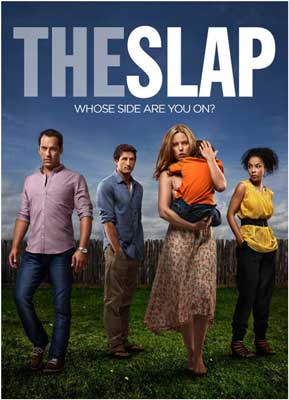
20. The Slap (2015 Miniseries)
Technically, The Slap is a mini-series (based on the award-winning 2008 novel of the same name by Australian writer Christos Tsiolkas), but if you binge-watch it, you’ll see it still counts as one of the best movies set in Australia.
Make sure you seek out the original Australian version, though; it was so good that American movie-makers cast and filmed their own version set in New York.
The story – focused on the rippling aftermath of one man slapping a child who is not his own at a family barbecue – loses something when it’s taken out of its Melbourne setting.
This is a suburban drama with searing commentary about race, class, and gender in Australia pulsing through as it unfolds. Watch The Slap : Amazon
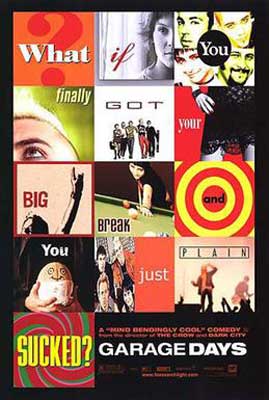
21. Garage Days (2002)
Every great Australian band – AC/DC, INXS, Midnight Oil–had their “garage phase.” All the not-great ones did, too. That’s the focus of Garage Days , one of the funniest Australian films of the early 2000s.
A young band of misfits in Sydney is trying their best to “make it,” despite their many personal dramas and the proliferation of pokies in pubs stealing space and attention away from live music.
Where will they find the money to record a demo? Will their mentally-ill lead guitarist leave them to become a dad? Will anyone come to their next gig?
It’s a long way to the top, as they say, if you want to rock’n’roll. Watch Garage Days : Amazon
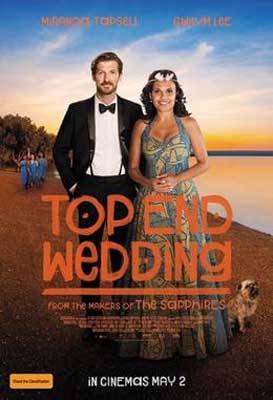
22. Top End Wedding (2019)
We were lucky to get Top End Wedding , one of the best movies about Australia of recent years, right before the onset of the pandemic.
Beloved Aboriginal Australian actress Miranda Tapsell co-wrote, produced, and starred in this fabulous romantic comedy.
It’s a familiar story – a big-city lawyer returns to her hometown for what should be a simple wedding to a wonderful man, only to find family drama and other obstacles standing in their way – but it’s set against the stunning backdrop of Darwin and remote regions of the Northern Territory.
Rotten Tomatoes has given it an outstanding 90% and describes it as “Familiar in form but winsome in its execution.” Watch Top End Wedding : Amazon
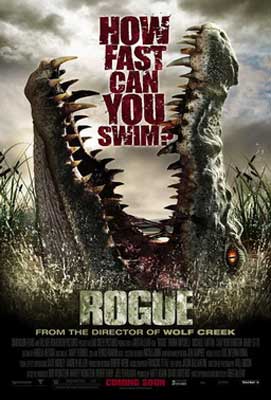
23. Rogue (2007)
If the rumors of dangerous wildlife Down Under scare you, this movie isn’t going to do anything to allay your fears!
Rogue is one of those Australian horror movies that capitalize on the very-real natural predators that lurk in every corner of this beautiful country, in this case, a 7.6 meter (25 ft) crocodile in Kakadu National Park.
You’ll be terrified to hear that the story is actually based on the real-life crocodile named (ironically) Sweetheart, a giant saltwater crocodile that attacked multiple boats that intruded onto his territory in the ‘70s.
Australians will get a laugh out of scaring the pants off tourists by lining this one up for movie night! Watch Rogue : Amazon
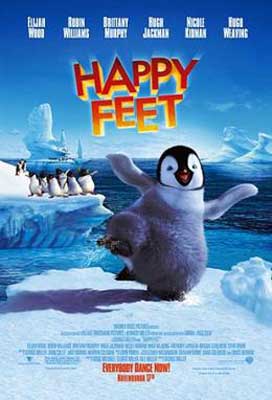
24. Happy Feet (2006)
Sometimes Australian movies have such a strong international cast, people don’t realize they’re actually Australian –but we’ll still happily claim them!
Happy Feet is a delightful animated film, starring talent from around the world (Elijah Wood, Robin Williams, Brittany Murphy) as well as local stars (Nicole Kidman, Hugh Jackman) and set in a fictionalized region of Antarctica.
It’s catchy, it’s sweet, and it’s fun for the whole family.
It was also the first Australian animated film to win the Oscar for Best Animated Film – a major feather in the cap of Sydney-based animation studio Animal Logic (for Warner Bros). Watch Happy Feet : Amazon
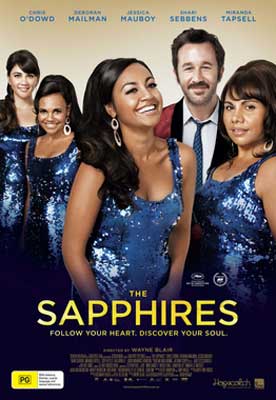
25. The Sapphires (2012)
Back in the 1960s, four Yorta Yorta (Aboriginal) women in regional Australia were “discovered” by a visiting talent scout. They formed a girl group, The Sapphires , and toured Vietnam singing for the troops on active duty.
Tony Briggs is the present-day nephew of one of those women, and he wrote a play about her experiences, which went on to become one of the most successful movies about Australia of the 2010s.
You should watch this movie for the insight it gives into this unique time in Australian history, for the incredible juxtaposition of settings (Albury, Australia and Ho Chi Minh, Vietnam), and–mostly–for the amazing performances by four of Australia’s best Indigenous actresses and singers: Deborah Mailman, Jessica Mauboy, Shari Sebbens, and Miranda Tapsell. Watch The Sapphires : Amazon
Save Your Favorite Australian Films For Later

Grab your favorite Australian movies here:
Thank you to TUL contributor, Sheree from Keeping Up With The Penguins
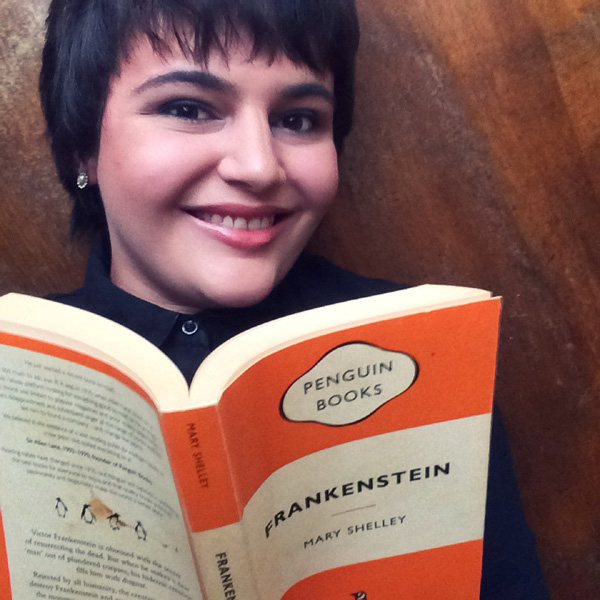
Sheree (pronouns: she/her) is a writer and book reviewer living on the land of the Gadigal people of the Eora nation (known as Sydney, Australia). She has been reviewing books on her blog, Keeping Up With The Penguins, since 2017. She reads books of all kinds and shares her thoughts on them all across the internet.
What are your favorite Australian movies?
What are your favorite Australian horror movies? How about your favorite movies set in Australia? Let us know in the comments.
And, if you are looking for more Australian films and enjoy time loop movies , try The Infinite Man (2014).
Where to head next:
Australian Books Books Set In & About New Zealand Movies Across Oceania Movies Around The World
These Australian films pair nicely with our Uncorked 2022 Reading Challenge .

Sheree Strange
I cannot find anyone to ask this question. In the late 1970’s or early 1980’s I saw an Australian film that I think had a storyline that was somewhat similar to “The Shiralee,” involving a young father on the road (or on the lam) with a young daughter. I saw this film, by the way, in Los Angeles. A tiny snippet of a scene that would help identify it is that when the father wanted to thwart the bad guys who were following him by car, he placed a nail under a car tire in such a way that the driver could not help running over the nail and puncturing the tire: the placement was shown in extreme close-up. Somewhat later in the film, one saw the car stopped by the side of the road. Also a snippet of a scene in a railway station where the father sang the line of an old ballad. Can anyone identify this film by the scanty info I have provided?
Hi Gerard, I cannot identity the film but maybe one of our readers can. Best of luck!
Leave a Reply Cancel reply
Your email address will not be published. Required fields are marked *

I've lived in Australia for years. Don't make these 8 mistakes when you visit — especially if you're an American like me.
Posted: April 28, 2024 | Last updated: April 28, 2024
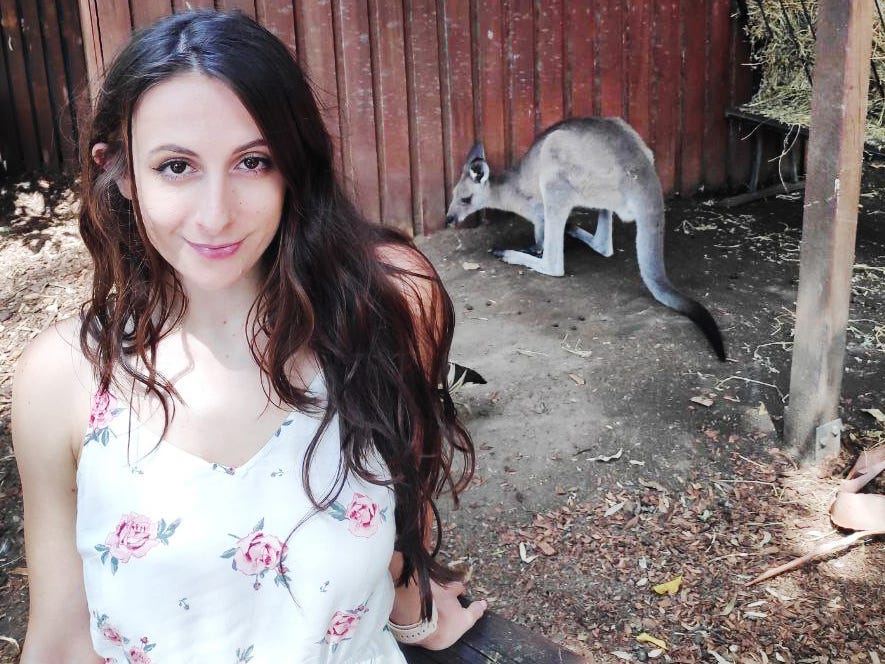
- I'm from the United States and I've lived in Australia for a few years.
- Australia has norms US travelers won't be used to — for example, we don't pre-pay for gas here.
- Australia's shops close earlier than they do in the US, and alcohol is more expensive.
I'm an American from Philadelphia who has spent the better part of four years living in and traveling through Australia .
With its over-$100-billion tourism industry , the country sees millions of visitors each year, many of them from the US like me. Although the US and Australia are similar in many ways, some significant differences could lead to misunderstandings or confusion.
If you choose to become one of these visitors, avoid making these common mistakes — especially if you're an American.
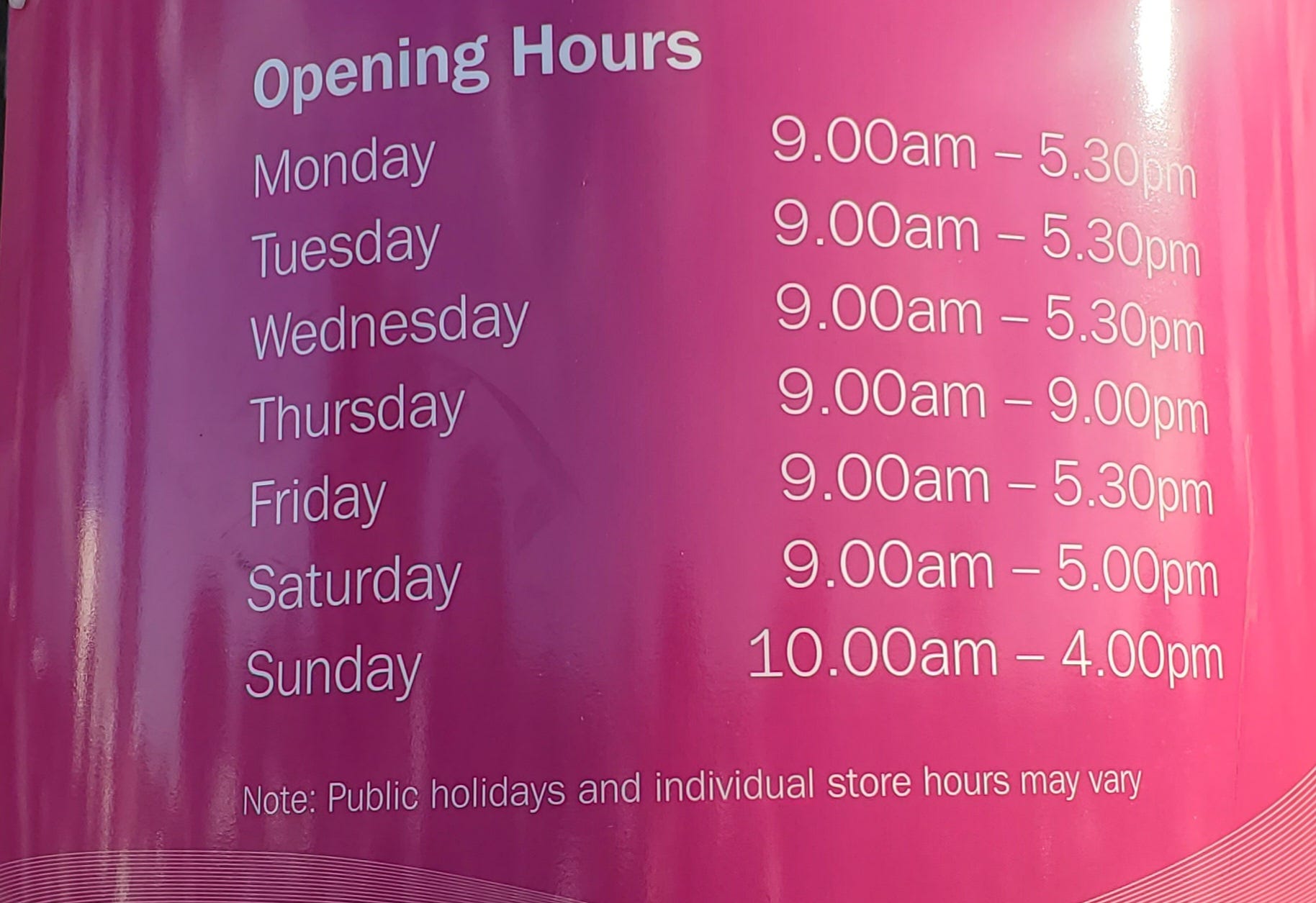
Thinking shops and cafés will be open past 5 p.m.
Although closing times for shops and cafés vary by region, I've found ones in Australia close much earlier than the places I visited in the US.
Here, it's common for retail shops to close by 5 p.m. and coffee shops even earlier, around 2 p.m.
It could be due to the comparably smaller population size reducing the demand for around-the-clock services and a general preference for a healthy work/life balance over excessive materialism.
If you do want to shop at night, you'll have to wait for "late-night shopping day," the one time a week when shops stay open until 9 p.m. instead of 5 p.m.
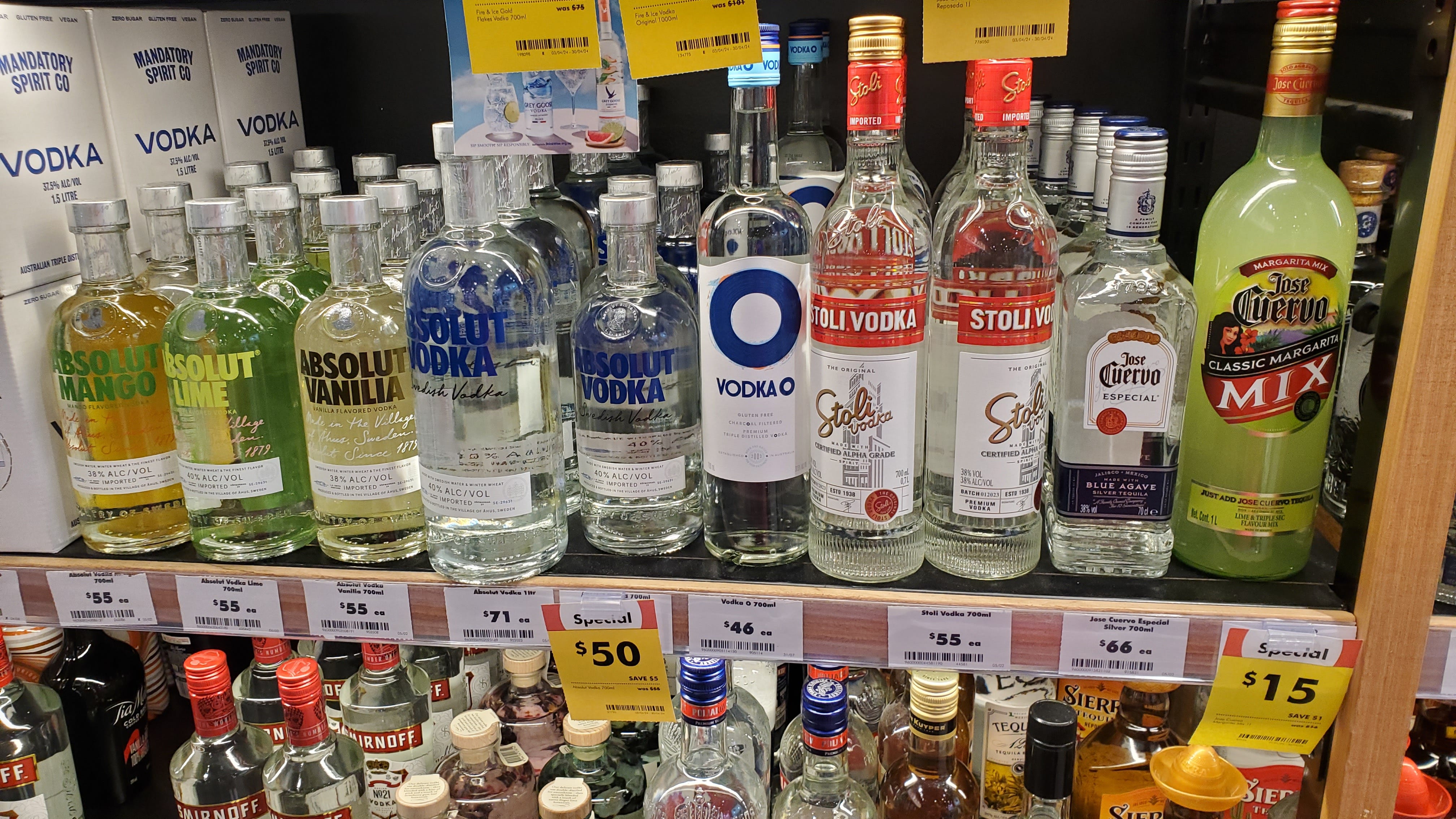
Expecting alcohol to be the same price as it is in the US
Australia has some of the highest taxes on spirits in the world . It's quite an isolated country, far from the places it imports a lot of its alcoholic products from, and you see that reflected in the prices.
Plus, wine is subject to a wine equalization tax (WET ) — about 29% of the wine's wholesale value — and may also be subject to the goods and services tax (GST).
Although choosing a locally brewed beer or homegrown wine is a more cost-effective option, don't be surprised if you see a bottle of spirits that would retail for $20 in the US being sold for triple the price here.
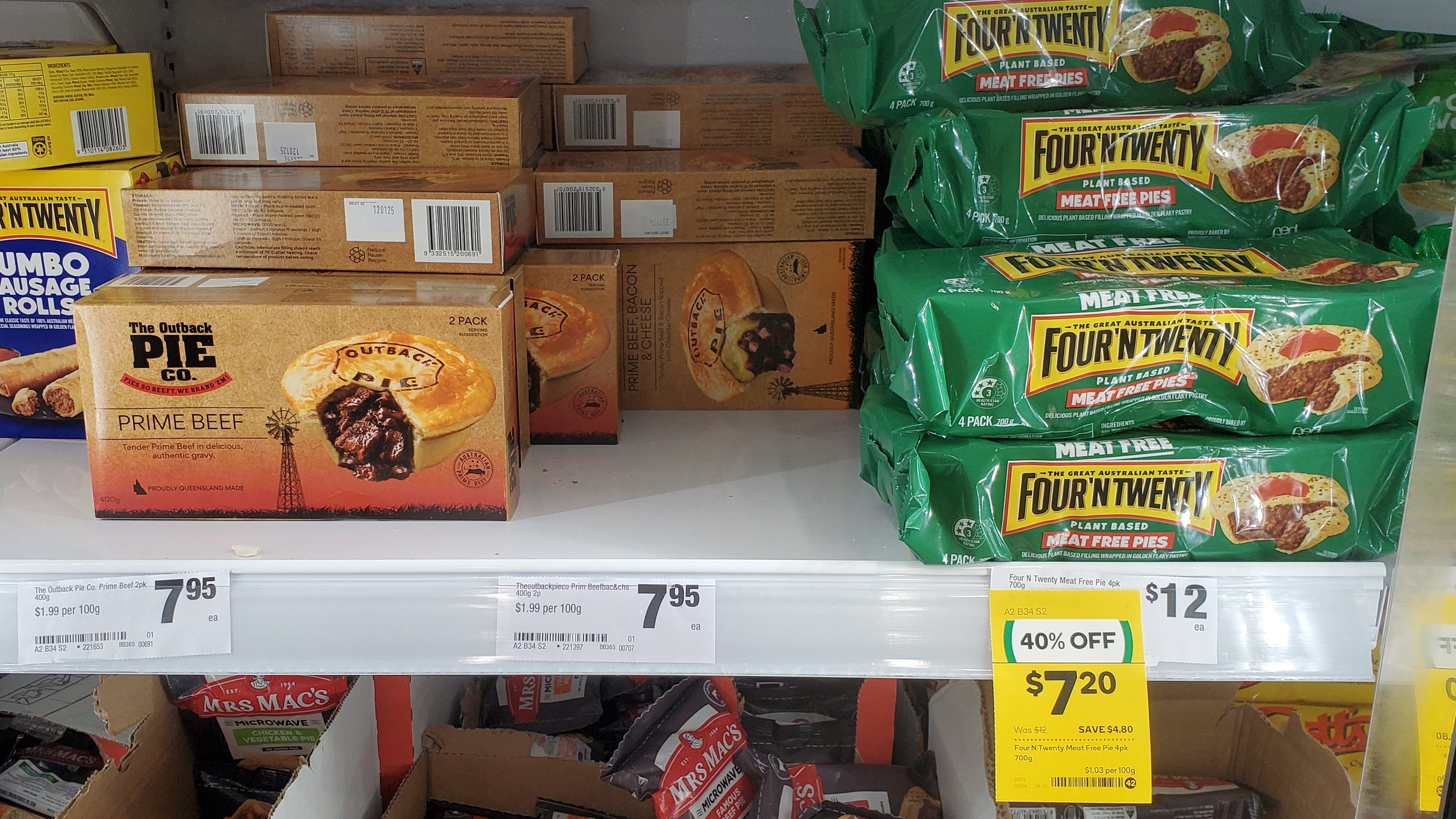
Assuming pie is only for dessert
Know that when you utter the word "pie," virtually no Australian is envisioning a decadent sweet treat, but instead a savory meat-based filling encased in a golden, flaky crust.
After all, meat pies and sausage rolls are at the top of the Australian culinary staples list.
Australia without meat pies is like the US without hamburgers or hot dogs. They're delicious, often enjoyed with tomato sauce (ketchup), and are to be eaten with your hands.
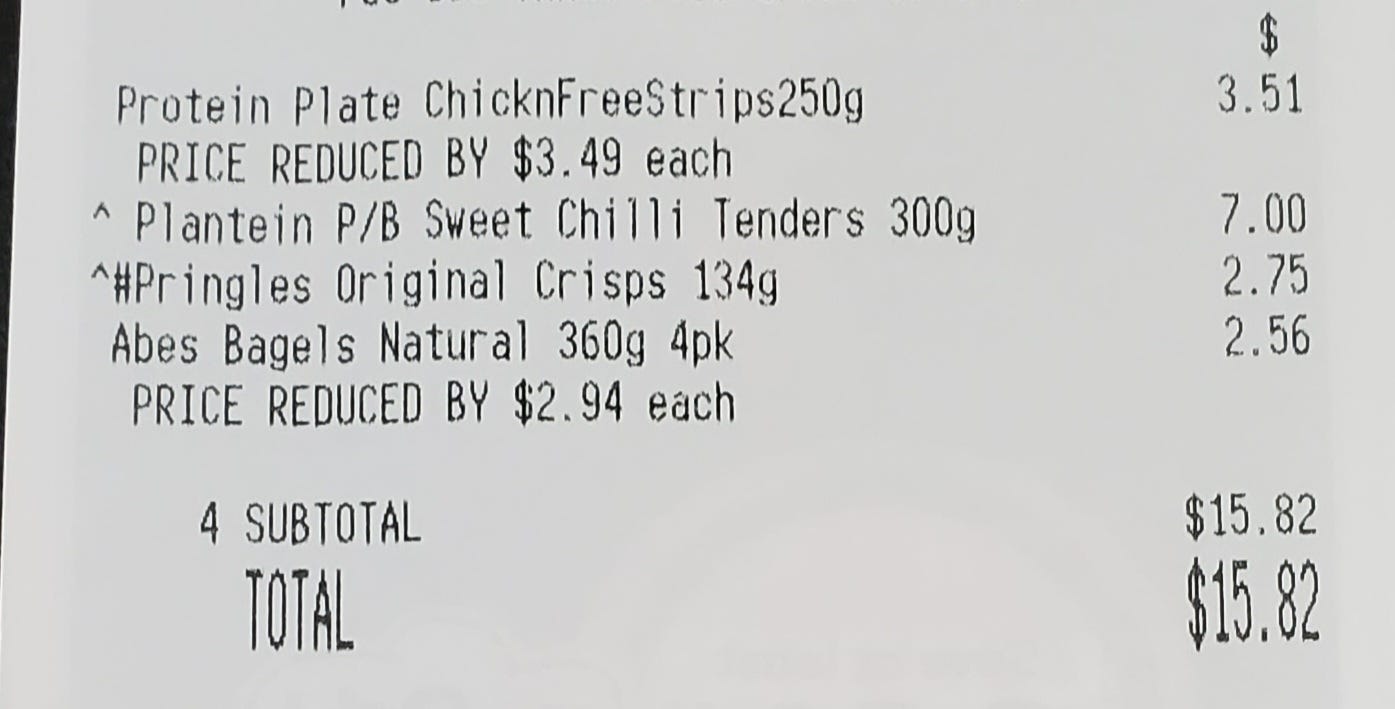
Trying to calculate tax
When shopping or dining in the US, it's hard to predict your total cost because sales tax is usually not included in the advertised prices. Plus, sale-tax rates vary widely at the local level.
In Australia, tax is already calculated into the final price on shelves and on restaurant bills. The advertised price is the final price.
Just about all goods and services are taxed at an even 10%. No surprises, and no awkward fumbling around for that extra dollar.

Ordering "regular coffee" and expecting American drip coffee
When you try to order "a regular coffee" or a "black coffee" here, you'll probably just confuse your barista .
"Drip" or brewed coffee is not really a thing in Australia. When you order coffee here, you'll most likely be served espresso-based drinks.
Fortunately, Australia makes some of the best coffee in the world .
You have options like cappuccino, flat white, mocha, etc. If you're craving a drip coffee, the closest you'll get is a long black, which is a shot of espresso in hot water.
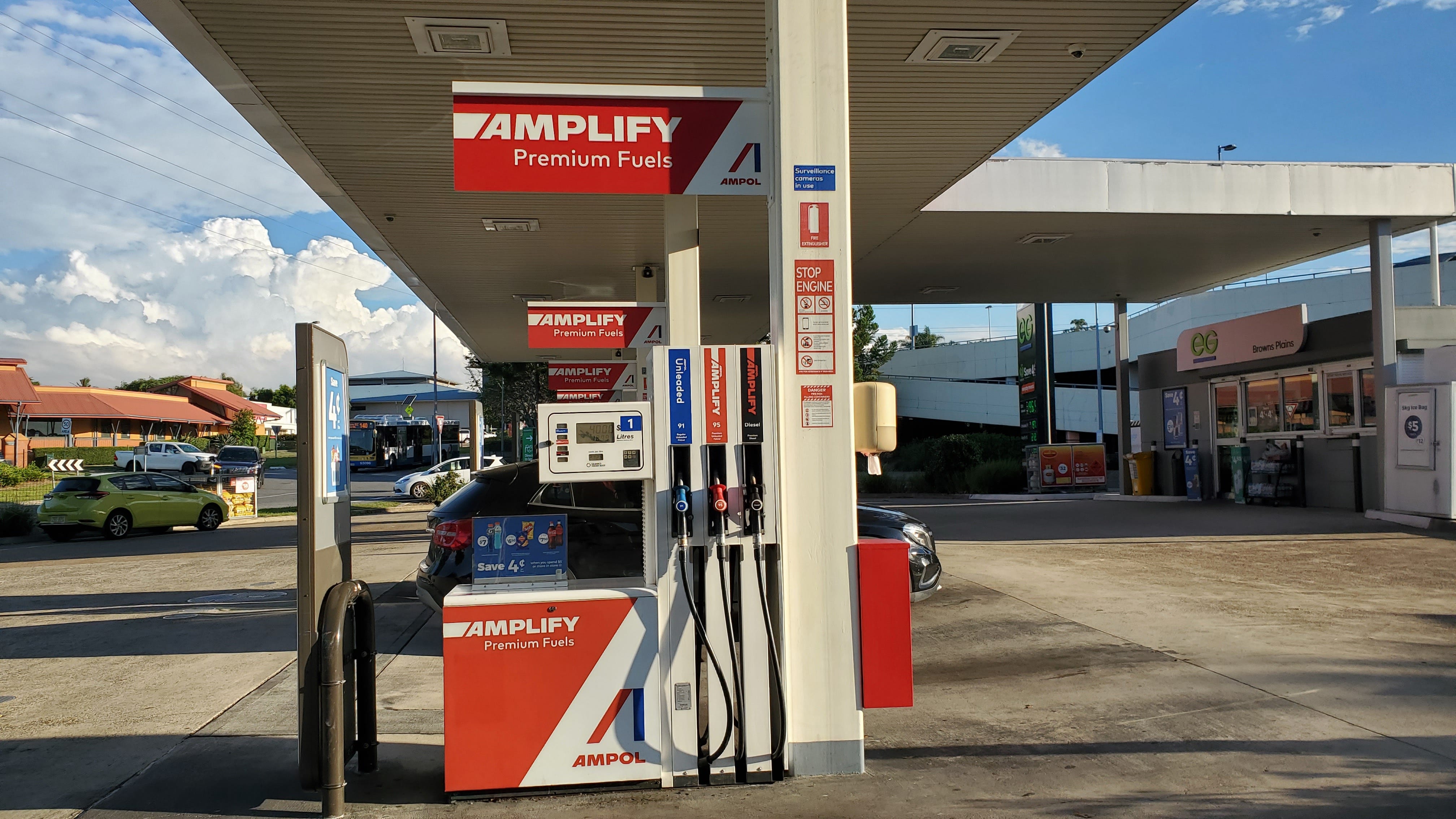
Trying to prepay for gas
There are a few ways pumping gas — or "petrol," as Aussies call it — differs from the US.
In the US, I usually either paid at the pump or prepaid inside before pumping gas. But, other than a few Costco locations, I've yet to find any gas station here that allows me to pay with my card at the pump.
In Australia, you pump your gas and then pay. You have to go inside to pay for your gas — perhaps this helps encourage customers to spend more money at the servo (gas station).
This practice is actually common in a number of places around the world, it's just not the norm in the US .

Confusing Australian Target with American Target
Americans are obsessed with Target , and it's only upon visiting Australian Target that I can understand why the phenomenon stirs such confusion here.
Surprisingly, these two separate corporations have nothing to do with each other despite their shared name and remarkable likeness.
Perhaps I'm biased but, in my opinion, Australian Target is underwhelming compared to the department stores we have back home. Unlike the beloved US chain, these Targets don't have a grocery section or mini food court with a Starbucks or Pizza Hut.
Plus, the Aussie versions of Target tend to be tinier with a smaller variety of products. I much prefer Australia's Kmart stores, which are also not related to the American version with the same name.

Not learning Australian slang
Believe it or not, this point is not for non-English speakers. I've found English fluency will not help you much here because there's Aussie slang or abbreviation for just about every word in the English dictionary.
The slang often follows two principles: Shorten the word and make it much more fun to say.
Tons of Australian slang involve shortening a word to its root and ending an -o suffix, like servo, arvo, avo, smoko, and bottle-o. Those were: service station, afternoon, avocado, smoke session, and bottle shop (liquor store).
However, memorizing those principles alone won't be enough to get by. Aussies change McDonald's to Macca's, mosquito to mozzie, breakfast to brekky, cooler to esky, and so on.
I recommend looking up a list of Australian slang words and memorizing the most common ones before you visit. Over time, you'll hopefully get the hang of it.
More for You
The most expensive state to live in isn't California or New York, based on data. Here are the top 10.
iPhone users in 92 countries received a recent stark warning
One of the world's biggest cities is sinking, so they're spending $35 billion to build a new capital from scratch. Take a look at Nusantara.
Lindsey Graham Confronted on Enquirer's 'Catch and Kill' Plot to Help Trump
The World's Oldest Bodybuilder Shared His Secret to Staying Fit
Here's How Often You Should Wash Your Hair, According to Experts
This Social Security Spousal Rule Is Officially Finished in 2024 — But These 3 Strategies Remain
Map reveals best places to live in the US if nuclear war breaks out
The first interracial kiss aired on TV more than 55 years ago—and more shows that broke racial barriers
"You win the game, do whatever you want" - Kevin Durant has no problem with Anthony Edwards' DX taunt in Game 3
Alienware M18 R2 Gaming Laptop Review: When Speed Is of the Essence
Blood pressure is best lowered by 2 exercises, study finds
The Challengers Score Should Be Played at the Club
Drone attack on Russian airfield - Satellite images of consequences appeared
Genshin Impact: Praetorian Golem Locations
3 reasons you keep waking up in the middle of the night
The 26 Most Dangerous Cities in the U.S. Ranked
What happens if you don't use airplane mode on your flight? Here's the answer to that, and more common travel questions.
'9-1-1' Fans, There's a Good Reason Why There Is No New Episode Airing Tonight
What Do All the Heart Emojis Mean? A Guide To Using the Symbols of Love
More From Forbes
Where was ‘anyone but you’ filmed all the stunning locations from the rom-com.
- Share to Facebook
- Share to Twitter
- Share to Linkedin
Sydney Sweeney and Glen Powell in "Anyone But You."
Anyone But You finally made its Netflix streaming debut, which is exciting news for rom-com fans everywhere. As you watch the movie, you might be wondering where Anyone But You was filmed and if you can visit the breathtaking beaches, cliffs, and other locations in real life.
Loosely adapted from Shakespeare’s “Much Ado About Nothing,” Anyone But You stars Glen Powell as Ben, a finance bro who has an incredible first date with Bea (Sydney Sweeney), a law student uncertain about her career. After spending the night, Bea panics and leaves without telling him. When she realizes she made a mistake and returns to his apartment, she overhears Ben saying that she is a “nothing” to him.
Years later, they unexpectedly reunite at a destination wedding in Australia for Bea’s sister, who is marrying Ben’s friend. When their exes show up, they pretend to be a couple—and the rest is history. The film was directed and co-written by Will Gluck, the filmmaker behind rom-coms like Easy A and Friends with Benefits . It was released in December and had an impressive run at the box office, surpassing $88 million domestically and $219 million worldwide, according to Box Office Mojo .
After its release, the movie went viral on TikTok as audience goers reacted to the film’s credit sequence, which features the cast dancing and singing to Natasha Bedingfield’s nostalgic 2004 hit “Unwritten,” a song highlighted throughout the film. There were also rumors of an off-screen romance between Powell and Sweeney that helped promote the film, as well as the actors’ flirty publicity tour and Sydney Sweeney’s SNL monologue .
Now, Anyone But You is back in the limelight after the film was released on Netflix on April 23, quickly becoming the No. 1 movie on the platform in the U.S. after just one day.
Microsoft Warns Windows Users Of Ongoing Russian Hack Attack
Apple id password resets are hitting iphone ipad mac users, new ios 18 ai security move changes the game for all iphone users, where was anyone but you filmed.
Anyone But You was filmed in parts of Australia around New South Wales and Sydney. Director Will Gluck told The Hollywood Reporter that he wanted the film set in Sydney because he had “really fallen in love with the city” and liked it so much he moved his family there.
“Almost every time you shoot a movie in Sydney, you have to pretend it’s somewhere else and frame out the Opera House and the Harbour Bridge. For Anyone But You , I thought, “Why do that?” We actually wrote this movie 100 percent for Sydney — very specific to the destination,” Gluck wrote.
The director continued, “We flew helicopters all over — seeing the city from that vantage point is stunning — and landed one at the Opera House, shut down the Harbour Bridge, filmed at the Queen Victoria Building, and shot for two weeks overlooking Bondi Beach,” he said. “We spent a week on a boat in Sydney Harbour shooting a scene where they’re stranded on a buoy, but you can’t have humans in the water without a shark cage, so we had to have one the whole time. You pinch yourself. It’s so unbelievable we were actually doing these things.”
Here are a few specific Anyone But You filming locations you can visit in person.
Sydney Opera House
The Sydney Opera House is a focal point in Anyone But You. The 20th-century architectural landmark serves as a gorgeous backdrop for big moments, including the end scene when Ben passionately kisses Bea, who is standing at the top of the steps. You can visit the performing arts center for special events and tours.
Marks Park, Bondi
Located in Sydney's northern suburbs, the wedding scene in Anyone But You was filmed at Marks Park overlooking Bondi Beach and the Pacific Ocean. The cliff-top park is open to the public and has fitness stations, a playground, and some shaded areas.
SYDNEY, AUSTRALIA - APRIL 01: A general view of North Palm Beach on Sydney's Northern Beaches, on ... [+] April 01, 2024, in Sydney, Australia (Photo by Steve Christo - Corbis/Corbis via Getty Images)
Many of Anyone But You ’s breathtaking beach scenes were filmed around Palm Beach. Director Will Gluck told THR that one of the best parts of filming was on location in Palm Beach, a suburb in the Northern Beaches.
“Our caravans were parked right on the water, and Glen and Sydney and I decided to live there the whole time. We’d shoot all day and all the crew would go home, then we’d jump in the water and have a swim, go to our trailers and have dinner sitting outside,” he said. “It’s one of the most beautiful places in the world, and you normally wouldn’t be allowed to sleep there. It was probably the most fun I’ve ever had filming.”
Jones Bay Wharf
Jones Bay Wharf in Sydney Harbour's Pyrmont.
The historic Jones Bay Wharf is another familiar filming location in Anyone But You. The hidden gem in the Pyrmont district is home to fine dining restaurants, charming cafes, and beautiful views the of the city and Harbour Bridge.
Queen Victoria Building
Queen Victoria Building in Sydney, Australia.
While on their way to collect flowers for the wedding, Ben and his friend Pete are seen walking alongside the Queen Victoria Building. The Romanesque 19th-century building is actually a five-level shopping center with fashion boutiques, jewelry stores, cafes, and restaurants.
Anyone But You is now streaming on Netflix.

- Editorial Standards
- Reprints & Permissions
- International edition
- Australia edition
- Europe edition

Nicole Kidman given life achievement award by American Film Institute
Oscar-winner is first Australian actor to receive honour as Meryl Streep says it is ‘impossible not to be in awe of her’
Nicole Kidman has been honoured with an American Film Institute life achievement award at a ceremony in which stars shared stories of “quite simply one of the greatest actresses”.
The Oscar-winner became the first Australian actor to receive the highest honour for a career in film at AFI, during a ceremony that featured speeches from Meryl Streep, Morgan Freeman, Reese Witherspoon, and Kidman’s husband, Keith Urban.
The Gala Tribute at the Dolby Theatre in Los Angeles also included appearances from Kidman’s former co-stars including Miles Teller from Rabbit Hole, The Paperboy’s Zac Efron, Zoe Saldana from Special Ops: Lioness, and Joey King from the upcoming film A Family Affair.
The ceremony opened with a video of Freeman in a parody of Kidman’s AMC Theatres advert, before he took to the stage telling the audience that the 2001 film Moulin Rouge, starring Kidman and Ewan McGregor, was “one of my favourite films of all time”.
Streep, who co-starred in The Hours which won Kidman an Oscar in 2003, presented the award.
She joked that “the very hardest part of being incessantly called the greatest actress of our generation” was working with really great actors such as Kidman – “that’s difficult”.
“The range of your work is stunning, your list of credits and roles and good deeds in the world would take a normal person three lifetimes to achieve,” she said. “Your life and your résumé challenge everything we know about how many hours there are in the day and how many places a woman can be in one time. It’s hard not to envy Nicole, but it is also impossible not to be in awe of her.”
Streep said she was “floored” by Kidman’s performance on the first day of shooting the TV series Big Little Lies. “That’s the time I came within breathing distance of the formidable gifts Nicole has, and her process, and her seismic bank of emotions that she’s got locked up within her, and her stamina and her drive to be an artist and her discipline. I haven’t recovered from that first day, I have never seen anything like that in my life.”
Collecting her award, Kidman said Streep has been her “guiding light” during her career, adding: “It has always been you, and no one can touch you.”
Kidman praised all the directors she has worked with, including The Hours director, Stephen Daldry, who was “by my side during the most vulnerable, difficult time of my life – you held my hand, you got me through it and you won me an Oscar”.
Naomi Watts spoke of meeting Kidman aged 15 at an audition for a swimsuit advert, and Kidman offering to pay her taxi fare home, beginning their “decades-long” friendship.
“Nic has always been the most generous person – she has opened up her homes to me, she has made me feel like a part of her family, she was like the sister I never had,” Watts said. “She’s incredibly supportive of other women. For 10 years when I lived very much under the radar, she repeated to me: ‘One thing Nad, one thing will change everything, I swear, just hang in there.’ And she was right. And yes, she saved me. So many times.”
Among those who made virtual appearances was Russell Crowe, who described Kidman as “quite simply one of the greatest actresses who have ever worked in this business”.
Kidman had been due to be presented with the award on 10 June last year but the ceremony was postponed indefinitely due to the writers’ strike, which was resolved in September after 146 days on the picket line.
Kidman has been nominated for five Academy Awards and has won a Bafta, two Emmys and six Golden Globe awards.
- Nicole Kidman
- Awards and prizes
Most viewed
Nicole Kidman becomes first Australian to win American Film Institute Lifetime Achievement Award
Nicole Kidman will become the first Australian actor to receive a lifetime achievement award from the American Film Institute.
Dubbed the highest honour in American cinema, the accolade has been won by the likes of Julie Andrews, Al Pacino, Denzel Washington, George Clooney, Meryl Streep Morgan Freeman and many other iconic figures in the industry.
The Academy Award winner who grew up in Sydney said on social media she was "deeply moved" to be a recipient.
"Thank you to all of you and to the American Film institute for including me in this illustrious group of honorees — now let's have some fun!" she wrote on Instagram.
Earlier, she posted a video of her starring in her first film, Bush Christmas, when she was a teenager in 1983.
"This 14-year-old girl could never have predicted the talented people she would get to work with and the many different characters she would get to play," she wrote.
Streep, Freeman, Reese Witherspoon and Naomi Watts paid tribute to the actress during the ceremony at the Dolby Theatre in Lose Angeles.
"Both a powerhouse performer, spellbinding movie star and accomplished producer, Nicole Kidman has captured the imaginations of audiences throughout her prolific career, delivering complex and versatile performances on-screen," the initial announcement by the AFI read.
"She is a force both brave in her choices and bold in each performance. AFI is honoured to present her with the 49th AFI Life Achievement Award."
Contributions to film
A five-time Academy Award nominee, Kidman's performance as Virginia Woolf in The Hours earned her the Oscar for Best Actress in 2003.
She has also been in notable films such as her breakout role Dead Calm, Batman Forever, Practical Magic, Moulin Rouge, Australia, Rabbit Hole, Paddington, Lion, and To Die For.
In television, she starred in and produced critically acclaimed shows such as Big Little Lies, Nine Perfect Strangers, The Undoing, and Hemingway and Gellhorn.
Kidman has also enjoyed success in Theatre shows in London's West End.
One of Australia's most successful exports in Hollywood, Kidman was honoured back home with The Companion of the Order of Australia in 2006.
Nadine Whitney, co-chair of the Australian Film Critics Association, said Kidman's success can be attributed to the risks she takes with roles.
"She has been in absolute blockbusters — in fact she's at the point now where she is quite literally playing Queens. But for every Chase Meridian (Batman Forever) or Queen Atlanna (Aquaman) there is her ability to go into small and somewhat dangerous roles," she said.
"For example playing Diane Arbus in Fur or coming back to Australia to do a tiny film like Strangerland.
"It is her ability to go against the grain of what people expect from her that makes her a star."
Ms Whitney said she's encouraged by the celebration of a female Australian actor.
"It is a watershed moment for not only women in cinema but also Australian talent recognition," she said.
"I hope one day we will see career awards for Cate Blanchett too."
In 2017, the Cannes Film Festival honoured Kidman with the 70th Anniversary Prize for her body of work and longstanding history with the festival — she is one of only eight people to receive this honour.
The American Film Institute's Lifetime Achievement Award was established in 1950 and only 11 women have received it.
Who was on the red carpet?
While Kidman was the star of the show, she wasn't the only big name on the red carpet beforehand.
And because it's been too long since awards season and it's still a week until the MET Gala, we couldn't let this event slip without taking a look at the looks.
Here's a wrap of who else was there — and what they were wearing.
- X (formerly Twitter)
Related Stories
'i have peed in the bush': nicole kidman on what it takes to be successful in hollywood.
- Arts, Culture and Entertainment
- Awards and Prizes
- Film (Arts and Entertainment)
- Film Industry
- United States
Adelaide Film Fest Picks Five Works in Progress for Cannes’ Showcase, With Giant, Drafthouse’s ‘Mockbuster’ Making the Cut (EXCLUSIVE)
By Annika Pham
Annika Pham
- Adelaide Film Fest Picks Five Works in Progress for Cannes’ Showcase, With Giant, Drafthouse’s ‘Mockbuster’ Making the Cut (EXCLUSIVE) 5 days ago
- ‘Flood’ Director Katy Scoggin on Exploring Her Own Escape From Christian Fundamentalism in Visions du Réel Doc (EXCLUSIVE) 2 weeks ago
- Visions du Réel Lebanese Doc ‘We Are Inside’ Debuts Trailer: ‘It’s About Change in My Father, in Me, in My Country’ (EXCLUSIVE) 2 weeks ago

South Australian Anthony Frith’s close encounter with “ Sharknado ” production company The Asylum in “Mockbuster” is among five titles to be showcased at the Adelaide Film Festival Goes to Cannes showcase, held at Cannes Marché du Film on May 17.
The five works in progress range from queer adult anime, comedic doc, and traditional non-fiction to family dramas, helmed mostly by newcomers, and reflect the dynamic filmmaking community of Southern Australia, set to tempt potential co-financiers in Cannes.
Popular on Variety
Three of the works in progress to be pitched at Cannes – “Lesbian Space Princess”, “With or Without You” and “Kangaroo Island” – will premiere at the upcoming Adelaide Fest (Oct. 23-Nov. 3). Here is a rundown of the five projects:
“The Iron Winter,” (Kasimir Burgess, Australia-Mongolia)
“Kangaroo Island,” (Timothy Piper, Australia)
From newcomer Piper, a movie about a struggling Hollywood actress who returns home to Kangaroo Island and confronts the love triangle that tore her family apart. In the title roles are Rebecca Breeds (“Clarice”), Erik Thomson (“Black Snow”), Adelaide Clemens (“Justified: City Primeval) and Joel Jackson (“Mystery Road”). Piper is producing with Daniel Rosenberg, Peter Hanlon, Bettina Hamilton and Leona Cichon for Pouch Potato Productions. Maslow Entertainment will handle distribution in Australia and New Zealand.
“Lesbian Space Princess,” (Emma Hough-Hobbs, Leela Varghese, Australia)
An animated space comedy produced by Tom Phillips of We Made A Thing Studios, its story turns on an anxious space princess who is thrust out of her sheltered life and into a galactic quest to save her bounty hunter ex-girlfriend from the Straight White Maliens. “This film will be a hilarious love letter to lesbians, an ode to low-budget anime and most importantly, heaps of fun,” says Varghese.
“Mockbuster,” (Anthony Frith, Australia)
Directed by Frith and produced by Mostly True Media’s Sandy Cameron and Walking Fish Productions’ David Eliot-Jones and Noami Ball. In his feature debut, Frith tries to navigate the eccentric world of B-movie flag-bearers The Asylum. “It’s a “comedic, behind-the-scenes documentary making of a B-grade smash, that is both an unashamed celebration of trash cinema and a forensic look at the collision between art and commerce,” says Cameron about the project, due for completion late 2024.
“With or Without You,” (Kelly Schilling, Australia)
By debut director Schilling, “With or Without You” is produced by the seasoned Su Armstrong (“Angel of Mine”) for SixtyFourSixty and Carolyn Johnson Films. Marta Dusseldorp (“Bay of Fires”) and Melina Vidler (“Elvis”) star as a mother and daughter who set off on an unexpected road trip with a stranger from another land (Albert Mwangi), that turns into a journey of love, humour and redemption. Armstrong says she fell for Schilling’s passionate voice and her story of intergenerational trauma and hope, inspired by the helmer’s own experience.
The five Australian works in progress will vie for the first €10,000 ($10,700) Goes to Cannes Award, to be handed out May 20.
More From Our Brands
President biden and netanyahu discuss cease-fire deal, humanitarian aid, aston martin’s fastest-ever vantage makes formula 1® debut, mlbpa rips nike amid changes to controversial uniforms, be tough on dirt but gentle on your body with the best soaps for sensitive skin, the conners is losing its wednesdays-at-8 time slot on abc — find out why, verify it's you, please log in.
site categories
‘american idol’ winner just sam returned after going viral for singing in nyc subways: “this is way better than an iphone from home”, breaking news.
Nicole Kidman’s Career In Photos: From ‘Days of Thunder’ And ‘Eyes Wide Shut’ To ‘Moulin Rouge!’
By Robert Lang
Robert Lang
Photo Editor
More Stories By Robert
- Oscar Nominees 2024: The Class Photo
- ‘Finestkind’: First Look At Brian Helgeland’s Crime Thriller Starring Jenna Ortega, Tommy Lee Jones & Ben Foster Ahead Of TIFF World Premiere
- ‘One Piece’ Cast Photos: Luffy & The Straw Hats Share Thoughts On Their Characters In Netflix Live-Action Series Adaptation

Nicole Kidman has captivated audiences with her spellbinding acting for over 40 years and has excelled in theatre, film, and television. Not only is she an accomplished producer but a five-time Academy Award nominee. Her role as Virginia Woolf in The Hours (2002) earned her the Oscar for Best Actress in 2002.
Born in Honolulu, Hawaii in 1967, she began her career in Australia as a teenager with roles in Bush Christmas (1983) and BMX Bandits (1983). Her performance in Dead Calm (1989) would grab the attention of Hollywood, and Tom Cruise, casting her in her breakout role as neurologist Dr. Claire Lewicki, in Days of Thunder (1990).
Her trajectory to establishing herself among Hollywood’s A-List continued as she starred alongside Cruise again in Far and Away (1992), mastered her comedic acting chops as an aspiring television personality in Gus Van Sant’s black comedy, To Die For (1995), and portrayed another doctor in the superhero film Batman Forever (1995), opposite Val Kilmer.
Kidman made a highly lauded London stage debut in the fall of 1998, starring with Iain Glen in The Blue Room , David Hare’s modern adaptation of Schnitzler’s La Ronde . For her performance, Kidman won London’s Evening Standard Award and was nominated in the Best Actress category for a Laurence Olivier Award. Other standout performances include Stanley Kubrick’s Eyes Wide Shut (1999); and Baz Luhrmann’s Moulin Rouge! (2001); Jonathan Glazer’s Birth (2004) and Yorgos Lanthimos’s The Killing of a Sacred Deer (2017).
Her most recent projects in television include Expats (2024), Special Ops: Lioness (2023), Nine Perfect Strangers (2021), and the critically acclaimed, The Undoing (2022).
Throughout her distinguished career, Kidman has won a BAFTA Award, two Emmys, and six Golden Globes – and is widely regarded as one of the finest actresses of her generation. She co-founded her production company Blossom Films in 2010. Kidman has earned a reputation for her extraordinary talent, commitment to her craft, and desire to work with auteur filmmakers including Jane Campion, Sofia Coppola, Anthony Minghella, Sydney Pollack, Lars von Trier, and Aaron Sorkin.
Take a look back at Nicole Kidman’s career in film and television.
BMX BANDITS, 1983

Angelo D’Angelo, James Lugton, and Nicole Kidman
DEAD CALM, 1989

Nicole Kidman and Sam Neill
BANGKOK HILTON, 1989

Nicole Kidman
DAYS OF THUNDER, 1990

Nicole Kidman and Tom Cruise
FLIRTING, 1991

Thandie Newton and Nicole Kidman
BILLY BATHGATE, 1991

Bruce Willis and Nicole Kidman
FAR AND AWAY, 1992

Tom Cruise and Nicole Kidman
MALICE, 1993

Nicole Kidman and Bill Pullman
MY LIFE, 1993

Michael Keaton and Nicole Kidman
TO DIE FOR, 1995

BATMAN FOREVER, 1995

Val Kilmer and Nicole Kidman
THE PORTRAIT OF A LADY, 1996

THE PEACEMAKER, 1997

George Clooney and Nicole Kidman
PRACTICAL MAGIC, 1998

Nicole Kidman and Sandra Bullock
THE BLUE ROOM, 1998

Nicole Kidman and Iain Glen onstage
EYES WIDE SHUT, 1999

MOULIN ROUGE!, 2001

THE OTHERS, 2001

BIRTHDAY GIRL, 2002

Nicole Kidman and Ben Chaplin
THE HOURS, 2002

Nicole Kidman and Stephen Dillane
DOGVILLE, 2003

THE HUMAN STAIN, 2003

Nicole Kidman and Anthony Hopkins
COLD MOUNTAIN, 2003

Jude Law, Nicole Kidman, and Donald Sutherland
THE STEPFORD WIVES, 2004

Matthew Broderick and Nicole Kidman
BIRTH, 2004

THE INTERPRETER, 2005

BEWITCHED, 2005

Nicole Kidman, Shirley MacLaine and Will Ferrell
FUR: AN IMAGINARY PORTRAIT OF DIANE ARBUS, 2006

THE INVASION, 2007

MARGOT AT THE WEDDING, 2007

Jennifer Jason Leigh and Nicole Kidman
THE GOLDEN COMPASS, (aka HIS DARK MATERIALS: NORTHERN LIGHTS), 2007

AUSTRALIA, 2008

Nicole Kidman and Hugh Jackman

Nicole Kidman and Daniel Day-Lewis
RABBIT HOLE, 2010

Nicole Kidman and Aaron Eckhart
TRESPASS, 2011

Nicolas Cage and Nicole Kidman
THE PAPERBOY, 2012

STOKER, 2013

Mia Wasikowska, Nicole Kidman and Matthew Goode
THE RAILWAY MAN, 2013

Colin Firth and Nicole Kidman
GRACE OF MONACO, 2014

BEFORE I GO TO SLEEP, 2014

PADDINGTON, 2014

STRANGERLAND, 2015

Nicole Kidman and Joseph Fiennes
QUEEN OF THE DESERT, 2015

Nicole Kidman and Robert Pattinson
THE FAMILY FANG, 2015

Nicole Kidman and Jason Bateman
SECRET IN THEIR EYES, 2015

Chiwetel Ejiofor and Nicole Kidman
GENIUS, 2016

HOW TO TALK TO GIRLS AT PARTIES, 2017

THE KILLING OF A SACRED DEER, 2017

Nicole Kidman, 2017
TOP OF THE LAKE (aka TOP OF THE LAKE: CHINA GIRL), 2017

Nicole Kidman and Alice Englert
THE BEGUILED, 2017

Elle Fanning, Nicole Kidman, Kirsten Dunst, Angourie Rice, Oona Laurence, Emma Howard, and Addison Riecke
THE UPSIDE, 2017

Bryan Cranston, Nicole Kidman, and Kevin Hart
DESTROYER, 2018

BOY ERASED, 2018

Nicole Kidman and Lucas Hedges
AQUAMAN, 2018

Temuera Morrison and Nicole Kidman
BIG LITTLE LIES, 2017-2019

Nicole Kidman, Reese Witherspoon, Zoe Kravitz, Shailene Woodley, and Laura Dern
THE GOLDFINCH, 2019

Nicole Kidman and Ansel Elgort
BOMBSHELL, 2019

Charlize Theron, Nicole Kidman, and Margot Robbie
THE UNDOING, 2020

Hugh Grant and Nicole Kidman
NINE PERFECT STRANGERS, 2021

BEING THE RICARDOS, 2021

Nicole Kidman as Lucille Ball, Javier Bardem as Desi Arnaz
THE NORTHMAN, 2022

Judy Davis and Nicole Kidman
SPECIAL OPS: LIONESS, 2023

Zoe Saldana as Joe and Nicole Kidman as Kaitlyn Meade in Special Ops: Lioness
AQUAMAN AND THE LOST KINGDOM, (aka AQUAMAN 2), 2023

EXPATS, 2023 – 2024

Brian Tee and Nicole Kidman
Must Read Stories
Joe biden & colin jost roast donald trump; red carpet + party photos.

CBS Axes Series After 3 Seasons; Lachey “Gutted”; Stars, Creators React
Zendaya’s ‘challengers’ looks to hit $15 million in its opening set, 86 top “career producers” launch collective to address fees, benefits & more.
Subscribe to Deadline Breaking News Alerts and keep your inbox happy.
Read More About:
No comments.
Deadline is a part of Penske Media Corporation. © 2024 Deadline Hollywood, LLC. All Rights Reserved.
SUPPORT SYDNEY FILM FESTIVAL
Help us celebrate cinematic excellence! Give a gift towards the Sydney Film Festival and inspire generations to come.
- Submissions
- Access and Inclusion
- Festival Hub
- Volunteer with SFF
- Buying Tickets
- Flexipasses
- Gift Vouchers
- Subscriptions
- Travelling Film Festival
- Archives Renewal
- Past Initiatives
- The Director’s Patrons
- Corporate Partners
- Government Partners
- Corporate Opportunities
- Our Organisation
- Living Archive
- Media Releases
Learn how you can help
Become a Director's Patron Learn how you can help
Keep TFF Alive: Your donation will ensure the Travelling Film Festival can return to play a vital role in the recovery of our community and our local film industry.

Don’t miss a thing
Sign up to our newsletter for all the latest news and offers.
Whether you're in Sydney or any of our rural TFF Centres, we have a newsletter for you.
Select Newsletters
Your in cinema cart is empty.
View over 500 sessions to find the right films and events for you!
Browse In Cinema Program
Check out our list of films showing in your area
Browse Films
Your planner helps you schedule your entire SFF experience. It shows sessions you've saved, purchased or added to your cart in a helpful timeline.
Sign in or register to save your planner!
Your planner is empty.
Use your planner to create your own unique SFF Experience
Browse Films & Events
or create an account
Stay Updated
- Festival Info
- Films & Events
- Our Partners
- The Living Archive
- Terms & Conditions
- Privacy Policy
- Individual Support
- Partnerships
- SFF Office: 9am—5pm
- GENERAL ENQUIRIES
- 02 8220 6600
- [email protected]
- TICKETING ENQUIRIES
- 1300 733 733
- [email protected]

COMMENTS
When traveling with film, we always allow an extra ten to fifteen minutes to get through security (a margin we rarely need). We recommend carrying your film in a clear plastic zip-lock-style bag, with which TSA is familiar. Leave your rolls in their plastic canisters and/or sealed packaging whenever possible.
Roll film, like color or black & white 35mm film and Medium Format film, are most likely what you will be taking on plane if you are traveling with film at all. The good news is that both 35mm and medium format film can go through airport security, but you will need to exercise precaution.
Hi all, I will be travelling from Australia next month through Adelaide, Melbourne, Singapore, London Heathrow, ... And you need to understand that while traveling, the film passes through the scanner more than just once. This is very unpleasant to get the base ≈0.35 instead of ≈0.15. If you are an amateur and shoot 35mm, scan it and ...
While this isn't specifically film, but a film camera, you may be wondering if you can travel with a Polaroid camera. Yes, you can! When it comes to Polaroid film, the same science as undeveloped 35mm and 120mm film applies here. Polaroid film below ISO 800 should be fine, but anything exceeding 800 is likely to get damaged in airport scanning.
4. Take a changing bag along in case it is needed for checking cameras with film in them or sheet film in film holders. 5. Be polite, helpful and patient. Remember that the security staff have been employed to protect the travelling public. 6. Consider buying film in the duty free area of the airport after bags have been inspected. 7.
H ow to travel with film, another seemingly tricky question within the long list of analogue photography myths and fairy tales. But do not fear! 😊 This article aims to answer all your film photography travel questions, so by the time holidays are back on the cards you will be ready and raring to go - with your analogue gear safely in hand.
We recommend leaving your film in the unopened manufacturer's packaging. In summary: - Never put your film in a checked bag. - Keep your film in a clear, plastic baggie and request a "hand check.". - Avoid traveling with film faster than ISO 400. - Include one roll of old, fast film in your supply.
Despite its greatly reported demise, film is proving to be alive and well among a small yet loyal pool of photo enthusiasts, hipsters, and Luddites. Judging by the bump in price of used film cameras over the past few years, the numbers of this pool are growing. That's the good news. The not-so-good news is traveling with film—especially flying with film—which requires more pre-planning ...
Travelling with film is not that difficult. However, if precautions are not taken, standard security screening, namely X-ray scanning, can irreversibly damage unprocessed film. This damage takes the form of "fogging" the film, a bit like opening the back of a camera half way through a roll. Film is sensitive to radiation, of which visible ...
Picnic at Hanging Rock. Film. Never has a film made us so desperately long to get utterly and completely lost as Peter Weir's dreamily erotic take on Joan Lindsay' s Victoria-set mystery novel ...
Tracks: Directed by John Curran. With Lily Pearl, Mia Wasikowska, Philip Dodd, Fiona Press. A young woman goes on a 1,700-mile trek across the deserts of West Australia with four camels and her faithful dog.
The Travelling Film Festival (TFF), is Sydney Film Festival's touring festival. It showcases Australian and international features, documentaries and short films in regional Australia.
Australia is a 2008 epic adventure drama film directed by Baz Luhrmann and starring Nicole Kidman and Hugh Jackman.The screenplay was written by Luhrmann and screenwriter Stuart Beattie, with Ronald Harwood and Richard Flanagan.The film is a character story, set between 1939 and 1942 against a dramatised backdrop of events across northern Australia at the time, such as the bombing of Darwin ...
Make a booking. Deals and travel packages. Find a travel agent. Find accommodation. From the outback to the coast, there's nowhere quite like Australia. Start planning your trip Down Under with our first-timer's guide to travelling Australia.
That said I've travelled with film often and I usually just let it pass through. Never noticed an effect and anecdotal accounts suggest even when explicitly testing for it the effect is imperceptible. Carry on scanners are weaker than checked luggage scanners, so if they outright refuse just chuck it on the tray with your wallet and let it be.
The Travelling Film Festival (TFF), Australia's longest running travelling film festival, showcases Australian and international features, documentaries and short films in regional Australia. TFF currently tours to 22 locations annually, screening in the Northern Territory, Queensland and New South Wales.
3. Muriel's Wedding (1994) Toni Collette is an Australian film and television star who went on to find international success and acclaim, but her break-out role was that of the titular character in Muriel's Wedding, one of the most beloved Australian films of the '90s.. Muriel is sick of being an object of ridicule for her family and friends in the dead-end (fictional) town of Porpoise Spit.
The Travelling Film Festival (TFF), Australia's longest running travelling film festival, showcases Australian and international features, documentaries and short films in regional Australia. TFF currently tours to over 20 locations annually, screening in the Northern Territory, Queensland and New South Wales. Founded by David Stratton in ...
I'm an American from Philadelphia who has spent the better part of four years living in and traveling through Australia. With its over-$100-billion tourism industry, the country sees millions of ...
Sydney Sweeney and Glen Powell in "Anyone But You." COURTESY OF SONY PICTURES. Anyone But You was filmed in parts of Australia around New South Wales and Sydney.Director Will Gluck told The ...
Travelling Film Festival returns to Townsville in 2023, bringing Australian and international features, documentaries and short films to regional Australia. SUPPORT SYDNEY FILM FESTIVAL. Help us celebrate cinematic excellence! Give a gift towards the Sydney Film Festival and inspire generations to come.
The Oscar-winner became the first Australian actor to receive the highest honour for a career in film at AFI, during a ceremony that featured speeches from Meryl Streep, Morgan Freeman, Reese ...
In short: Actress Nicole Kidman is the first Australian to receive the American Film Institute Lifetime Achievement Award. The auspicious award, previously won by luminaries such as Meryl Streep ...
Epic war-time survival tale "The Guns of Muschu" has already assembled a weighty cast ahead of a production start in the first quarter of 2025. The film is an adaptation of the non-fiction ...
In post-production, the project has received funding from Screen Australia, the South Australian Film Corporation, VicScreen and the Melbourne International Film Festival Premiere Fund. Bonsai ...
Take a look back at Nicole Kidman's career in film and television. BMX BANDITS, 1983. Image Credit: Everett Collection ... AUSTRALIA, 2008. Image Credit: Everett Collection Nicole Kidman and ...
The Travelling Film Festival (TFF), Australia's longest running travelling film festival, showcases Australian and international features, documentaries and short films in regional Australia. TFF currently tours to 22 locations annually, screening in the Northern Territory, Queensland and New South Wales.
Matt Pottinger, former Trump aide and China expert, explains to Fareed why he thinks the Biden administration should adopt a more hardline approach to China: "We need to recognize that Xi Jinping ...
Travelling Film Festival returns to Cairns in 2024, bringing Australian and international features, documentaries and short films to regional Australia. SUPPORT SYDNEY FILM FESTIVAL. Help us celebrate cinematic excellence! Give a gift towards the Sydney Film Festival and inspire generations to come.
Travelling Film Festival returns to Darwin in 2024, bringing the best new Australian and international features, documentaries and short films in regional Australia. SUPPORT SYDNEY FILM FESTIVAL. Help us celebrate cinematic excellence! Give a gift towards the Sydney Film Festival and inspire generations to come.